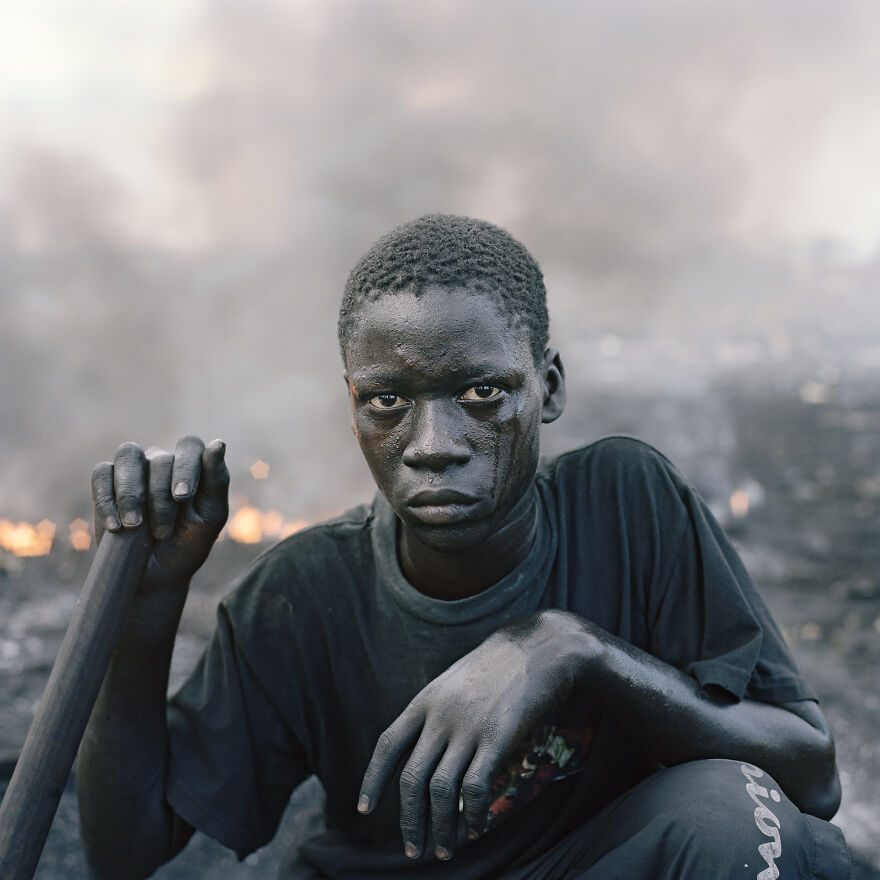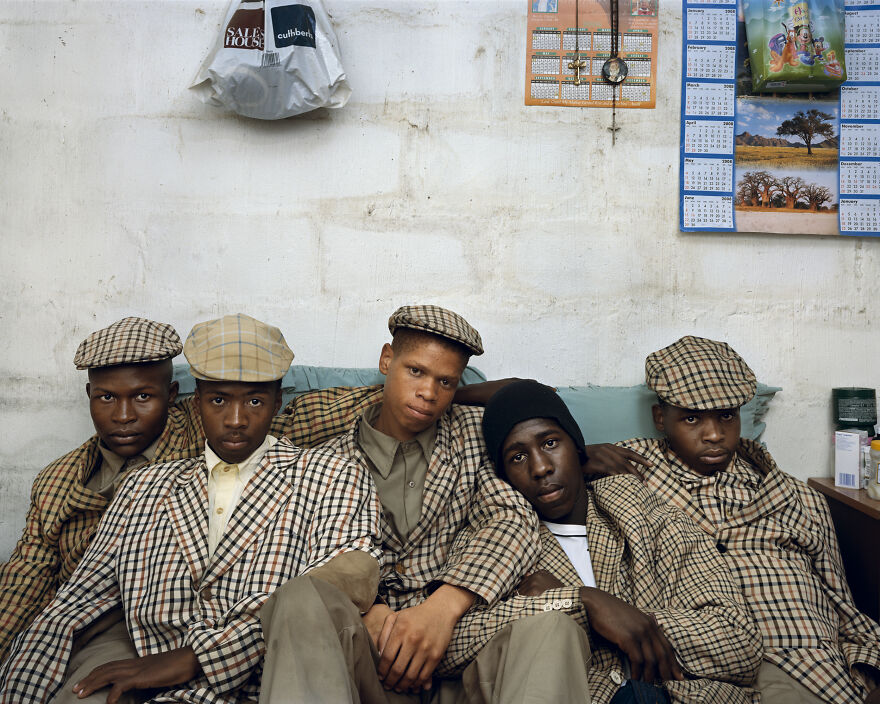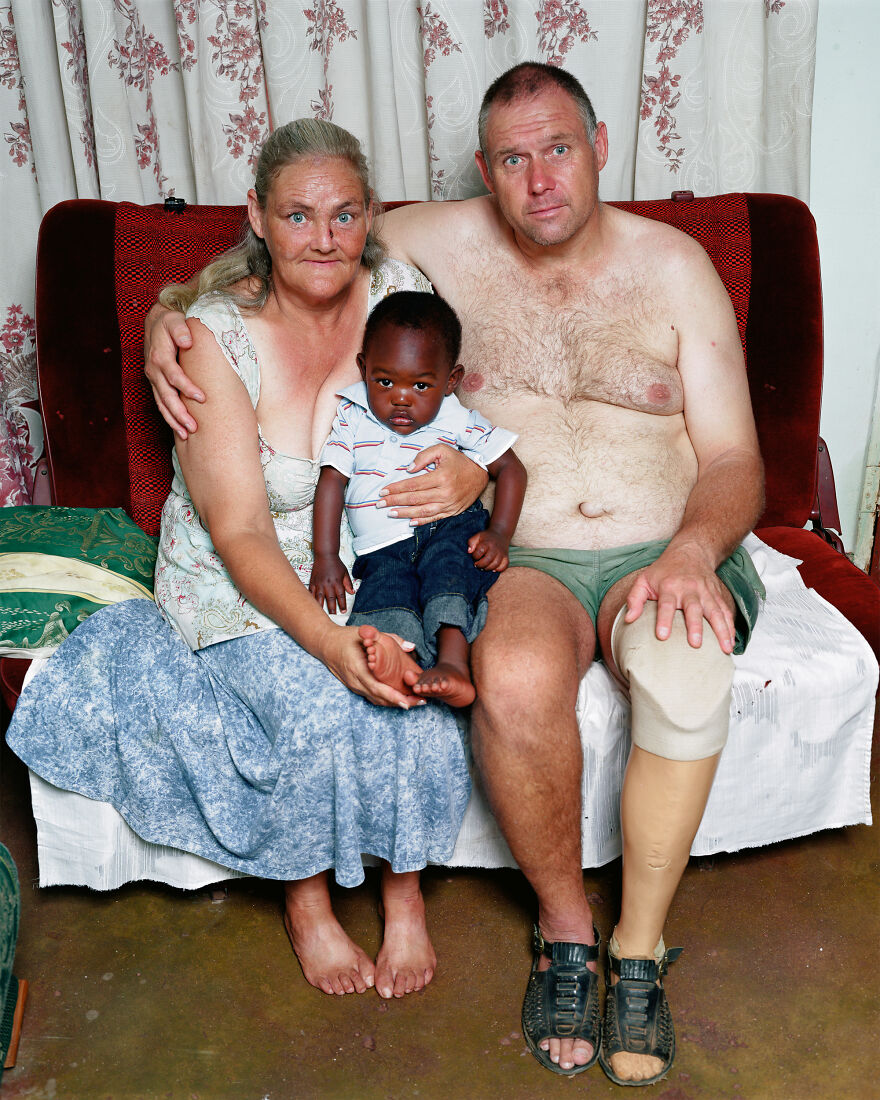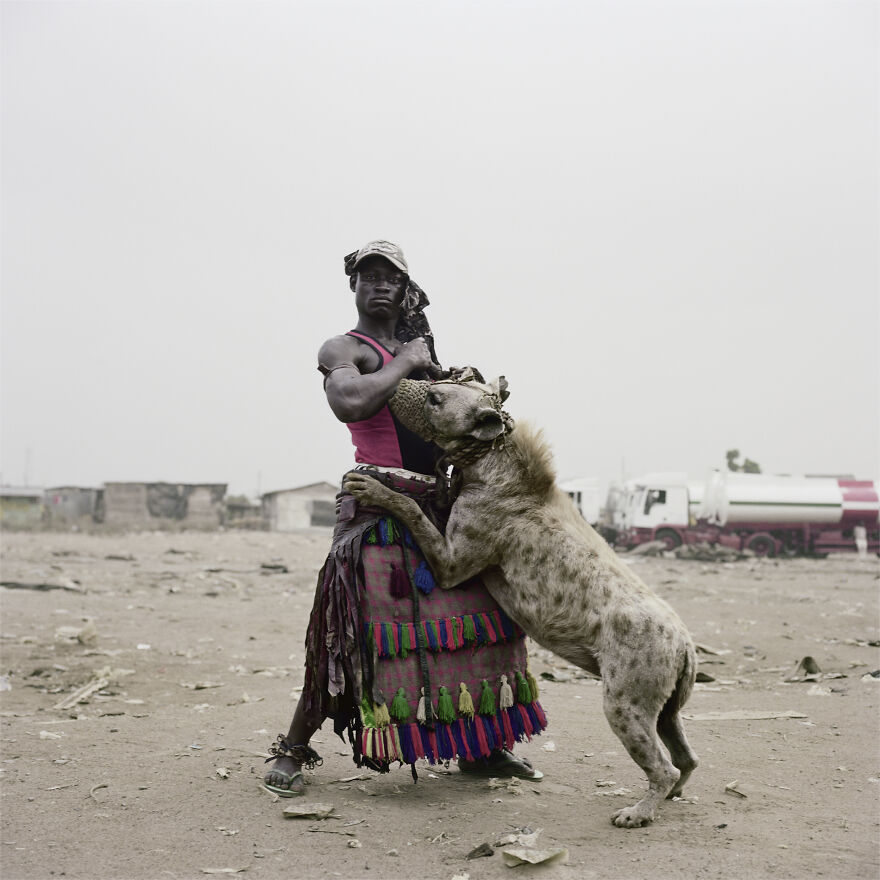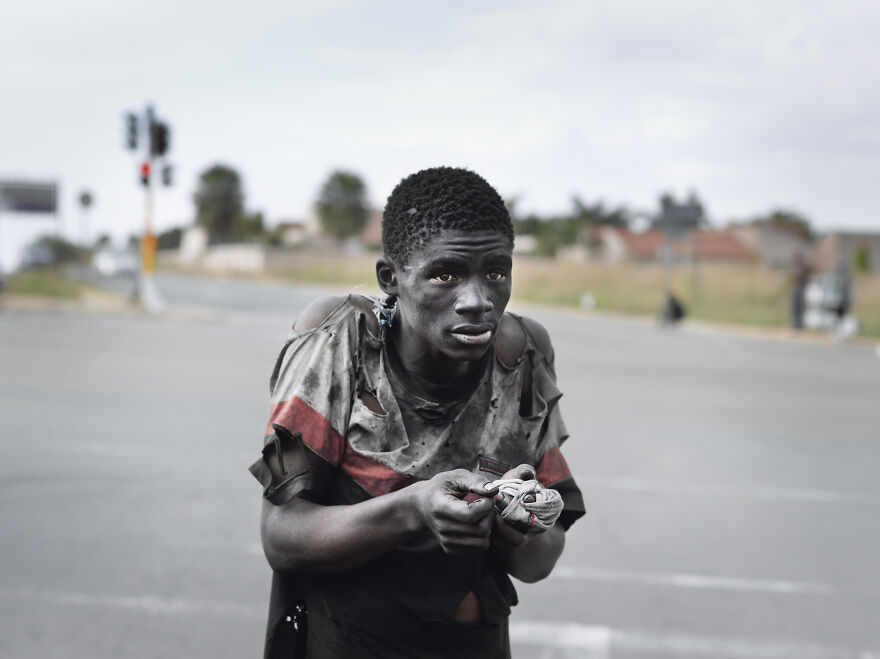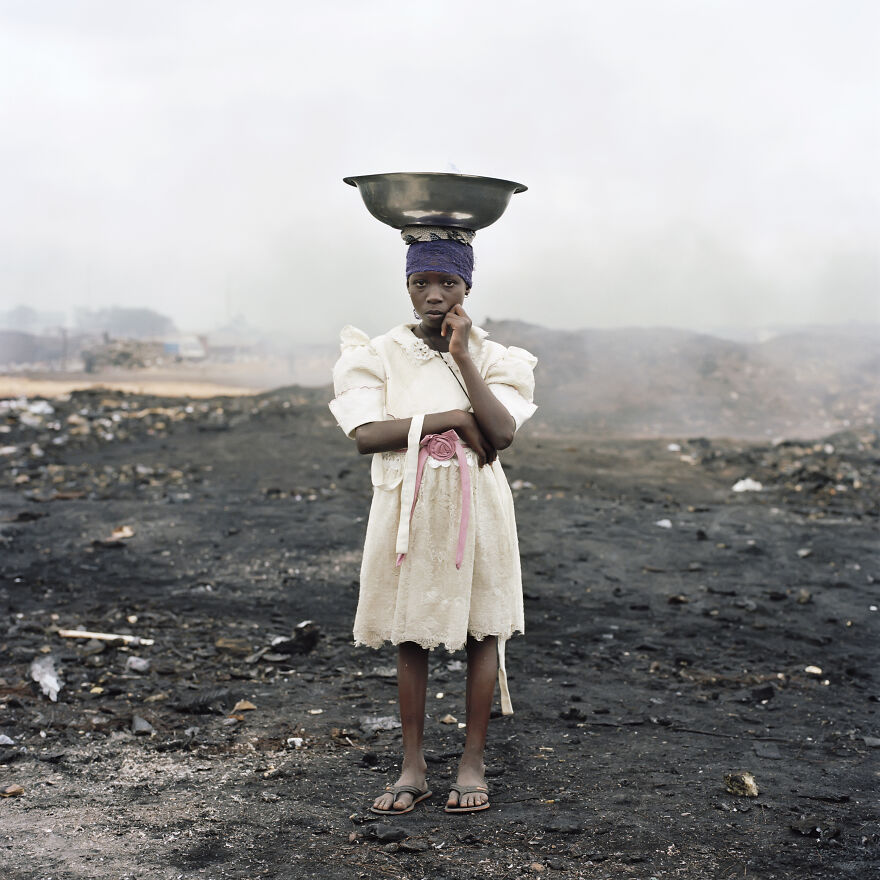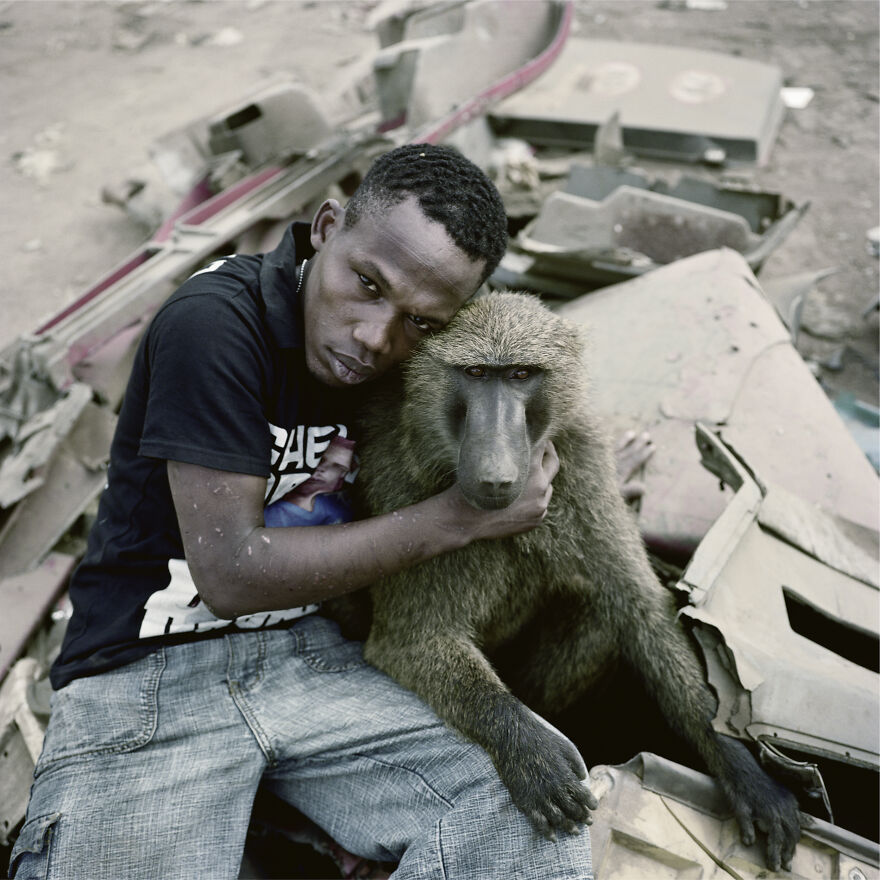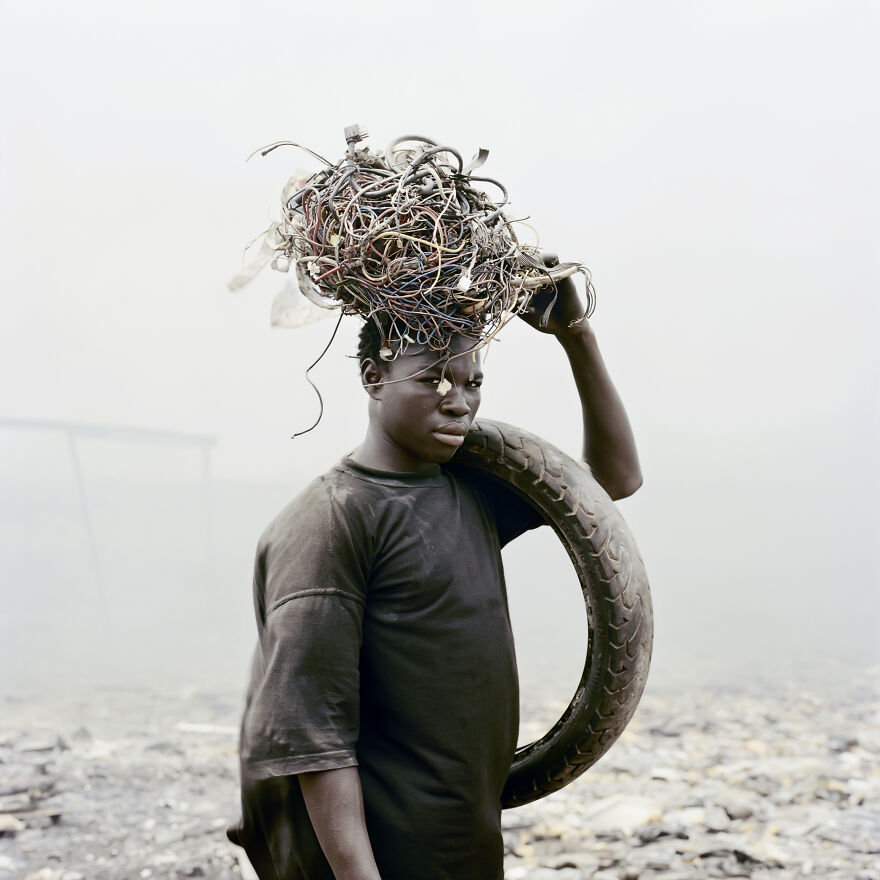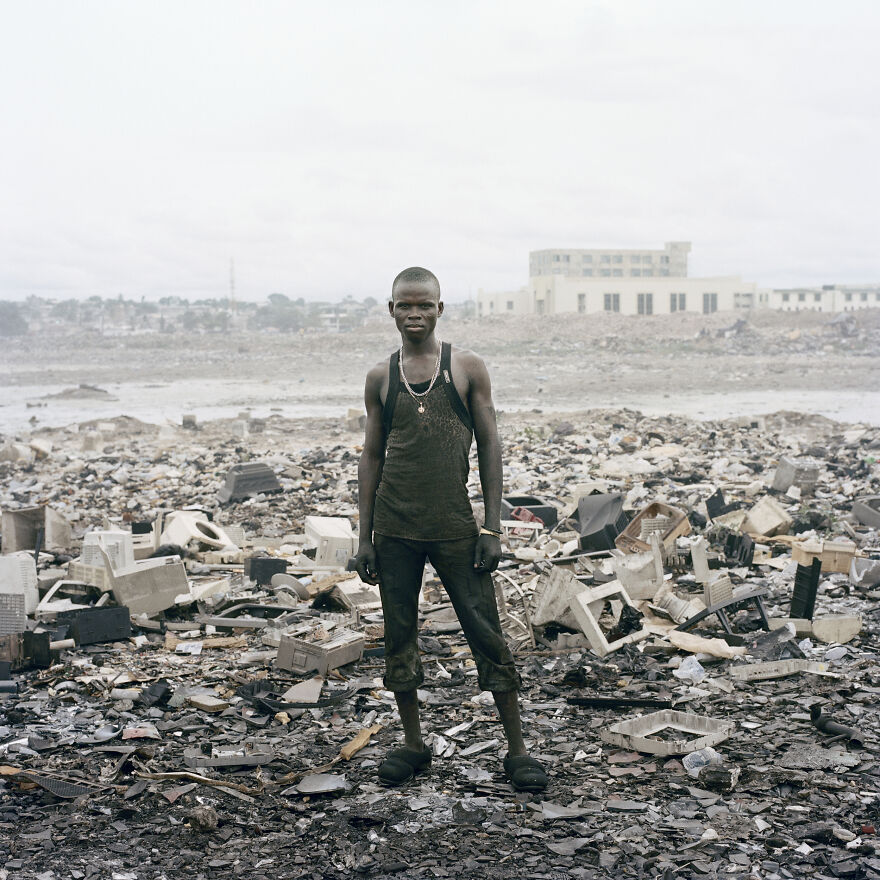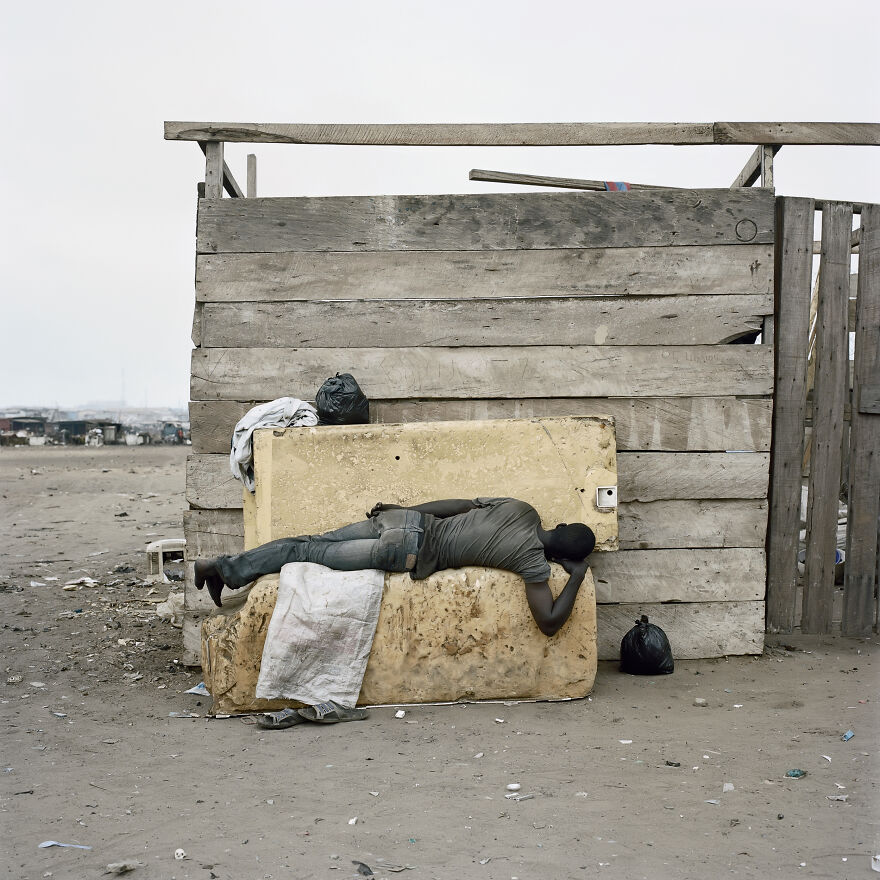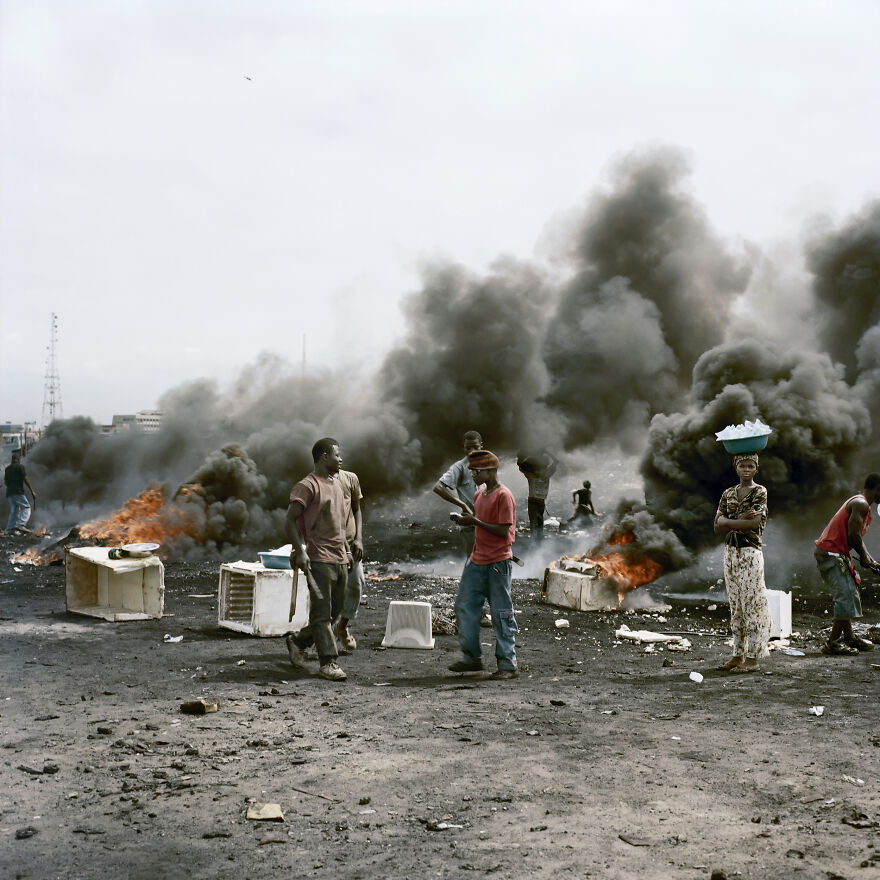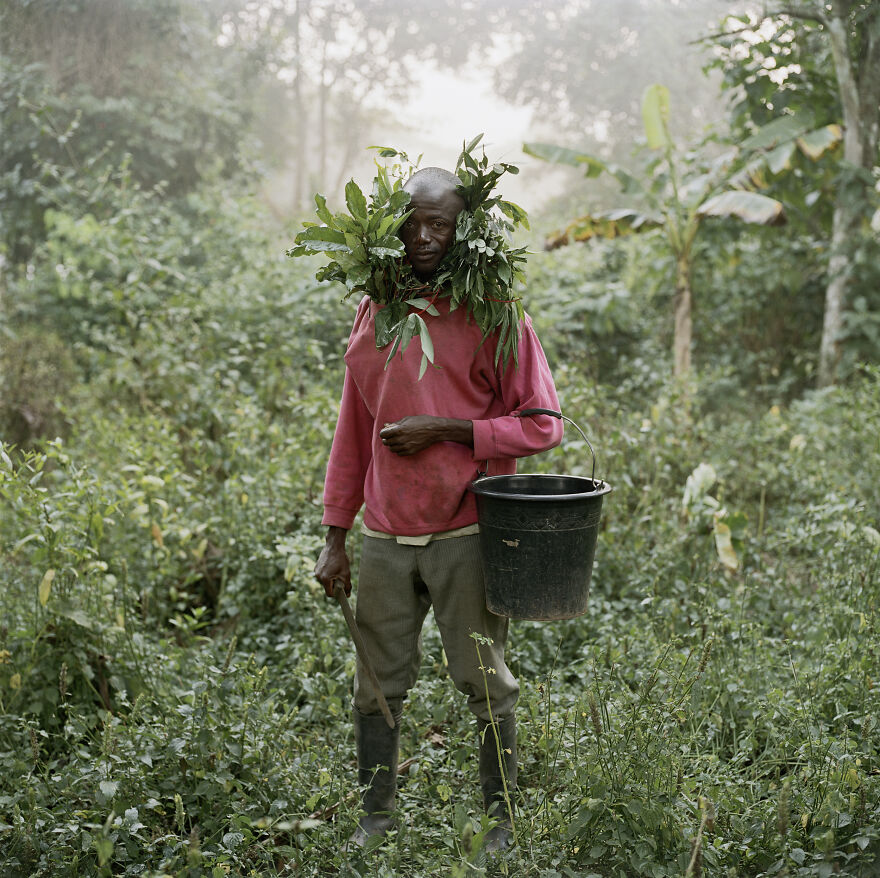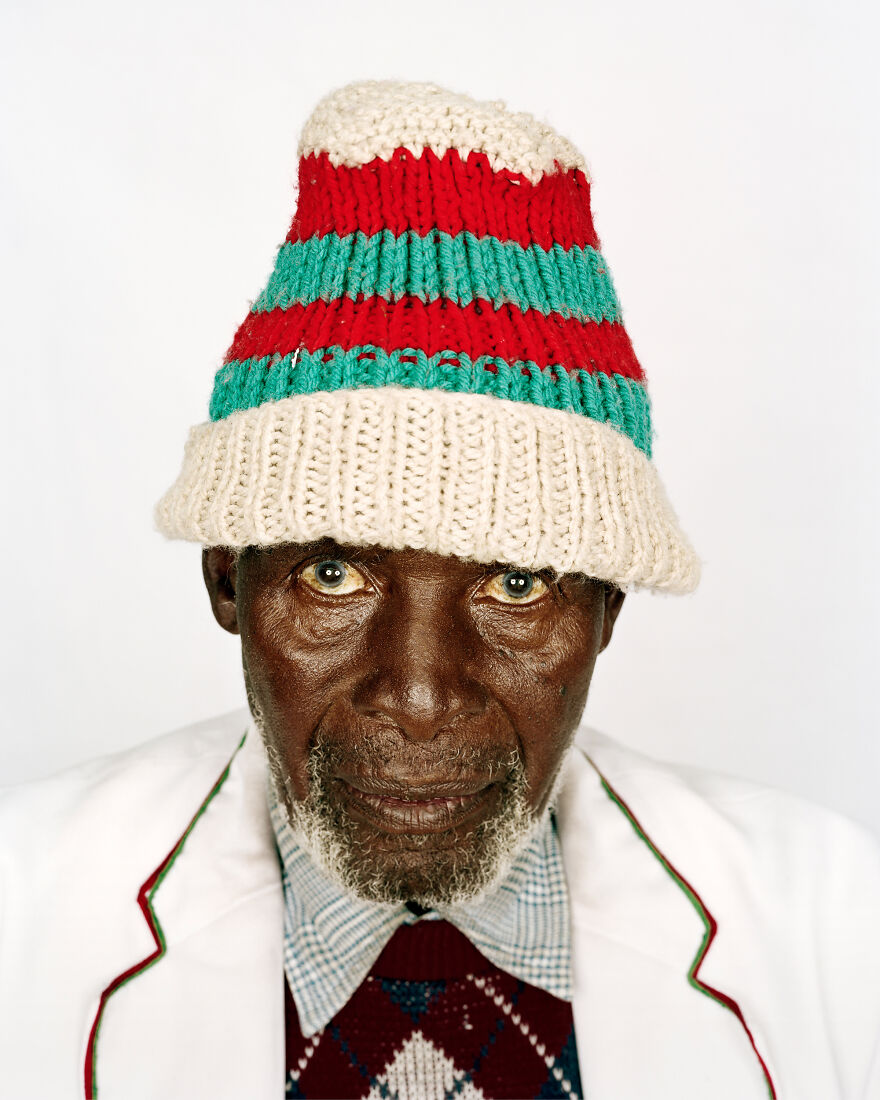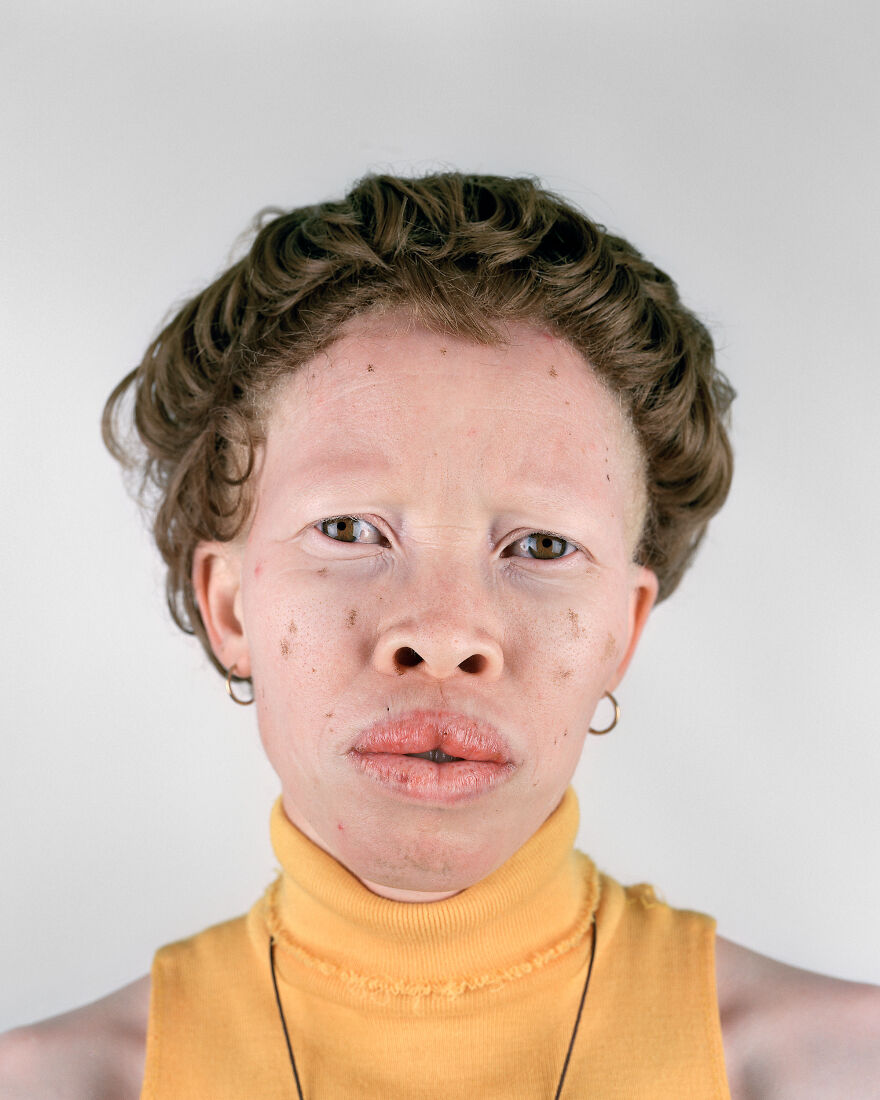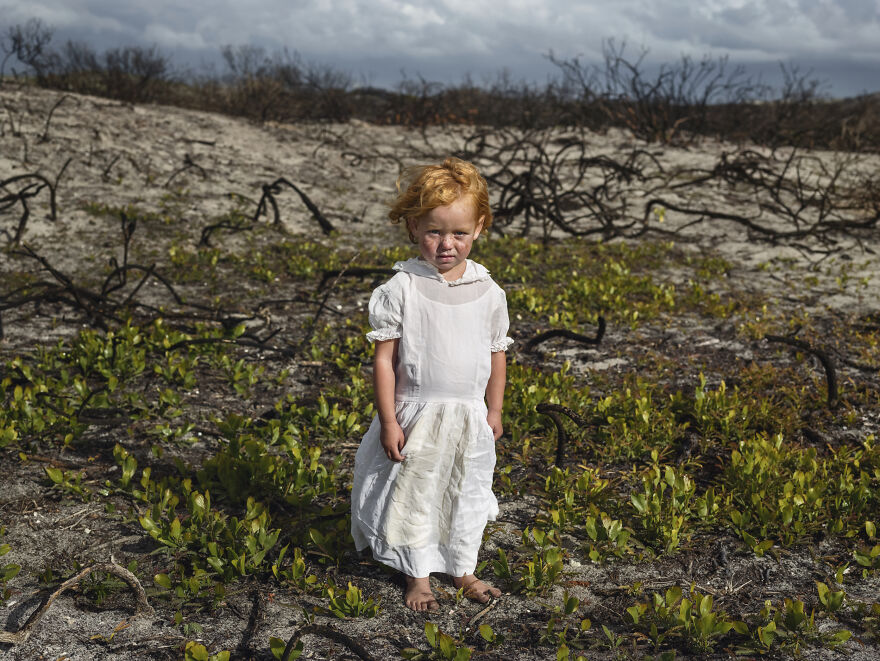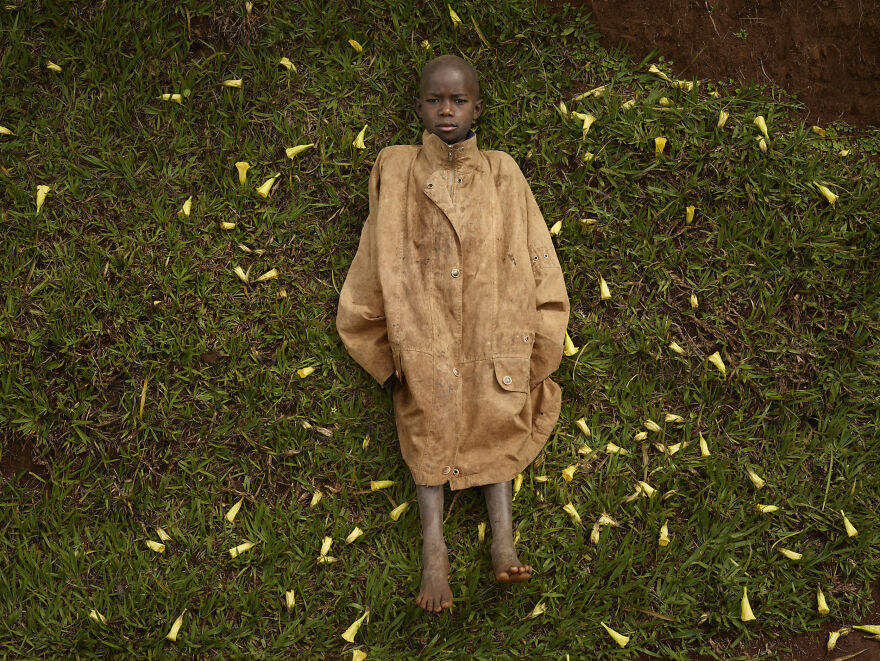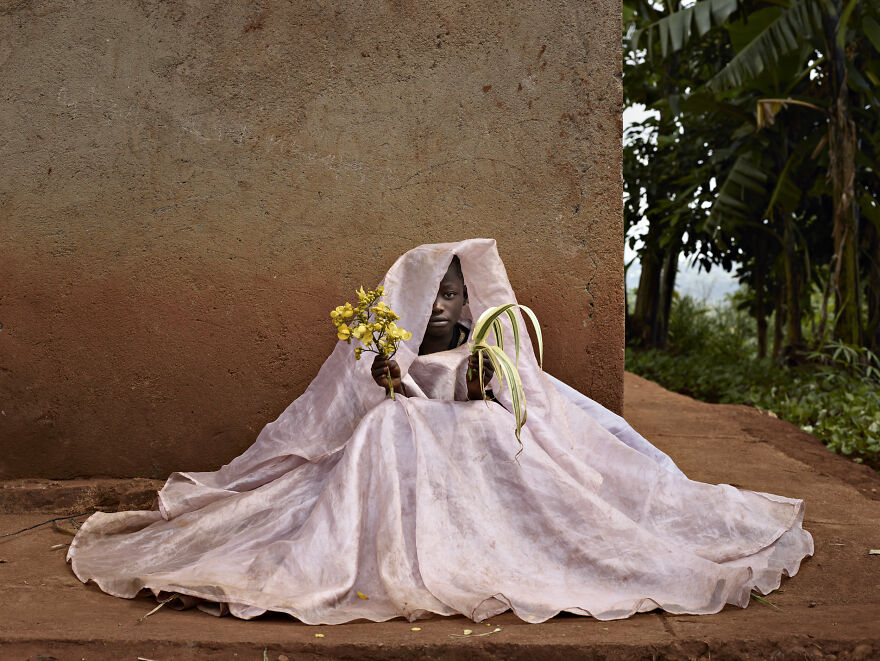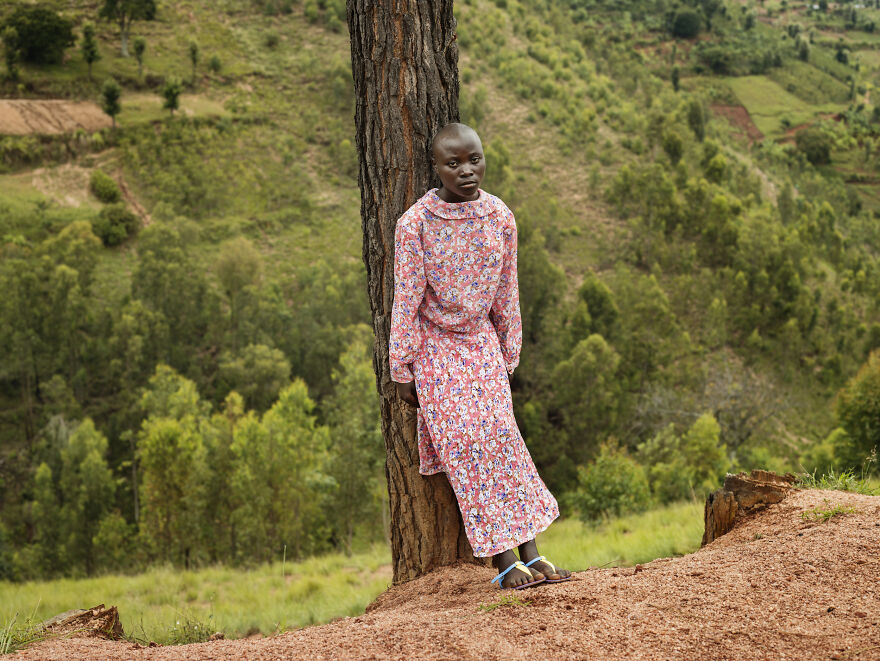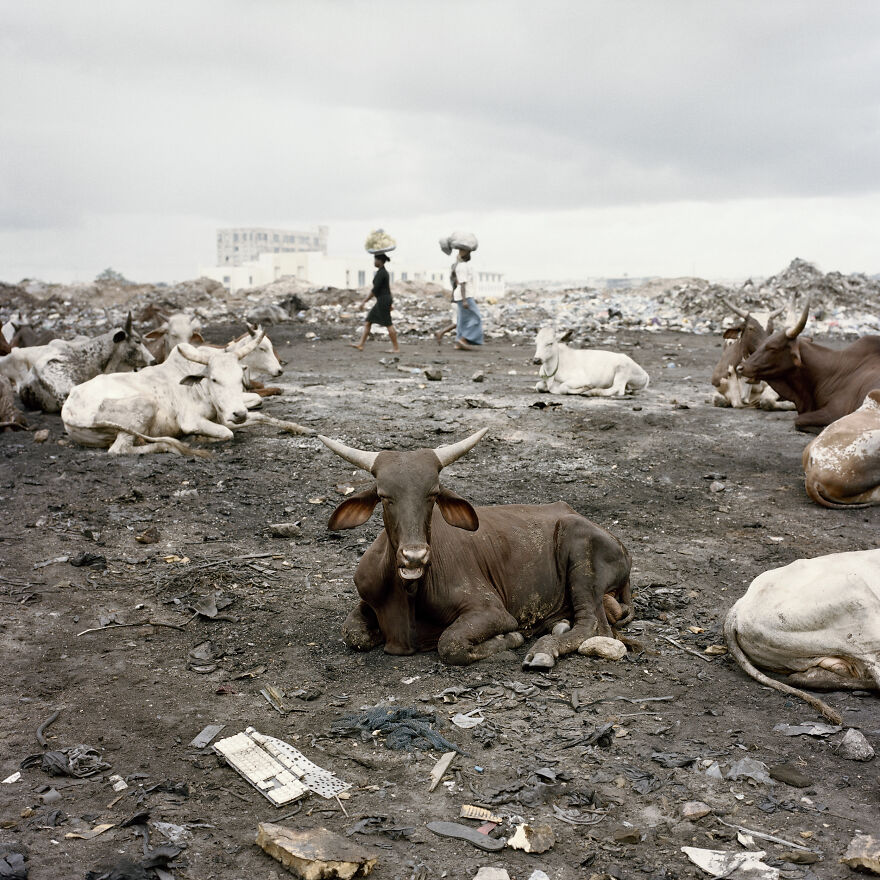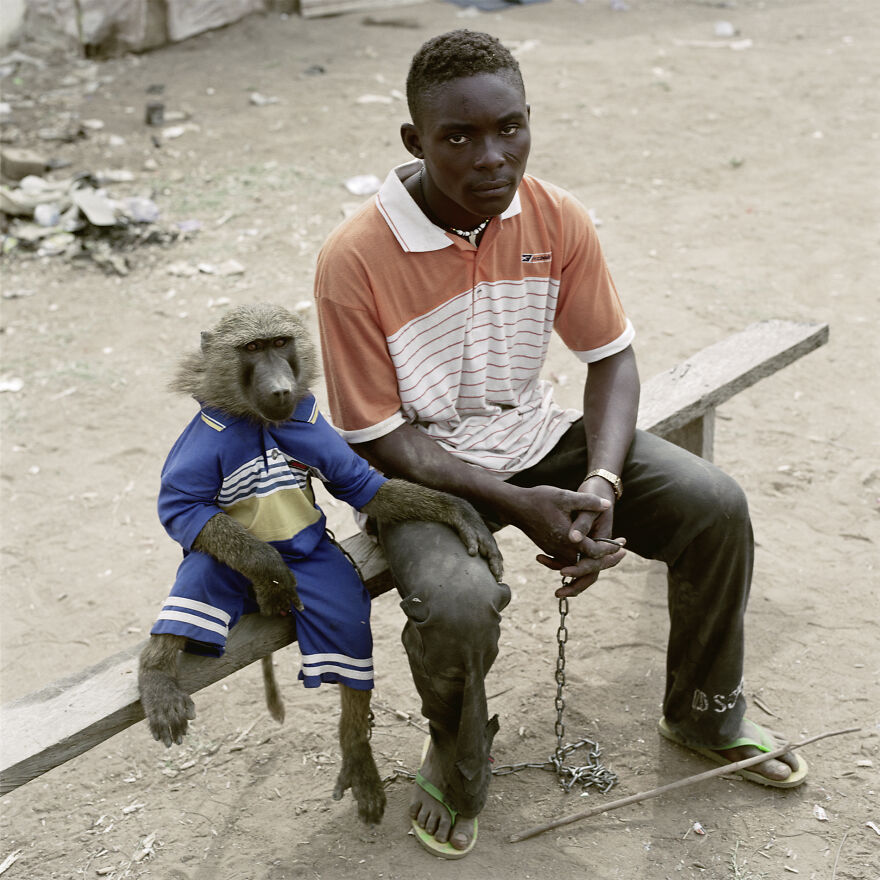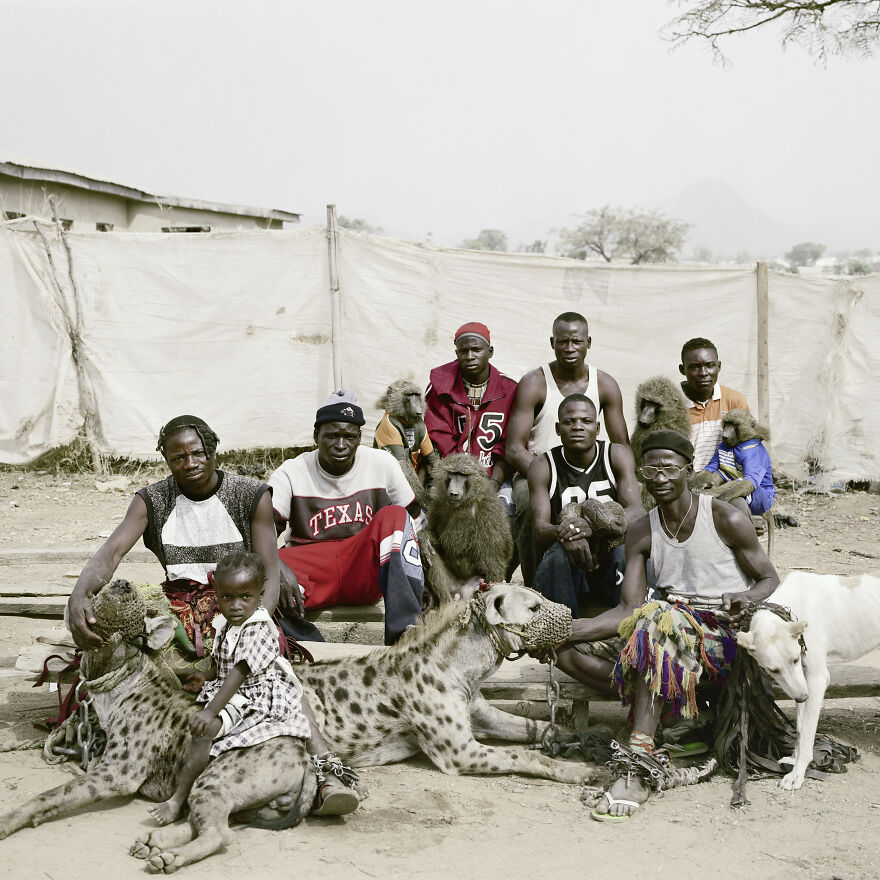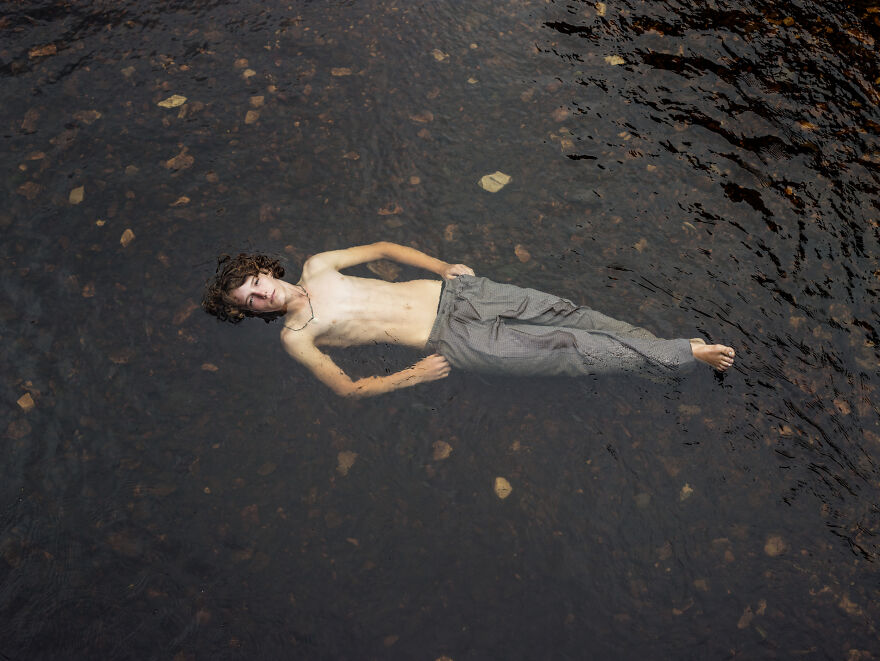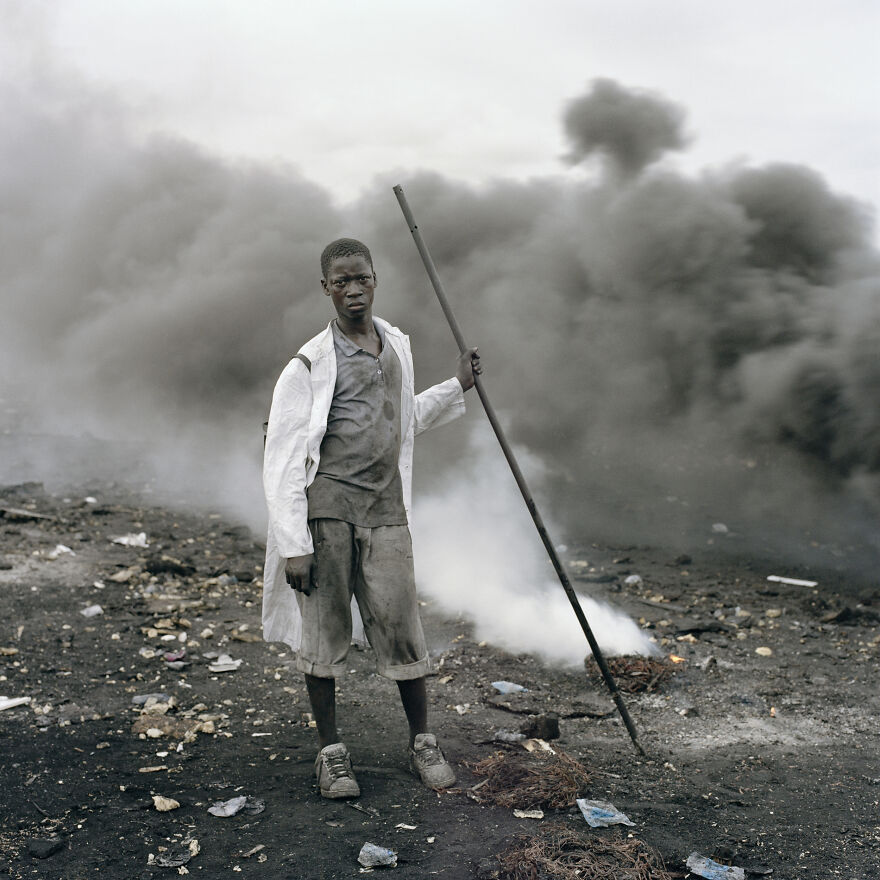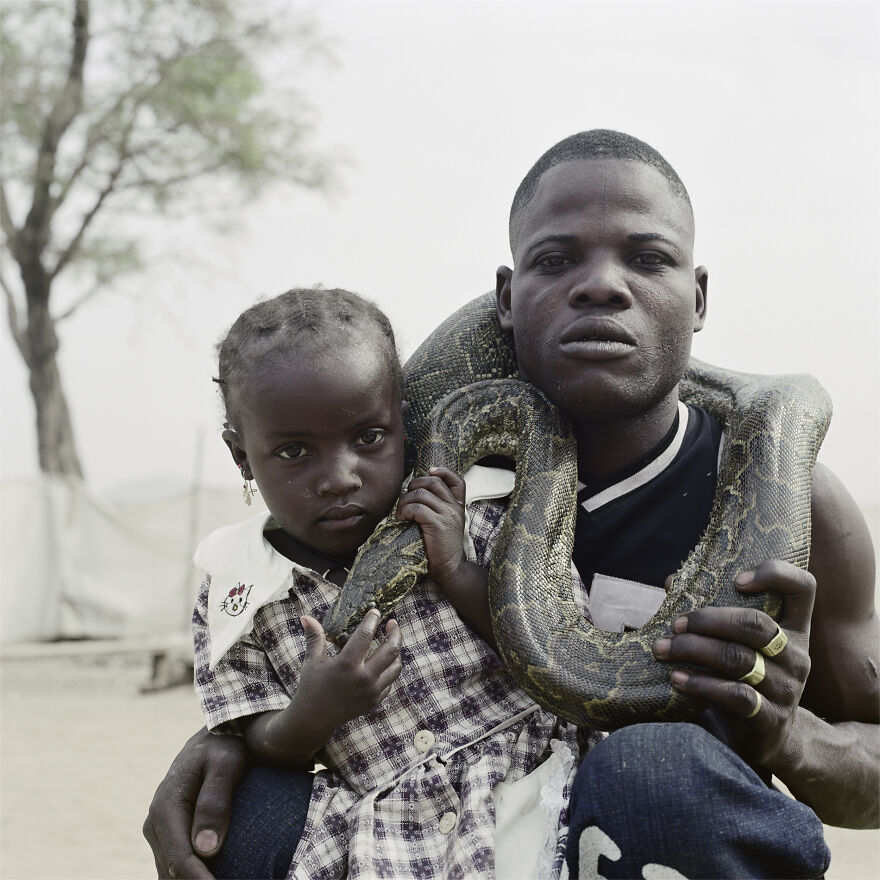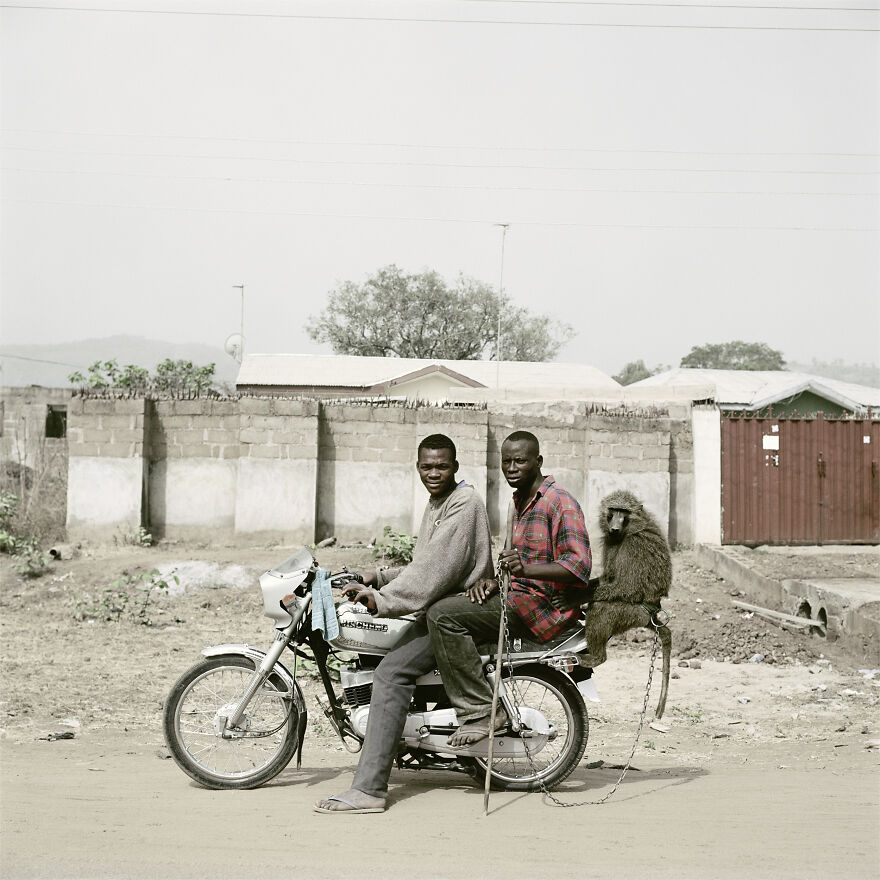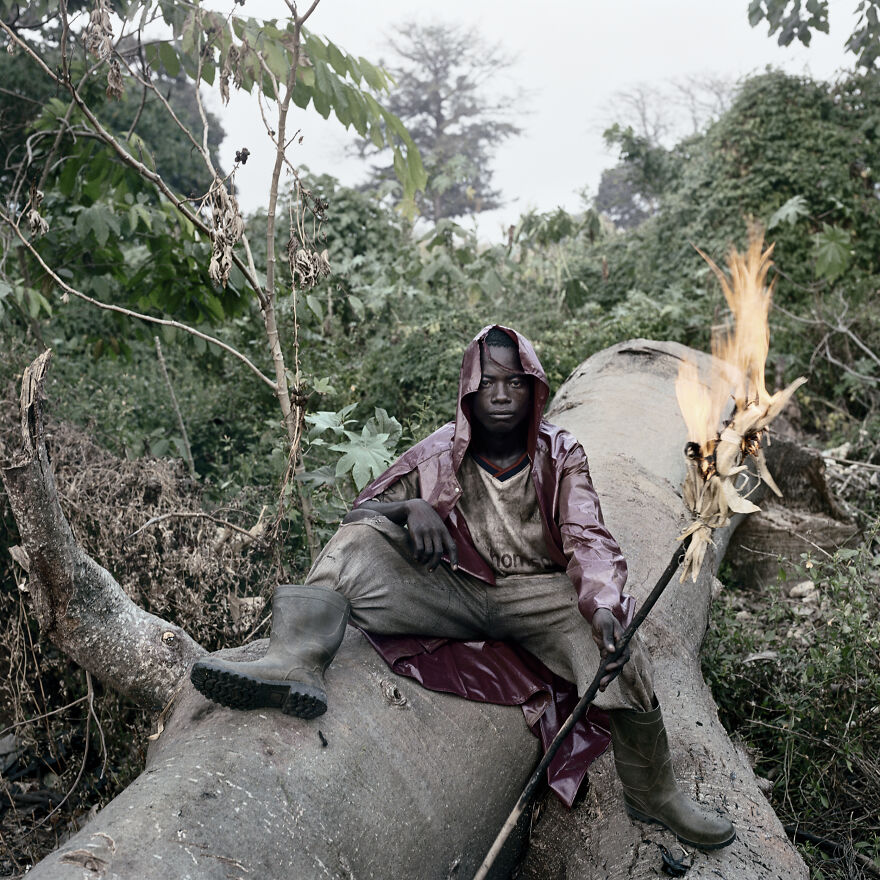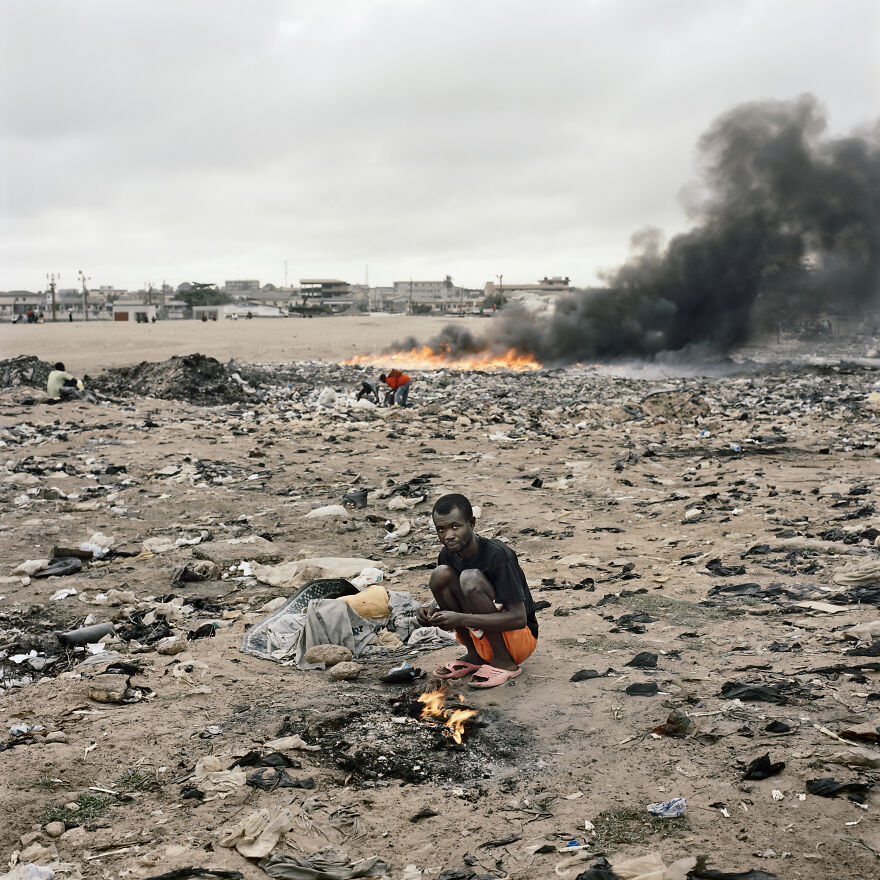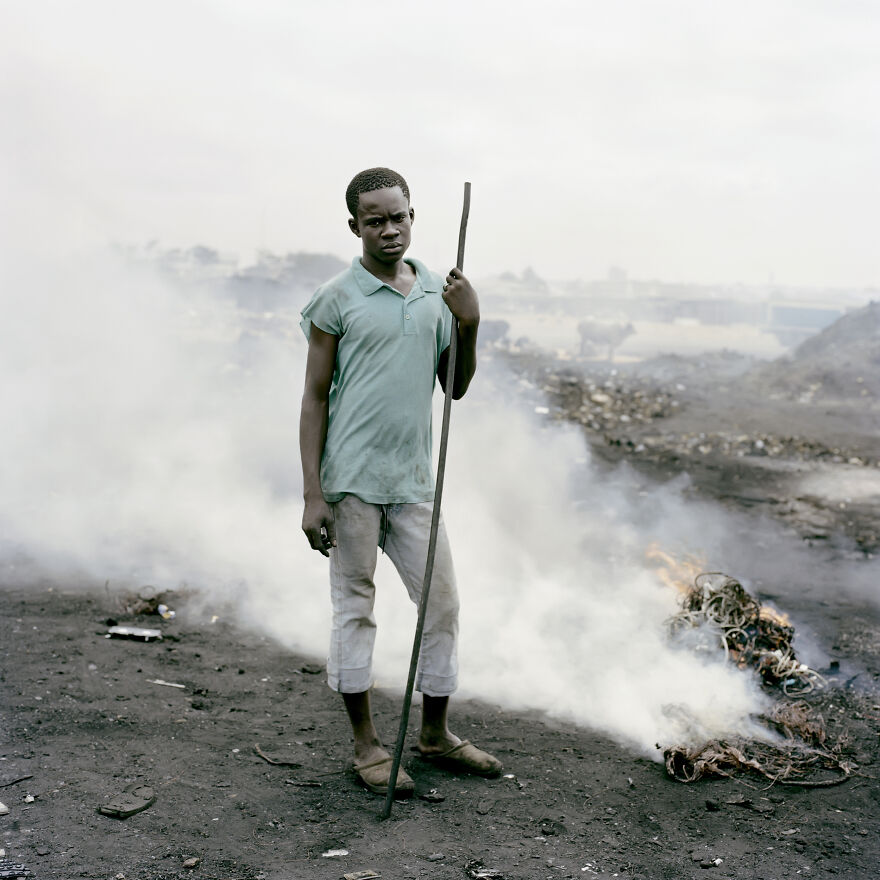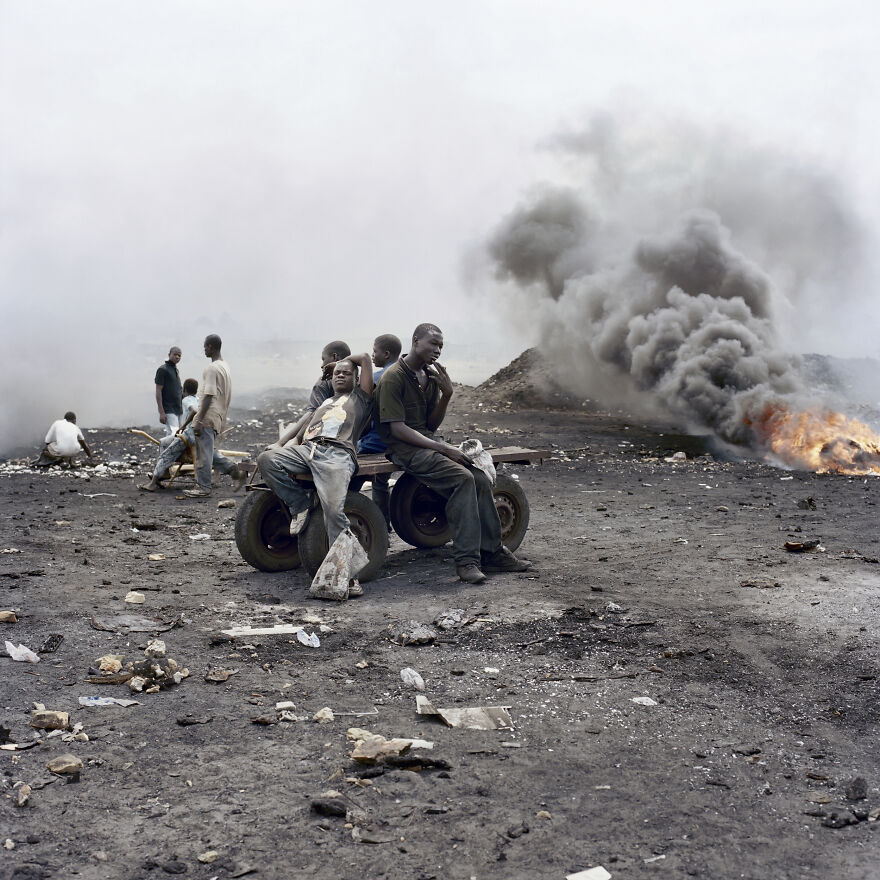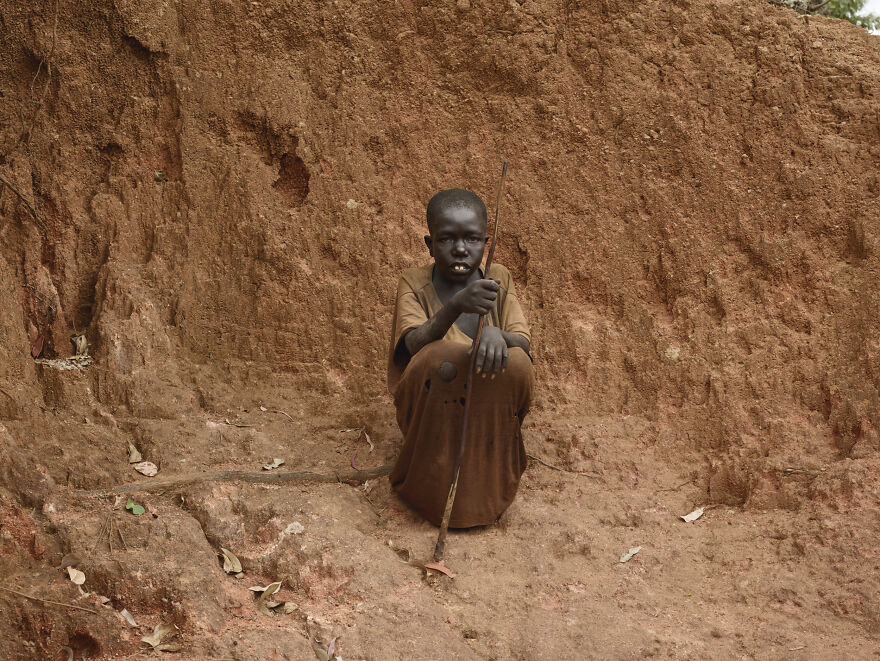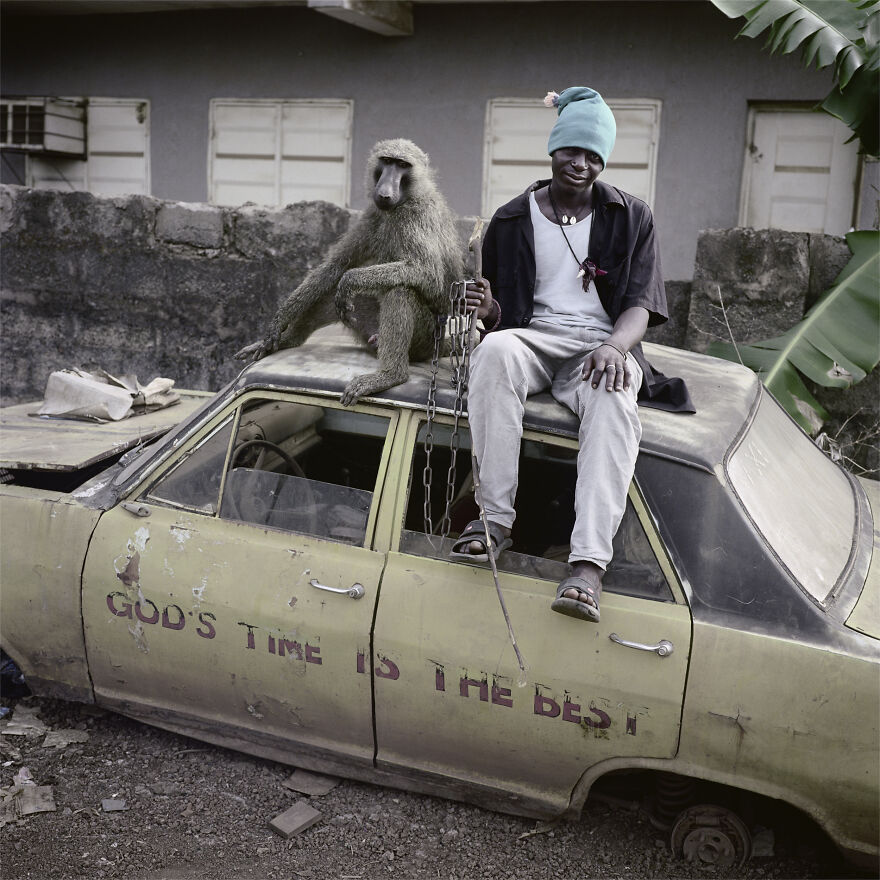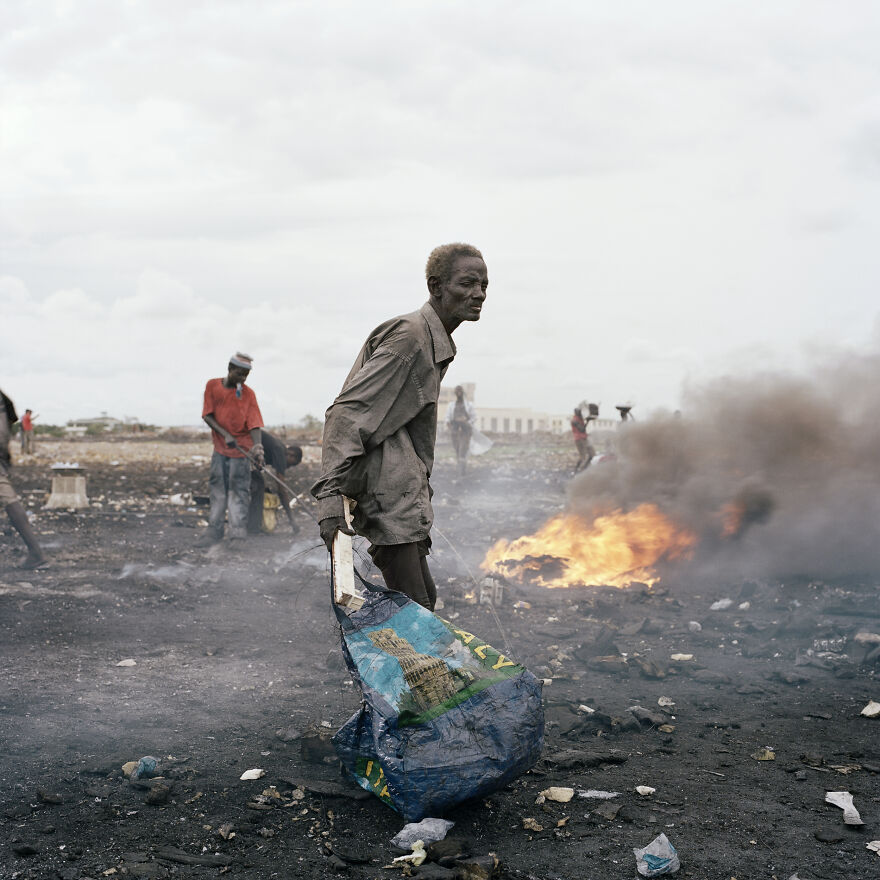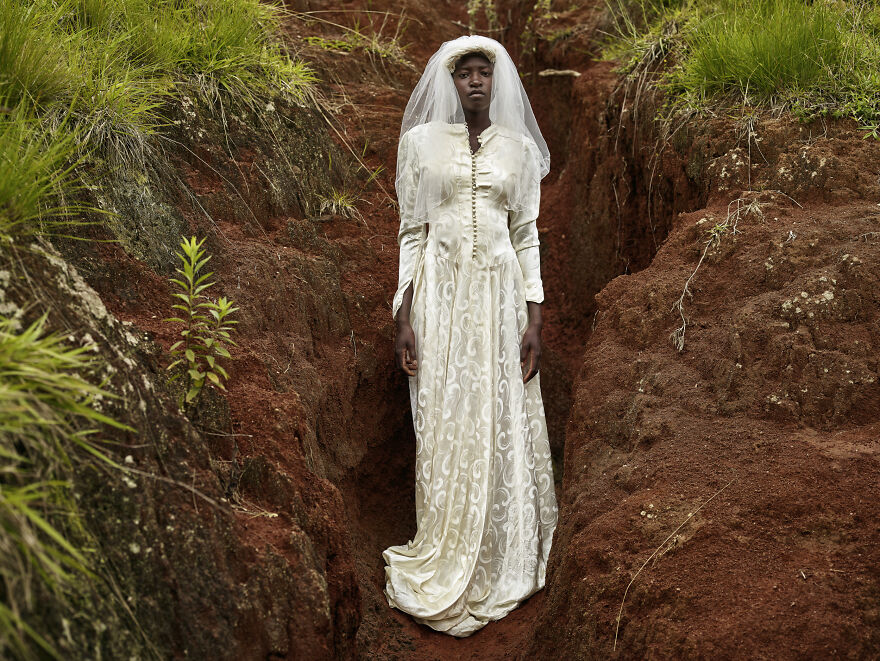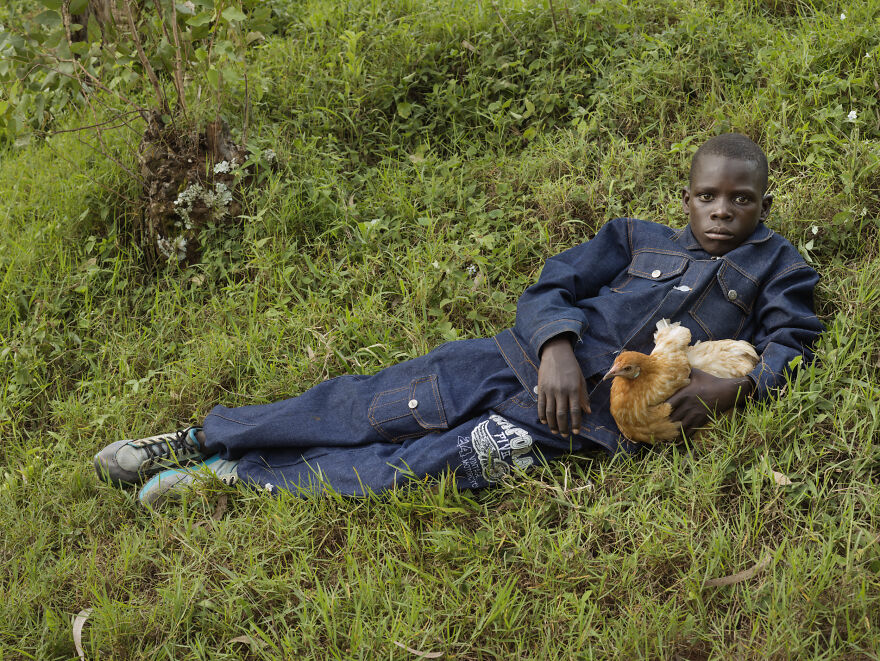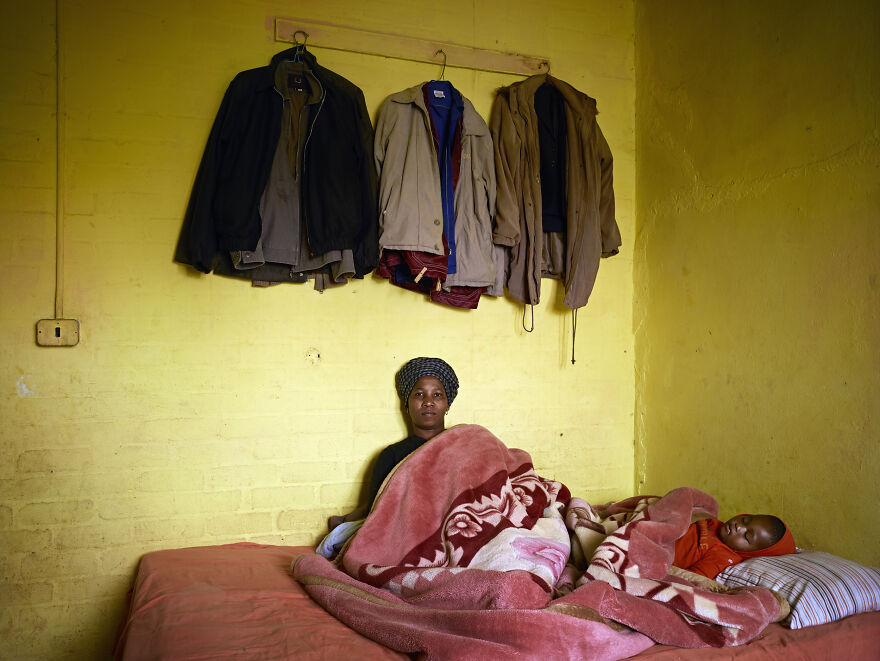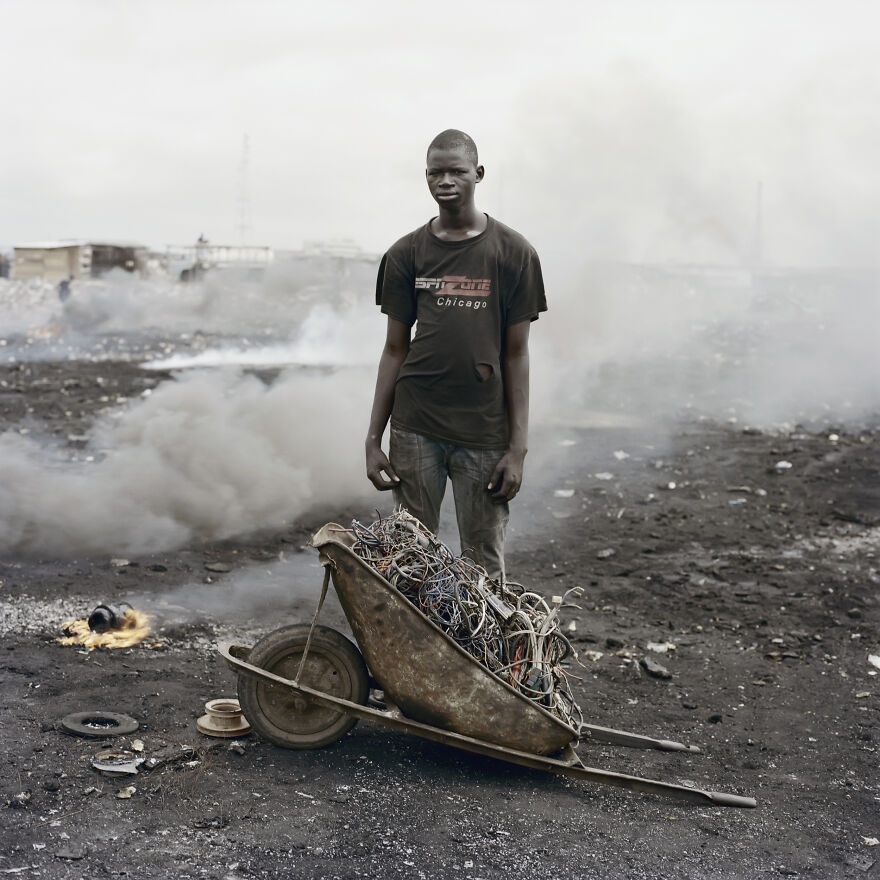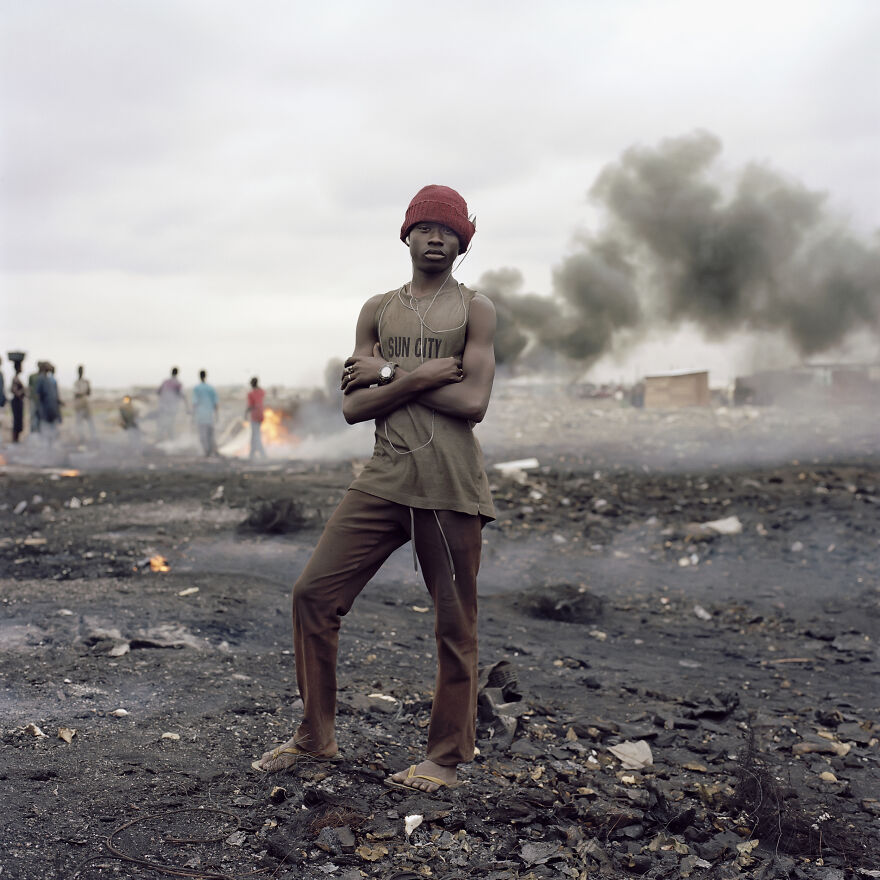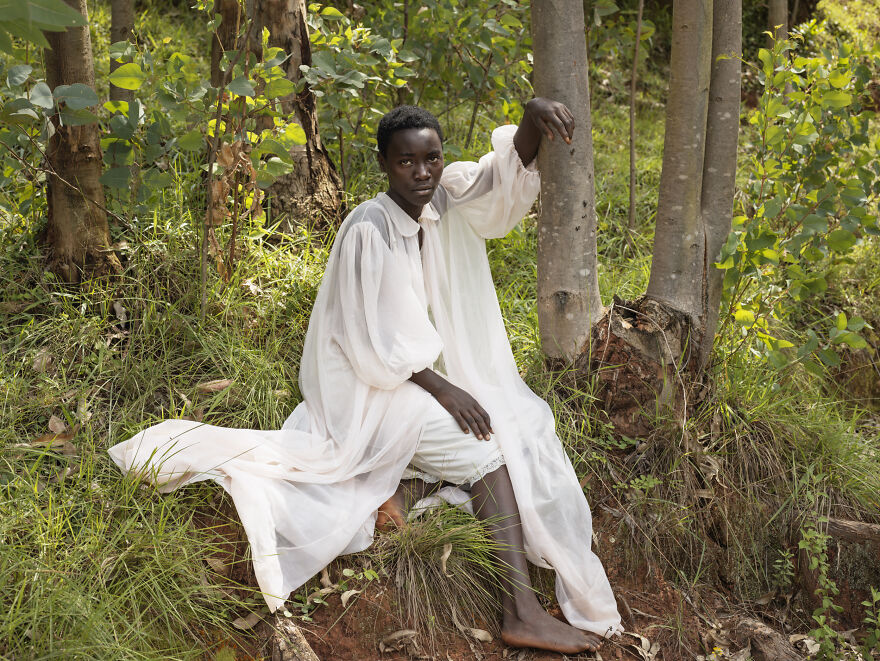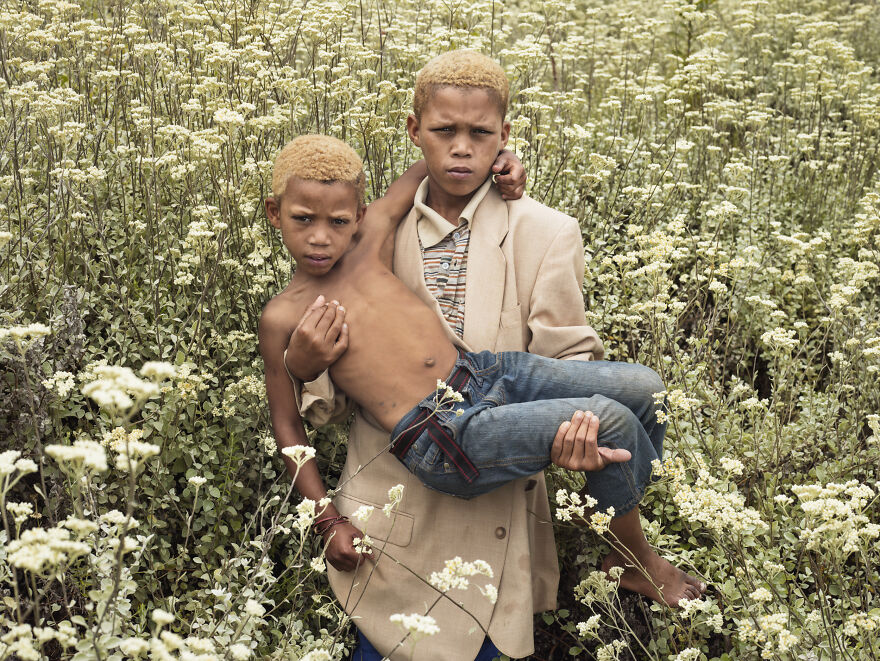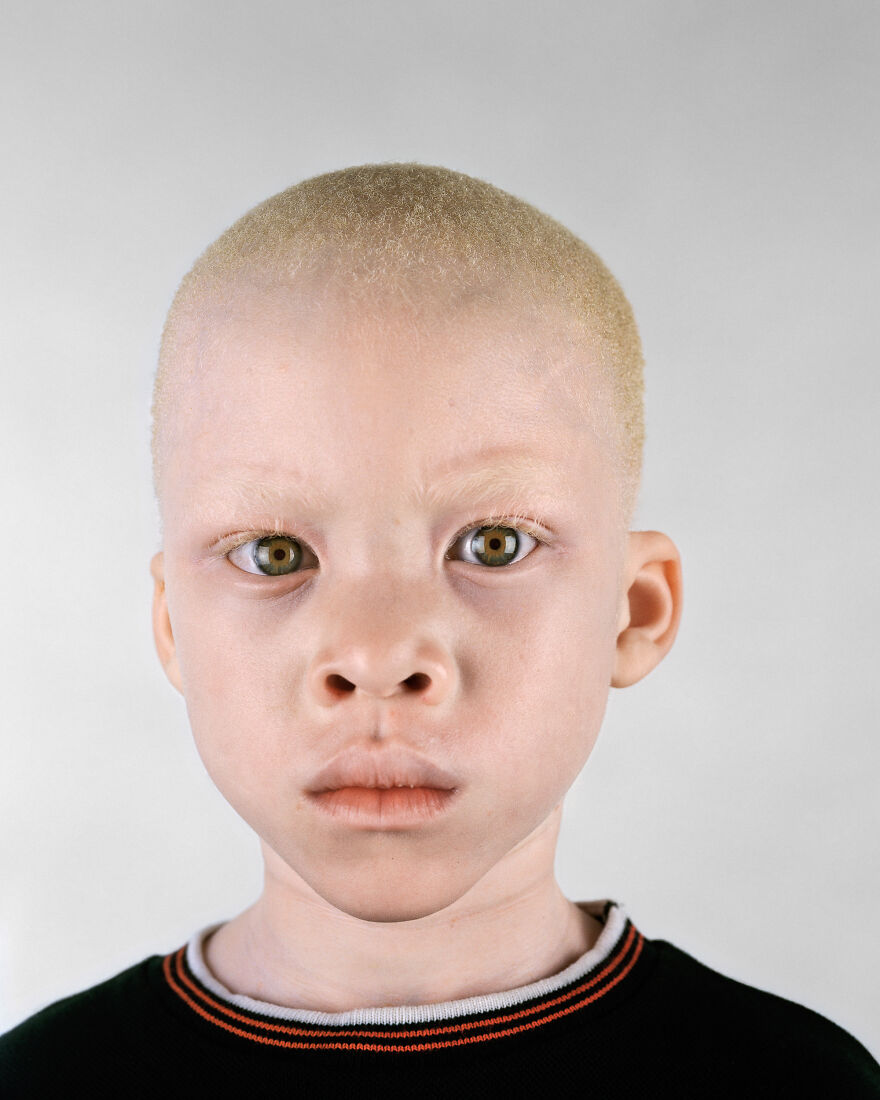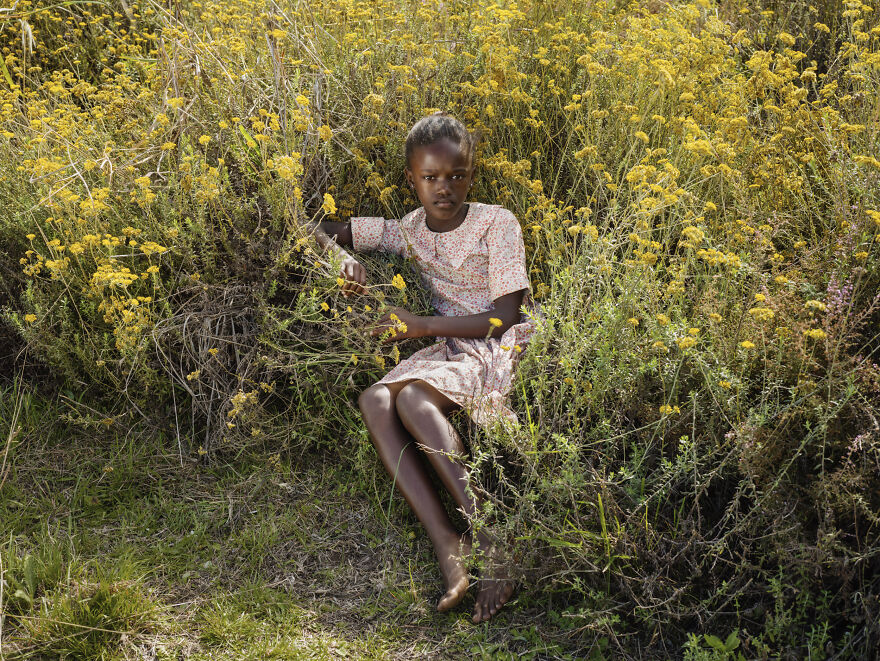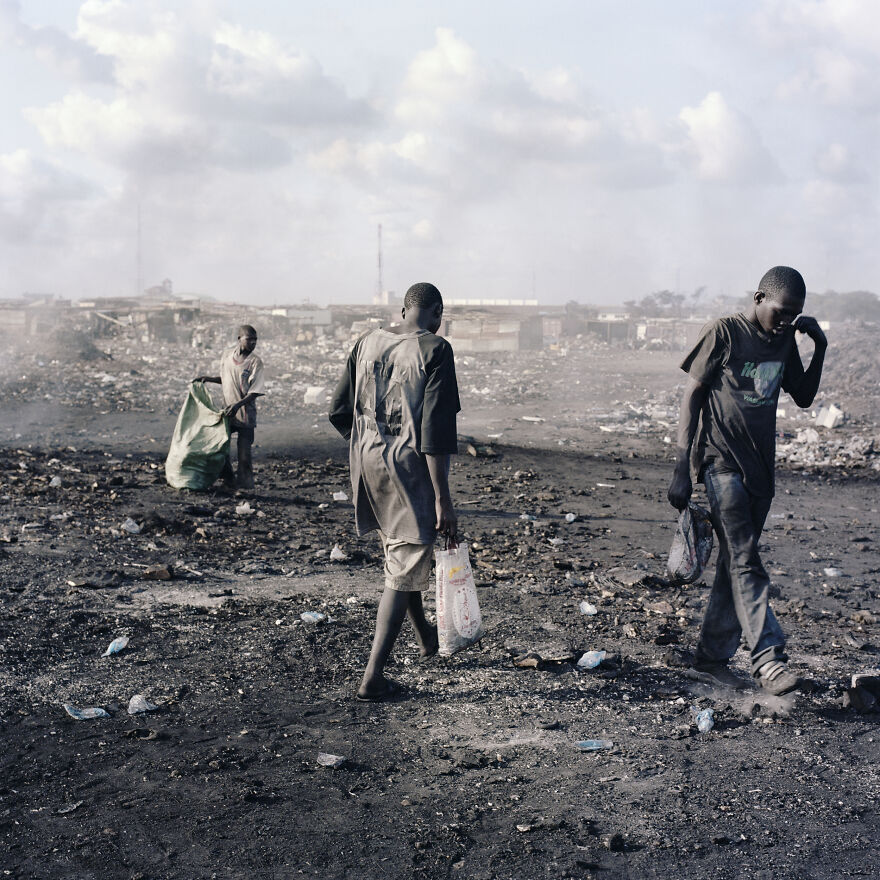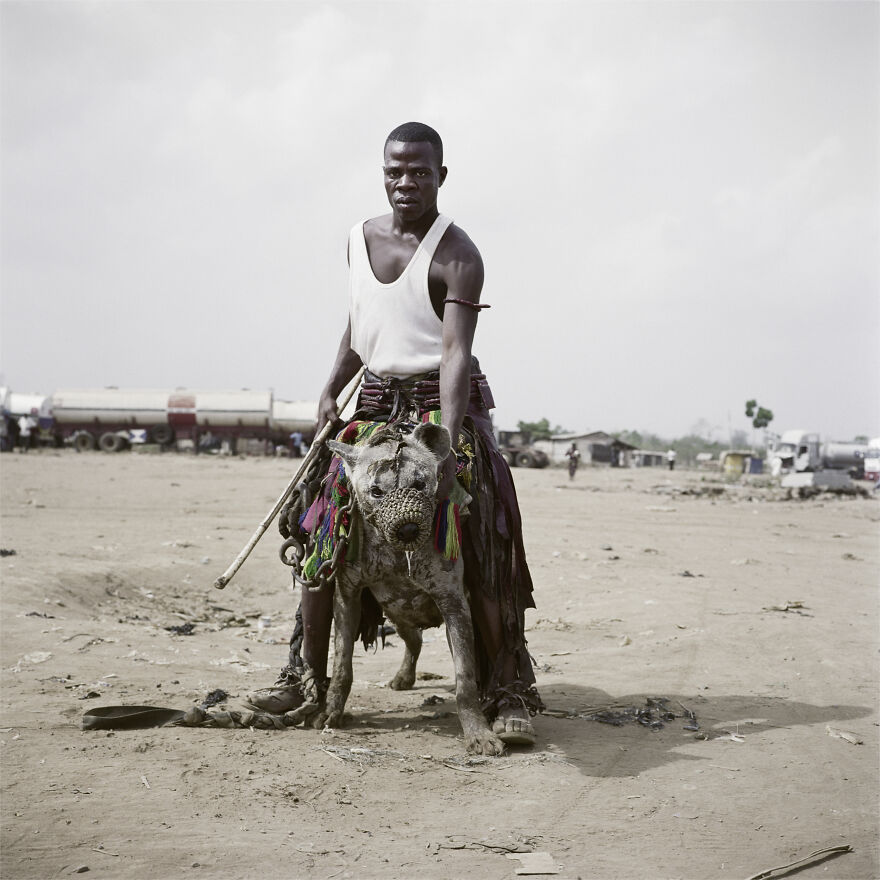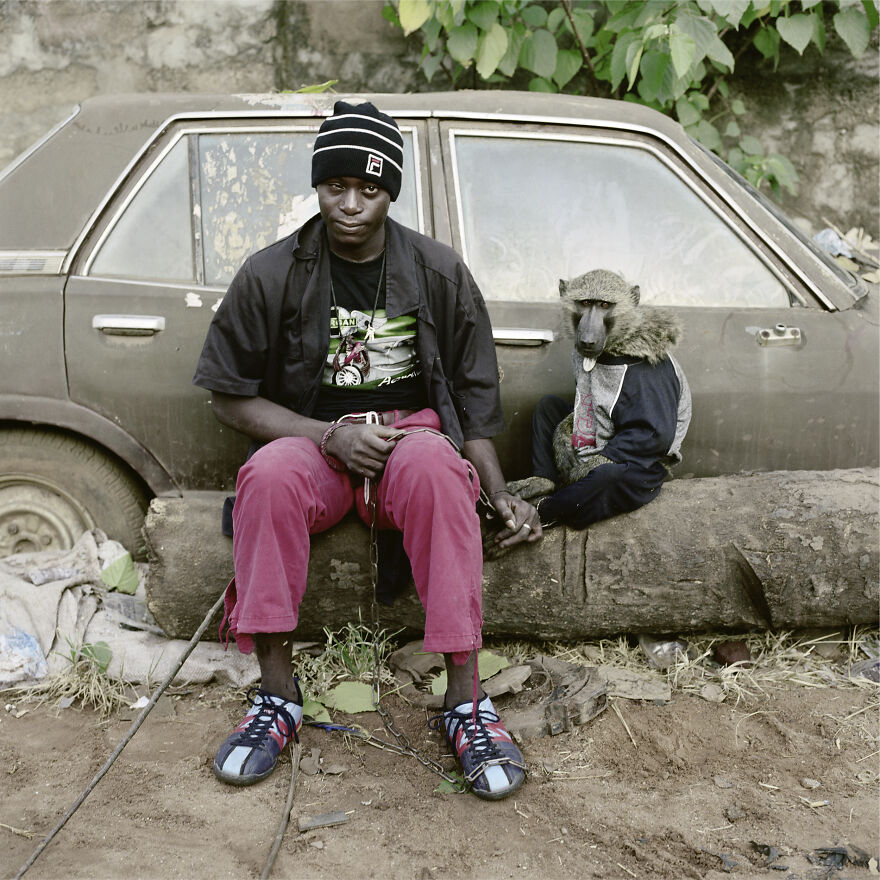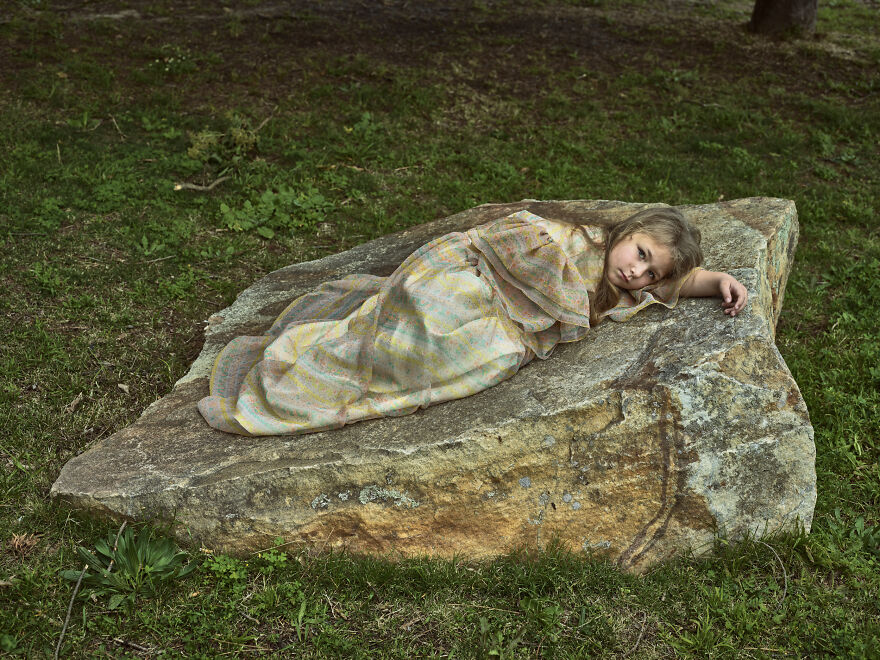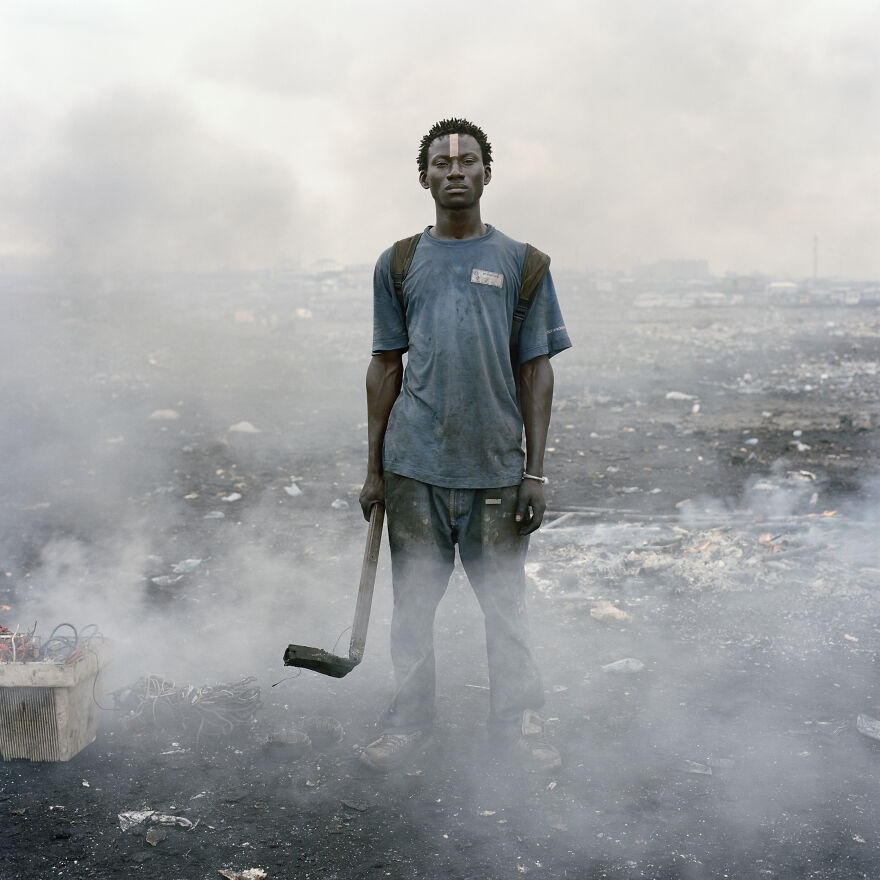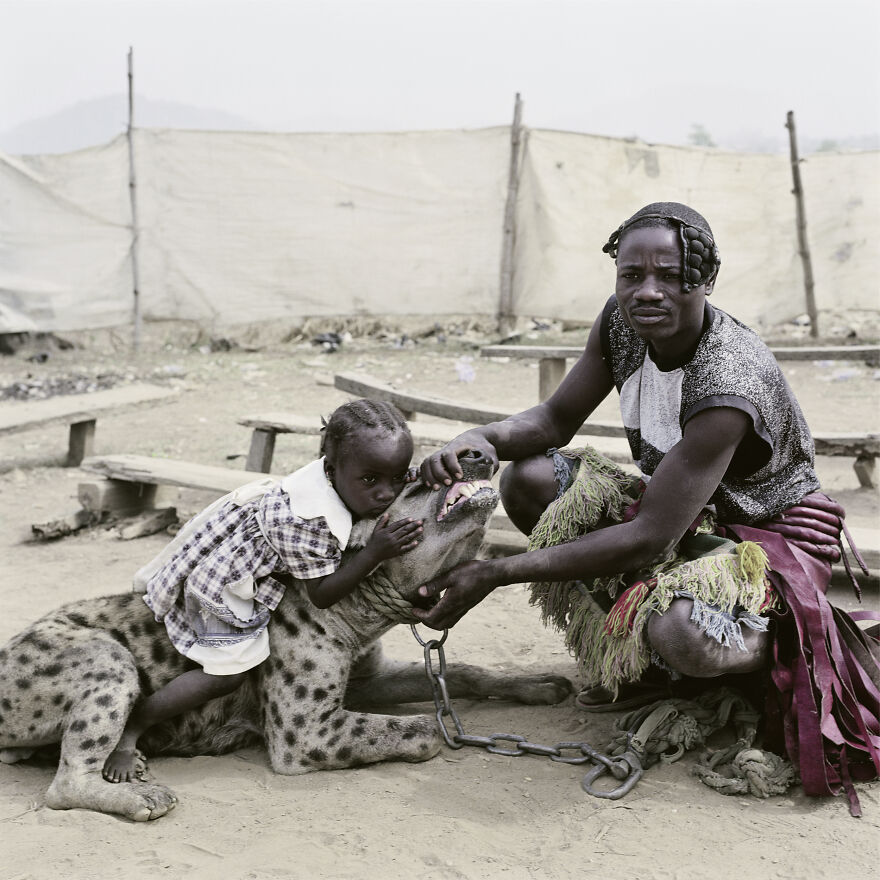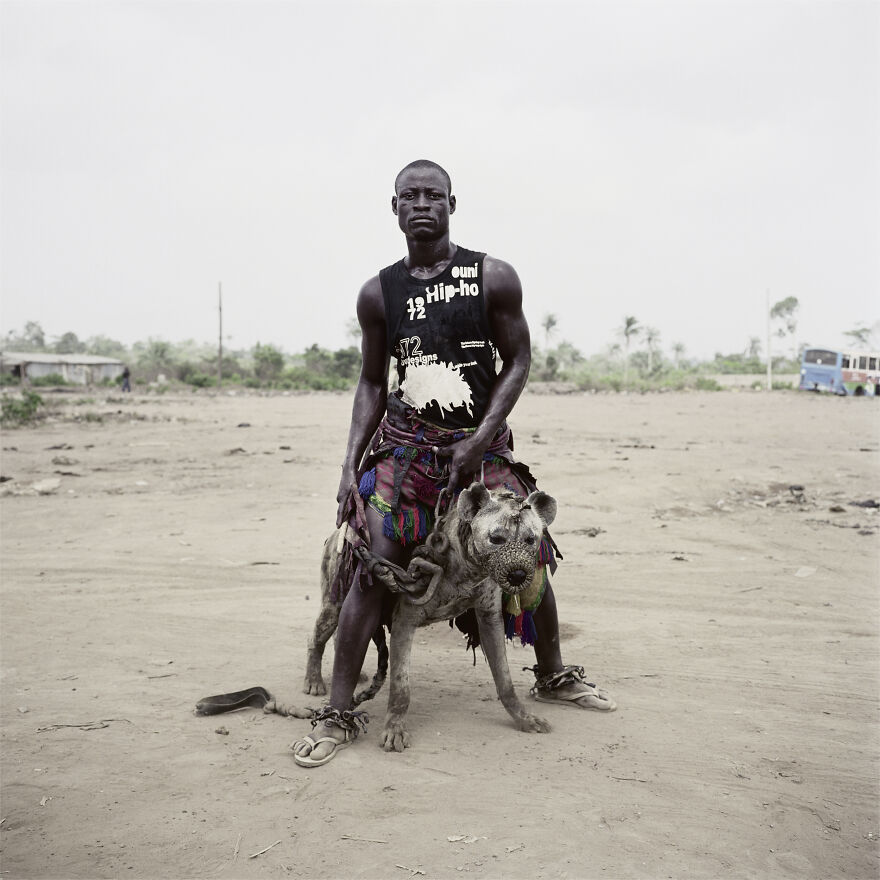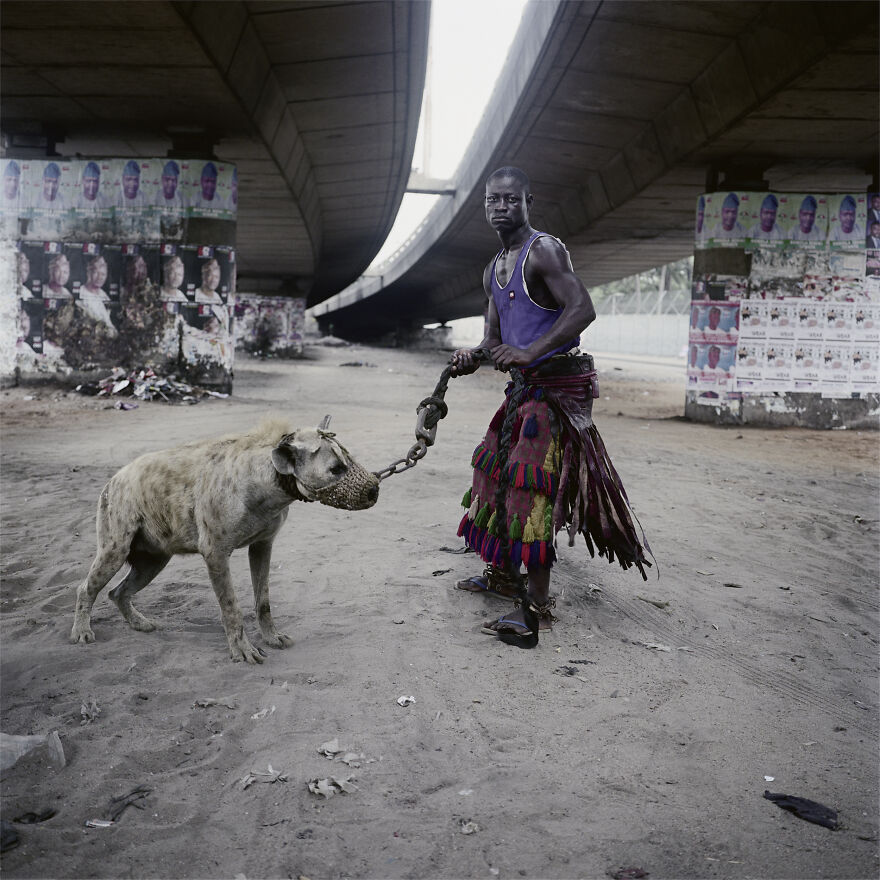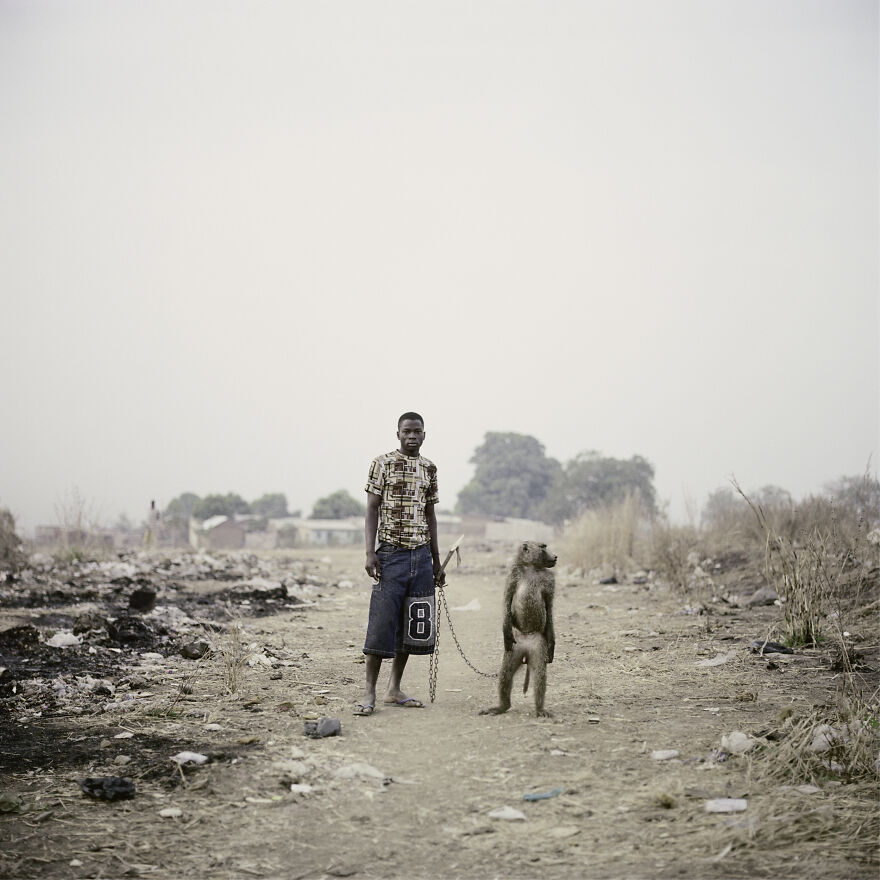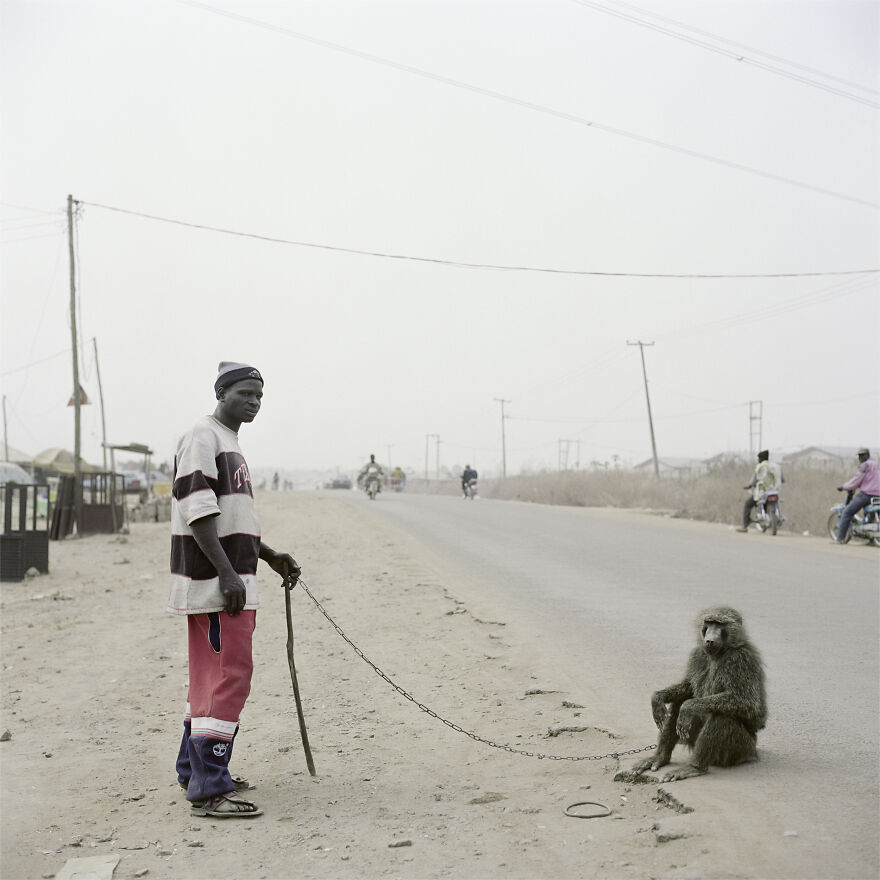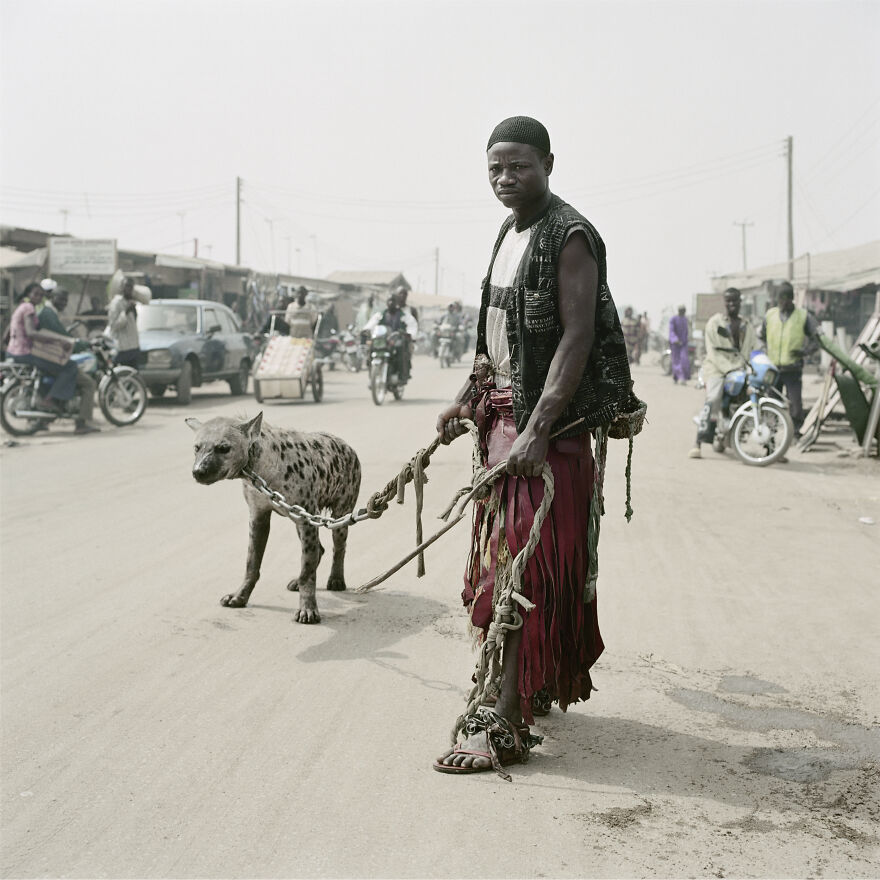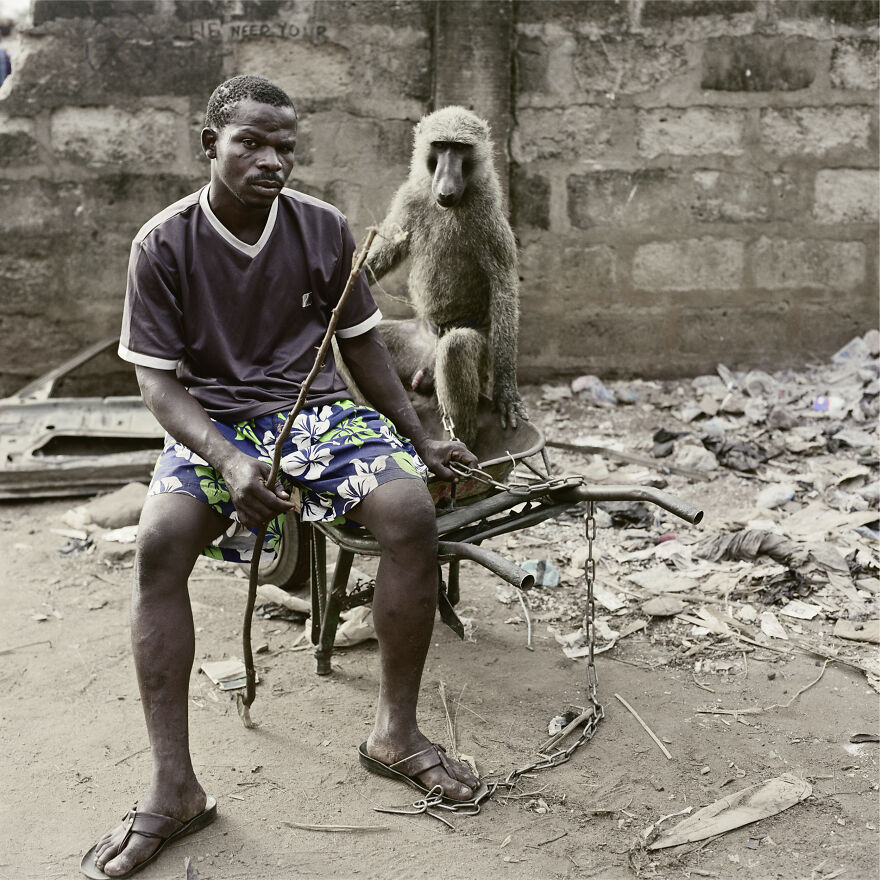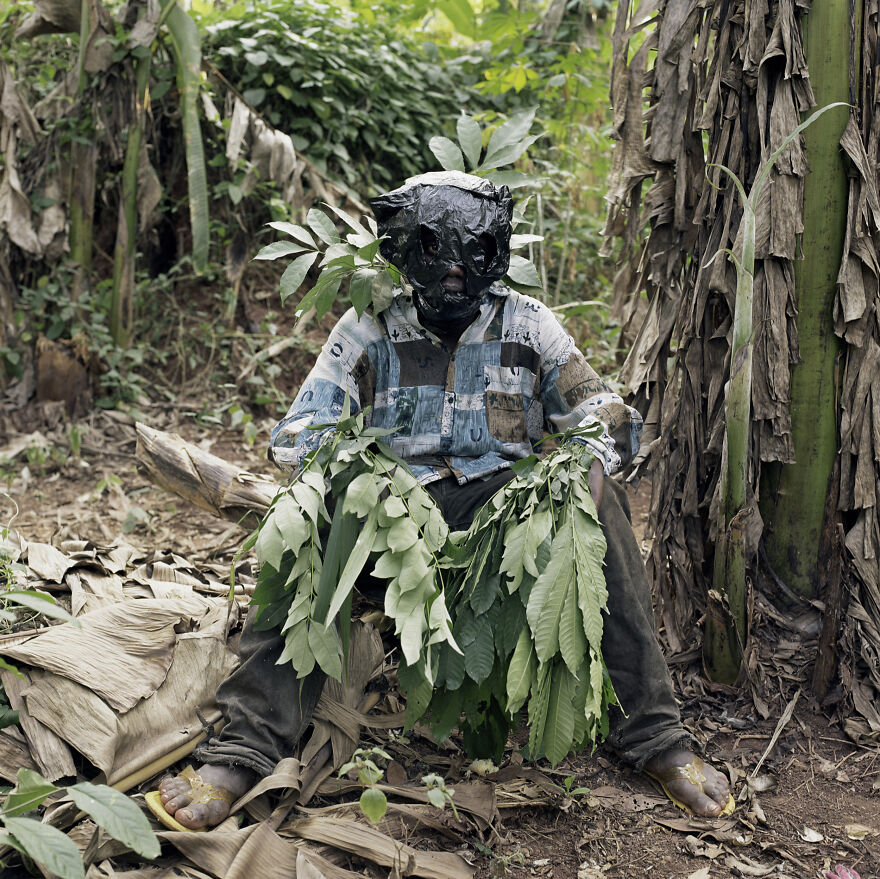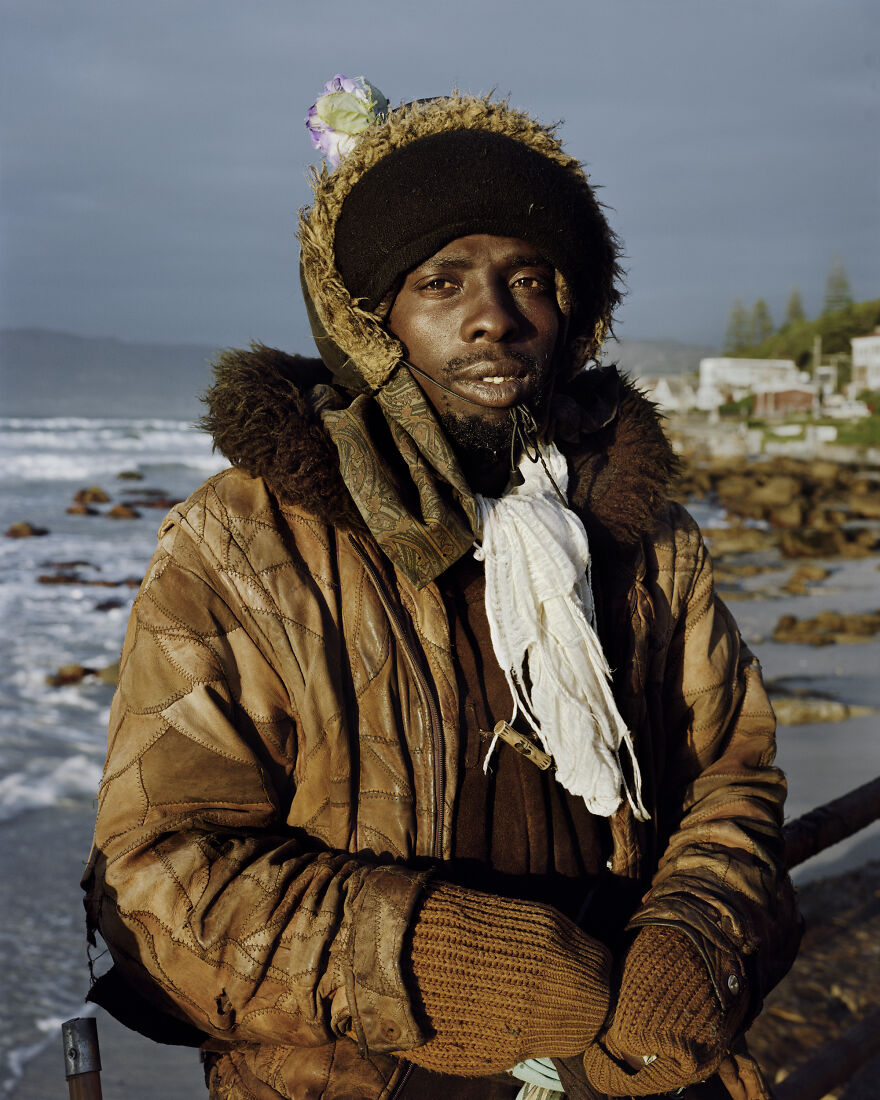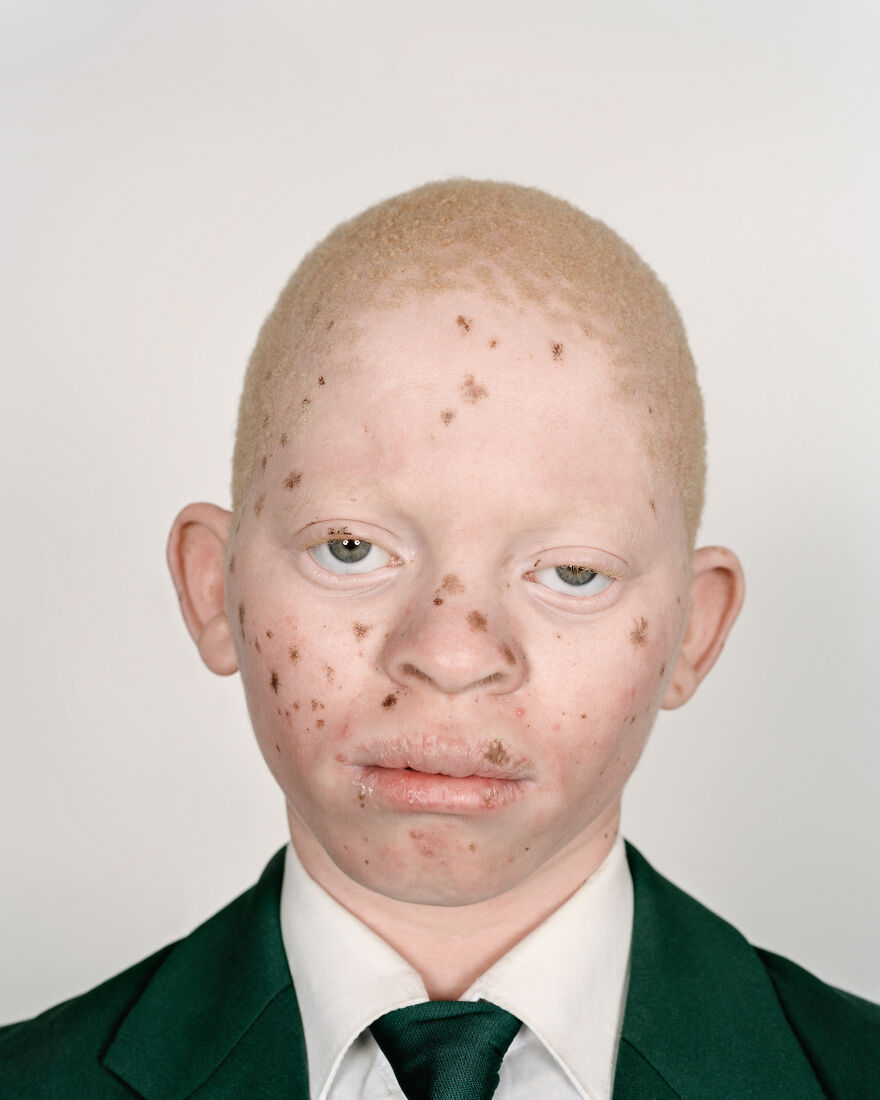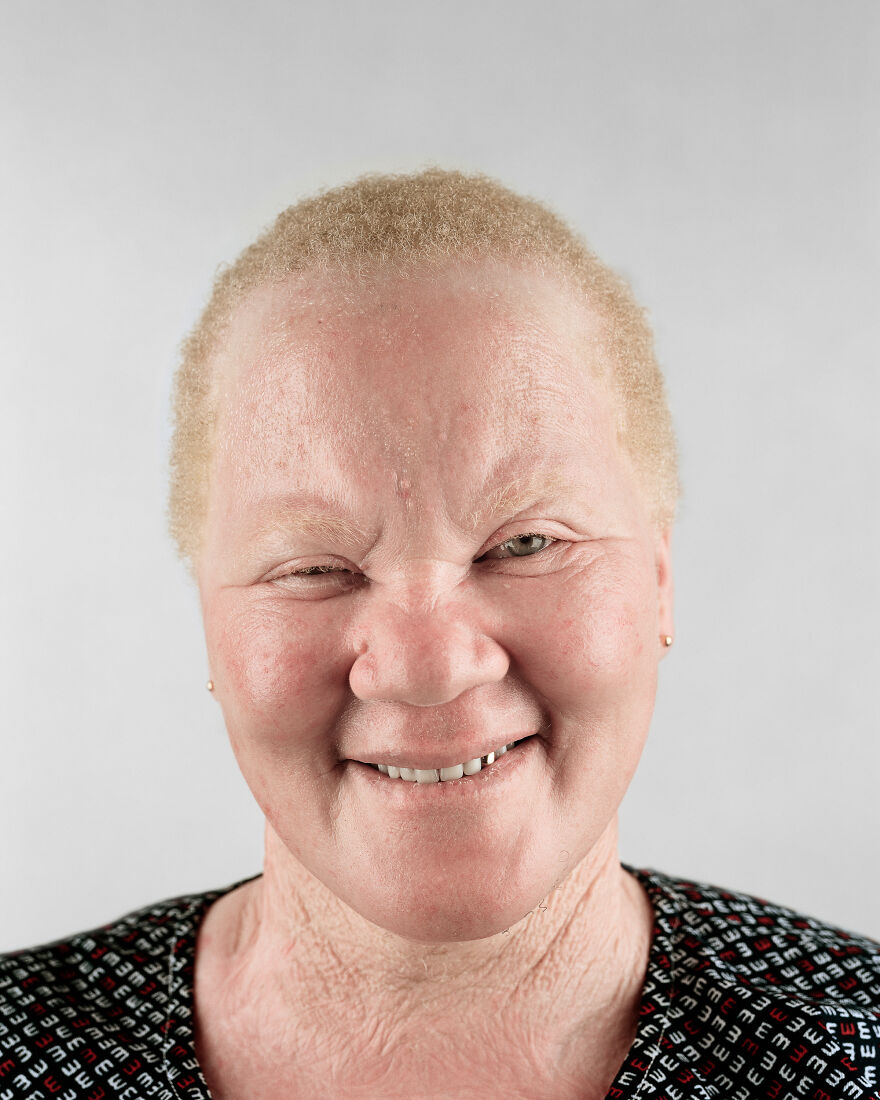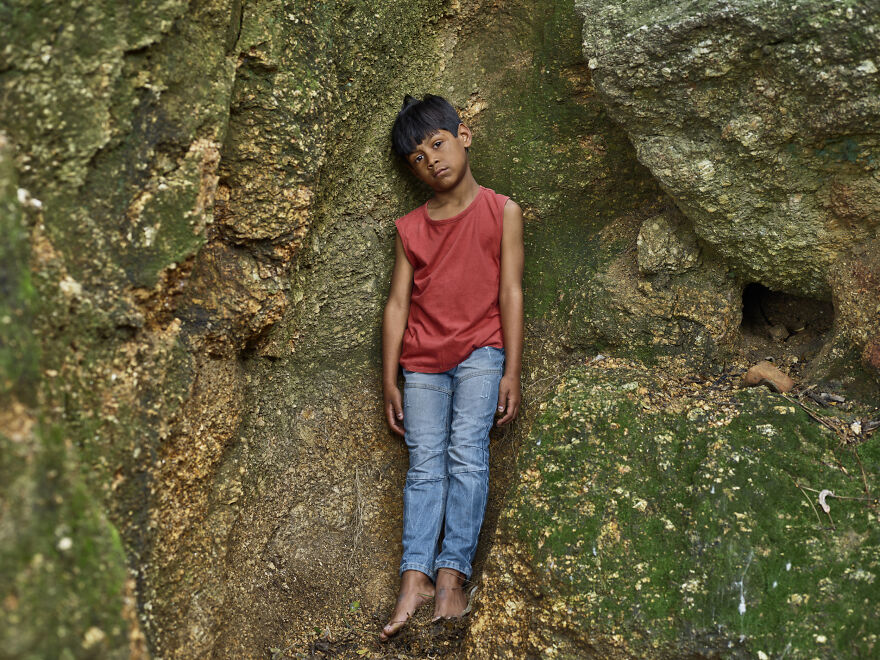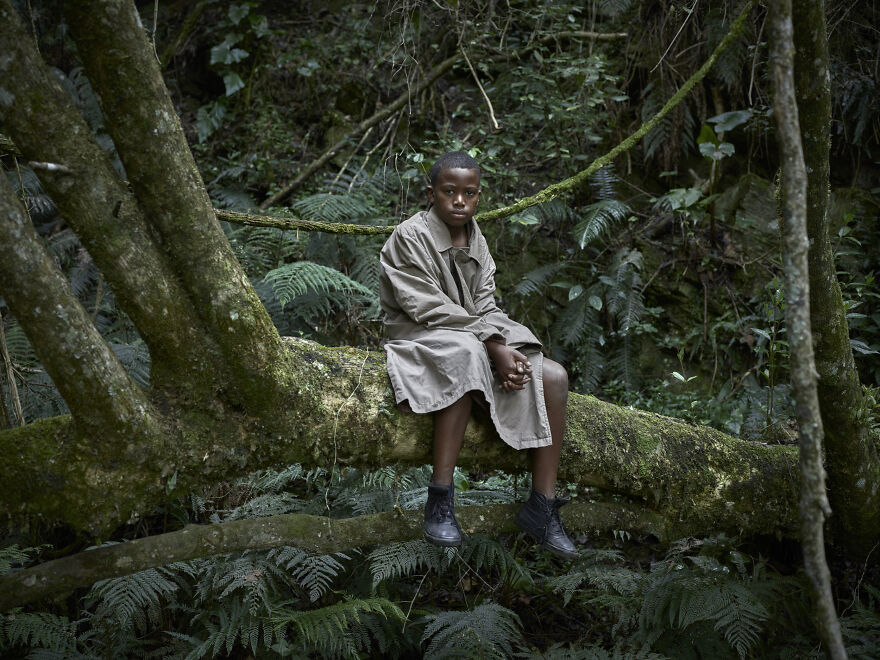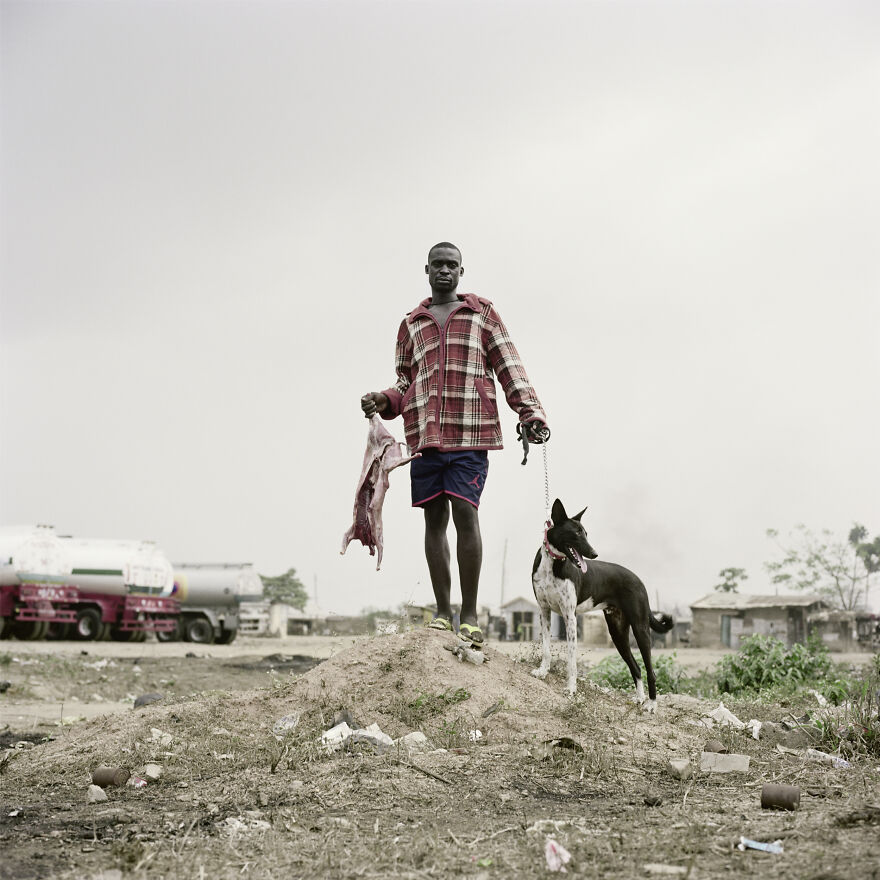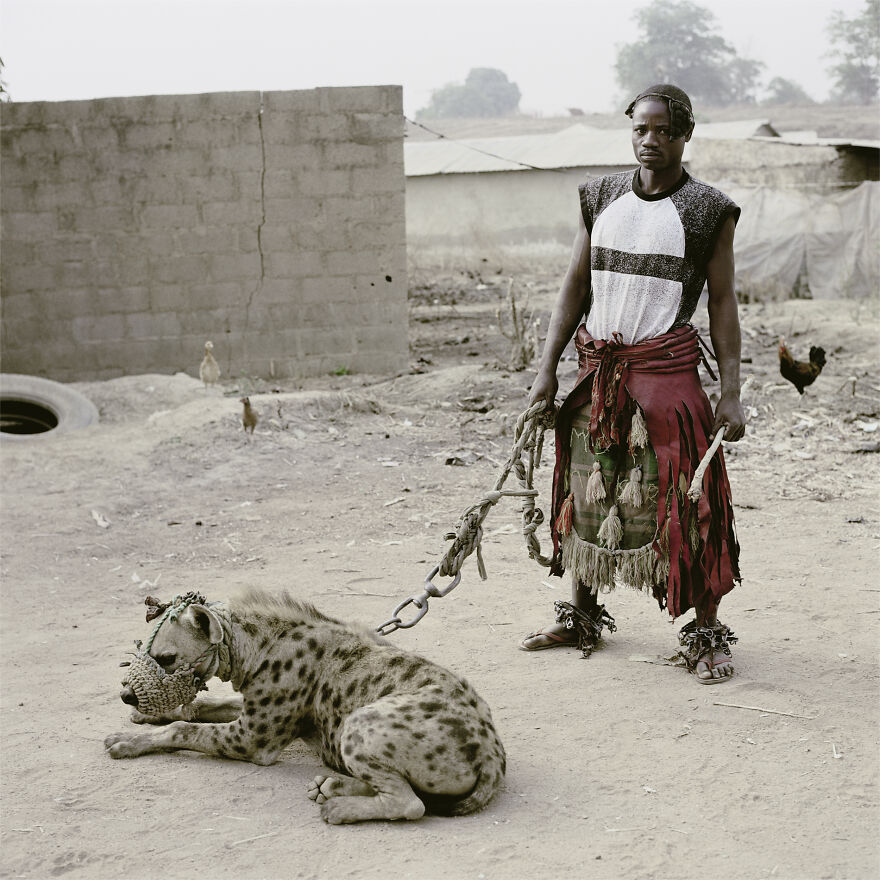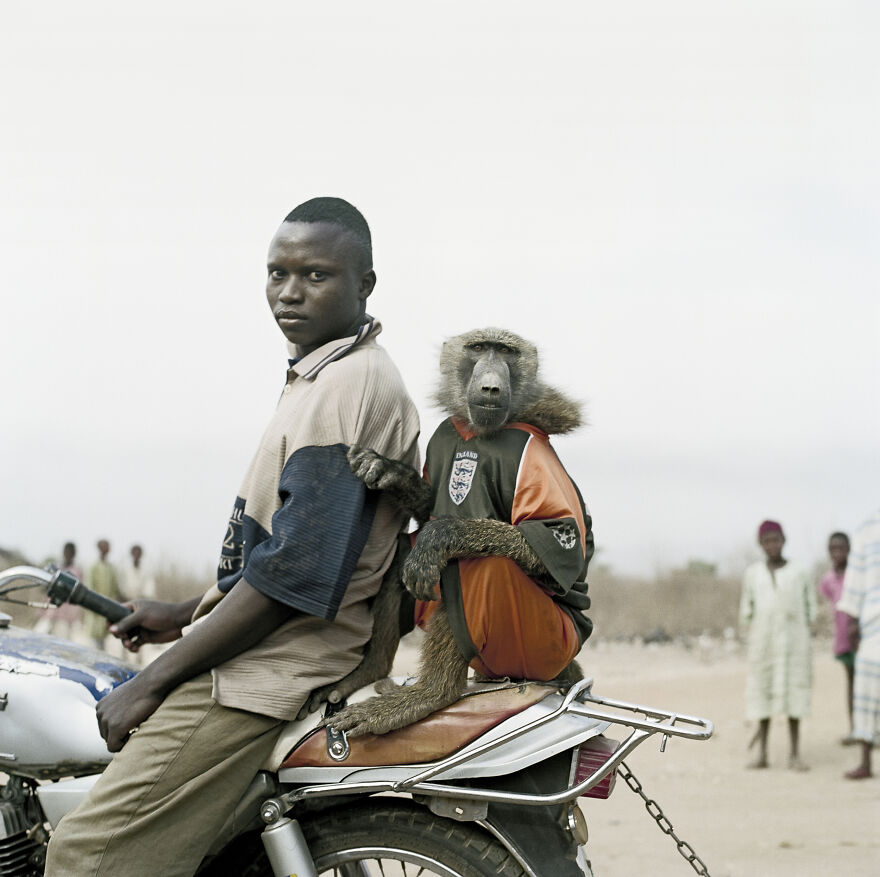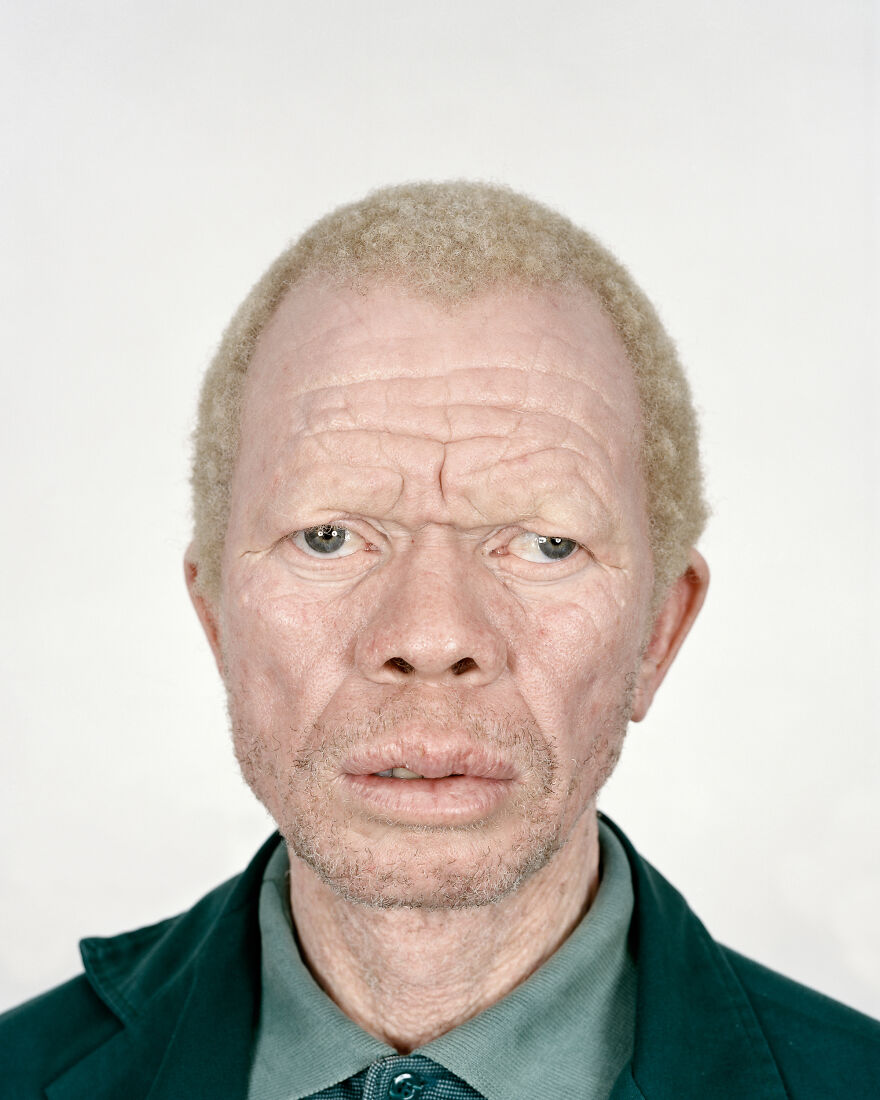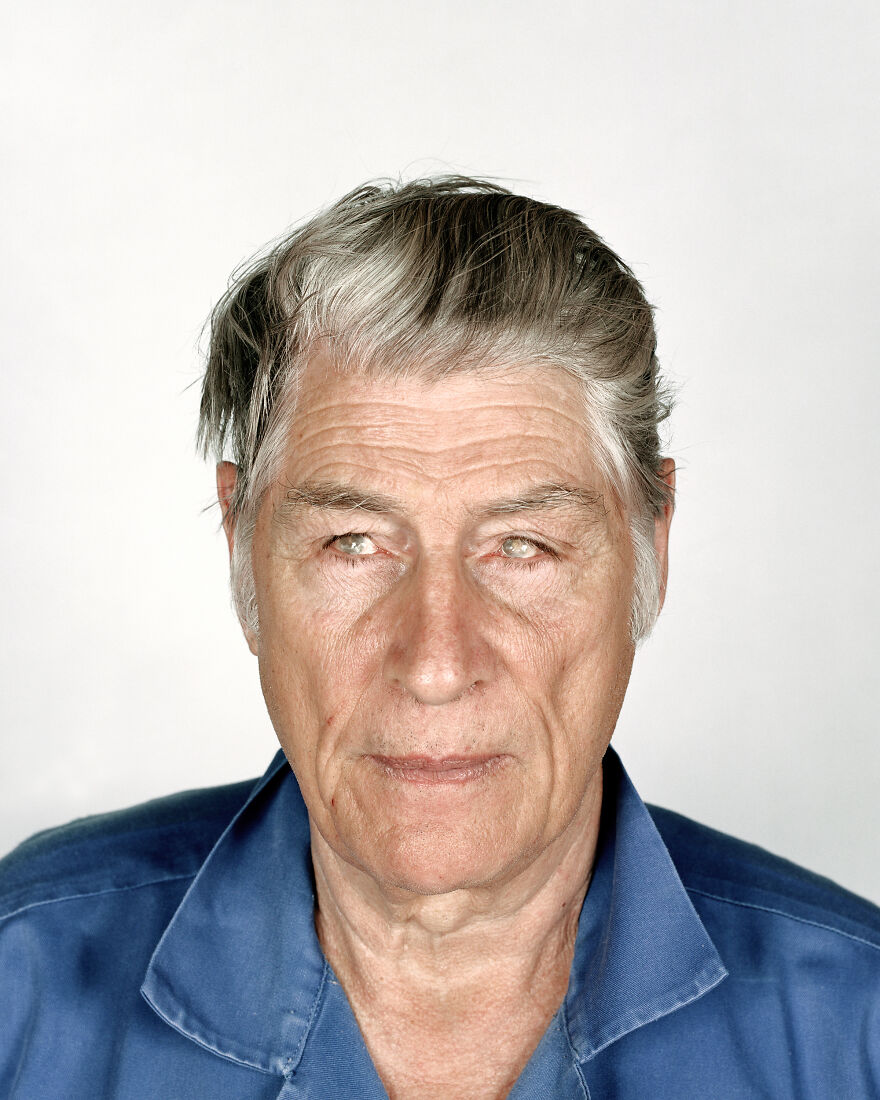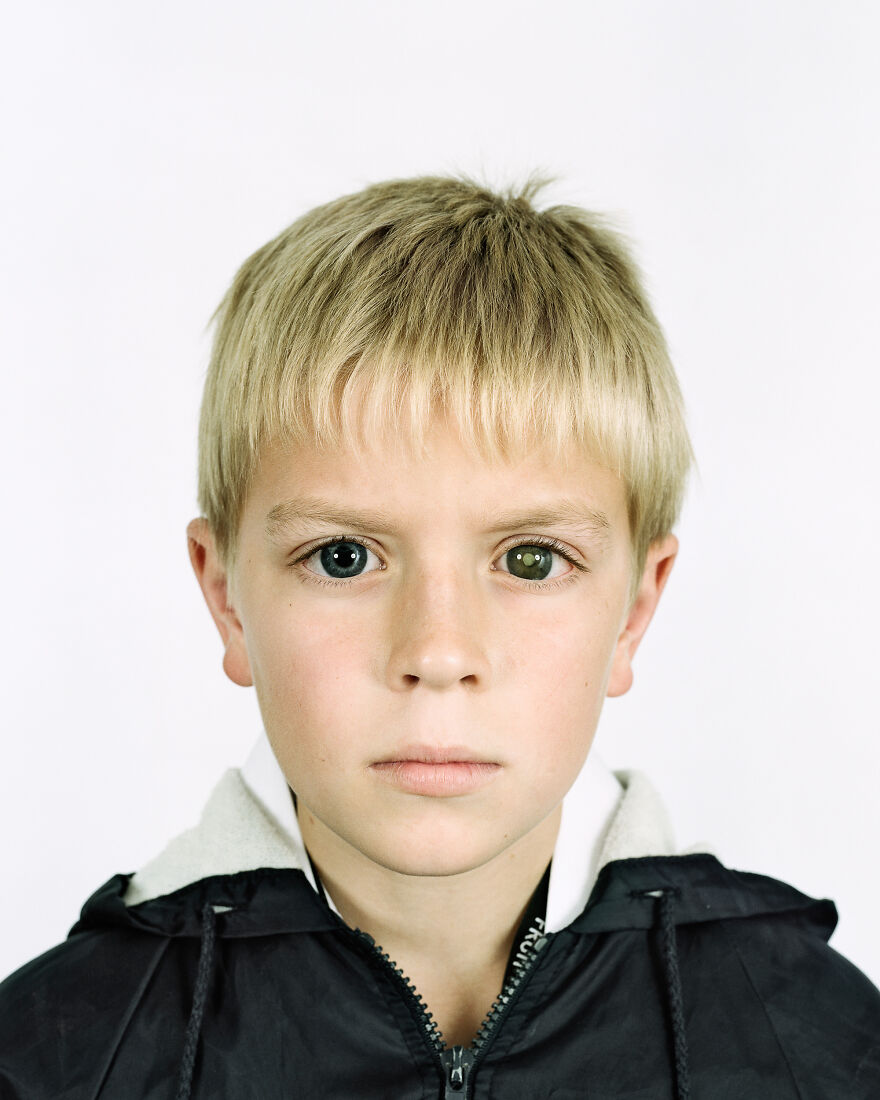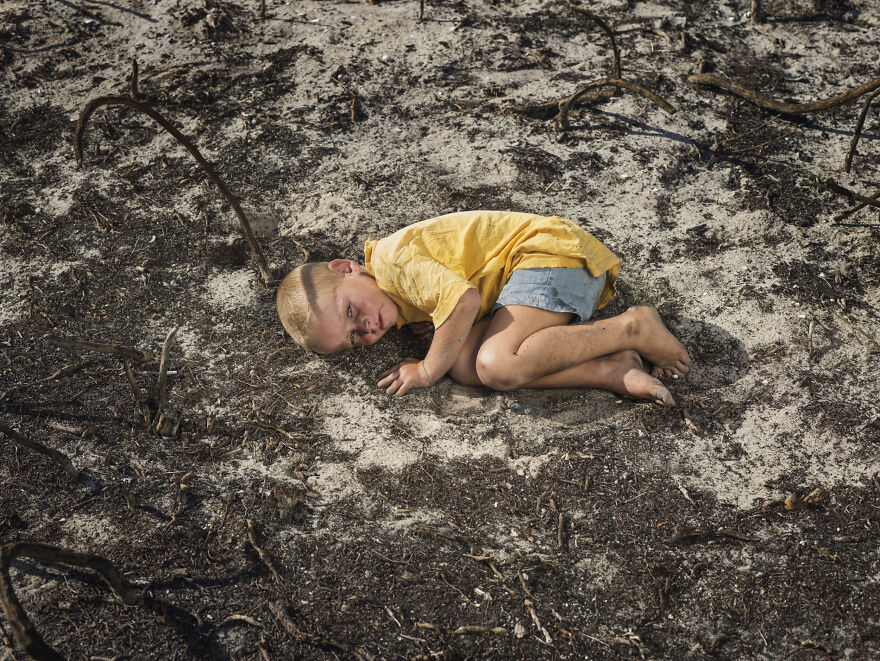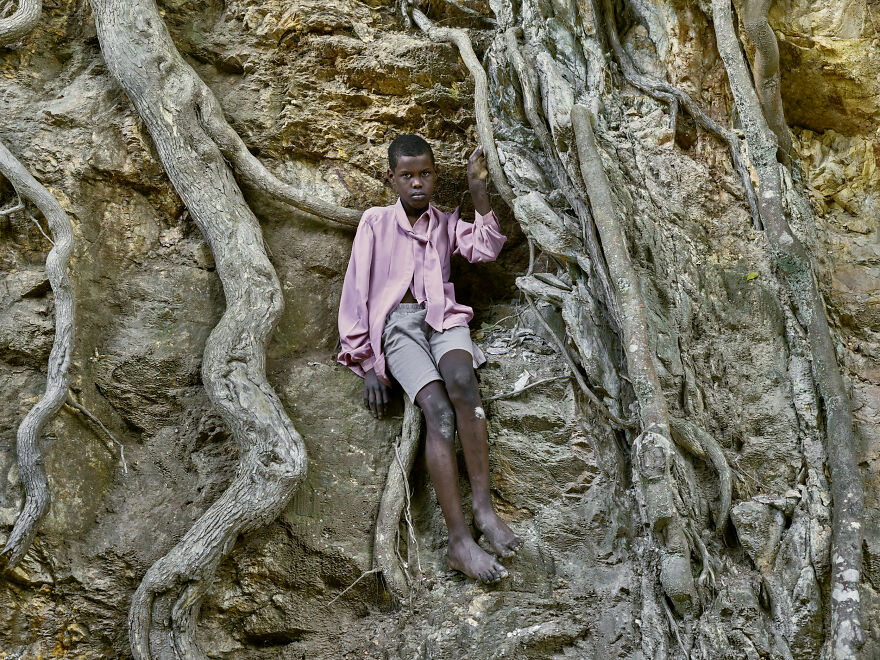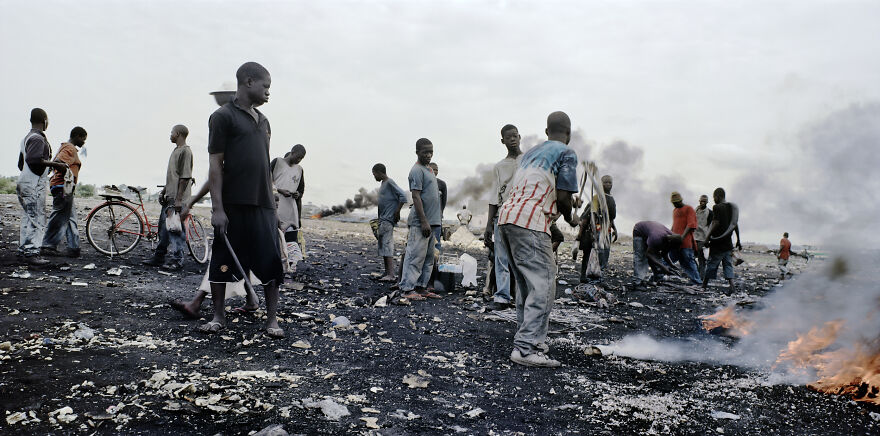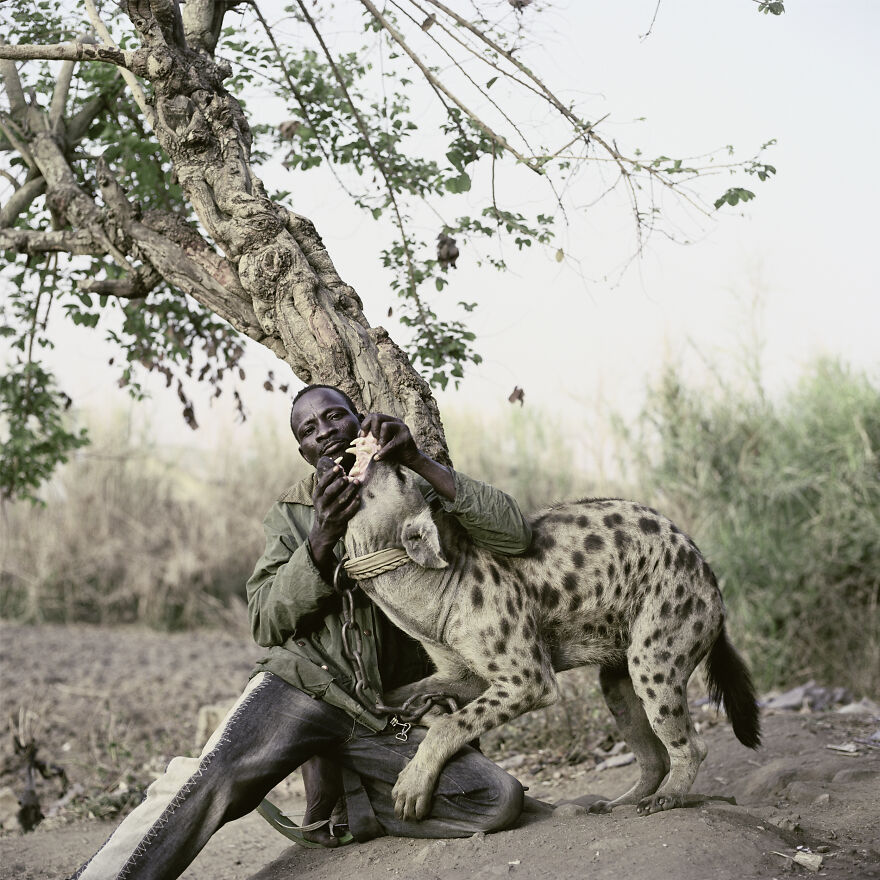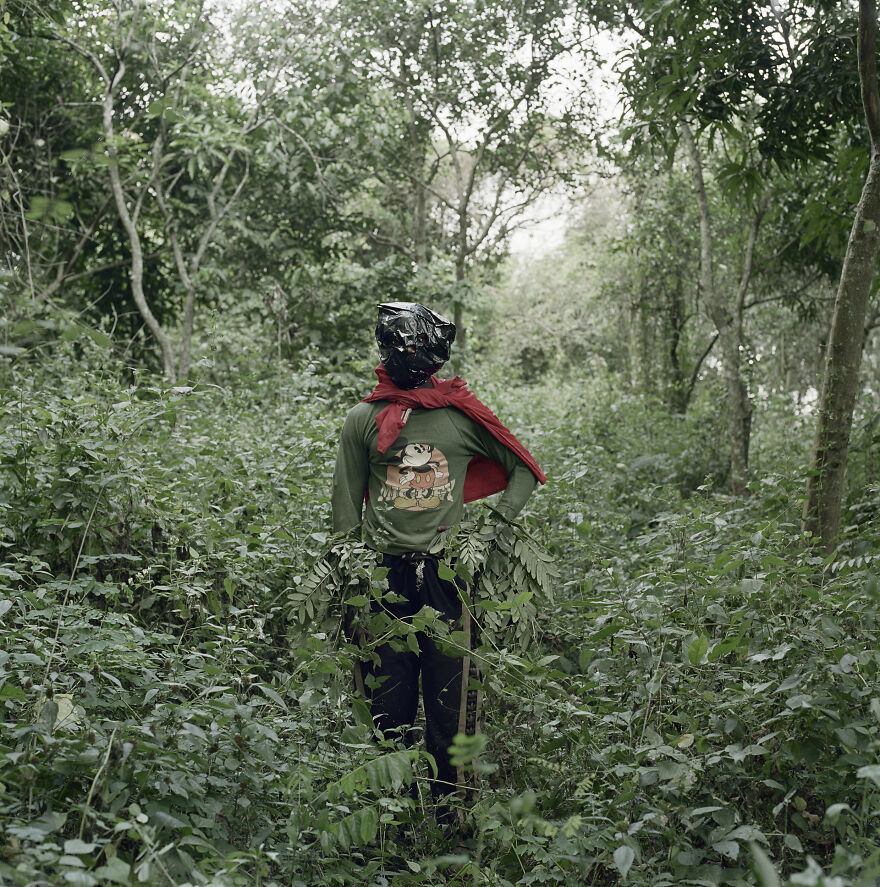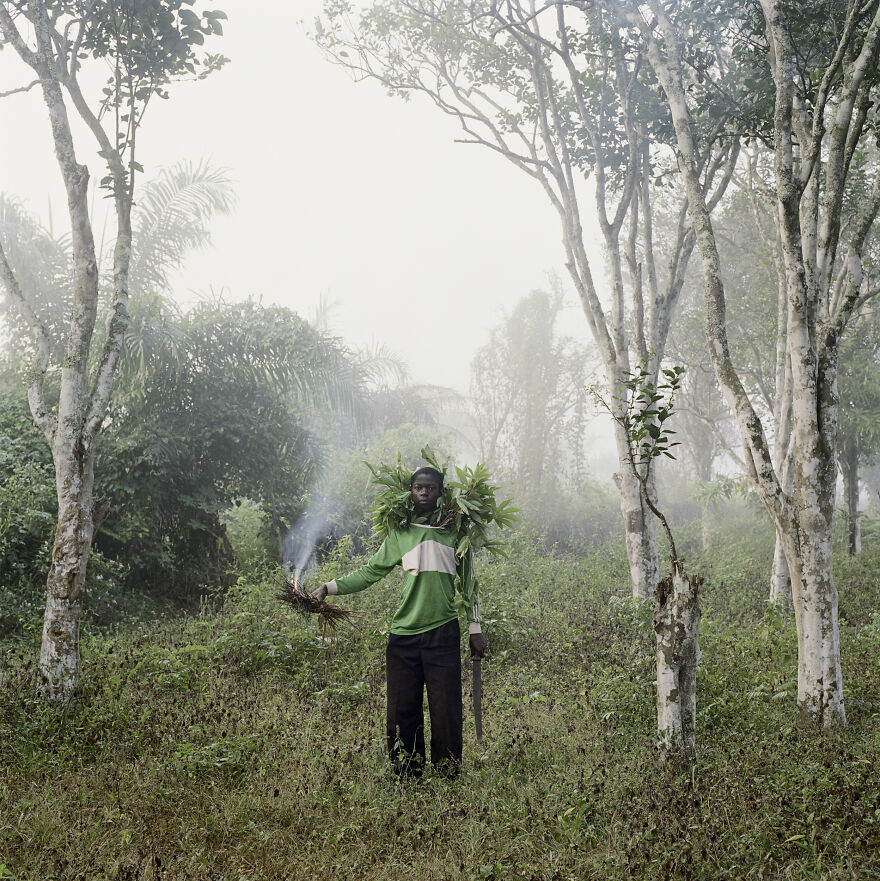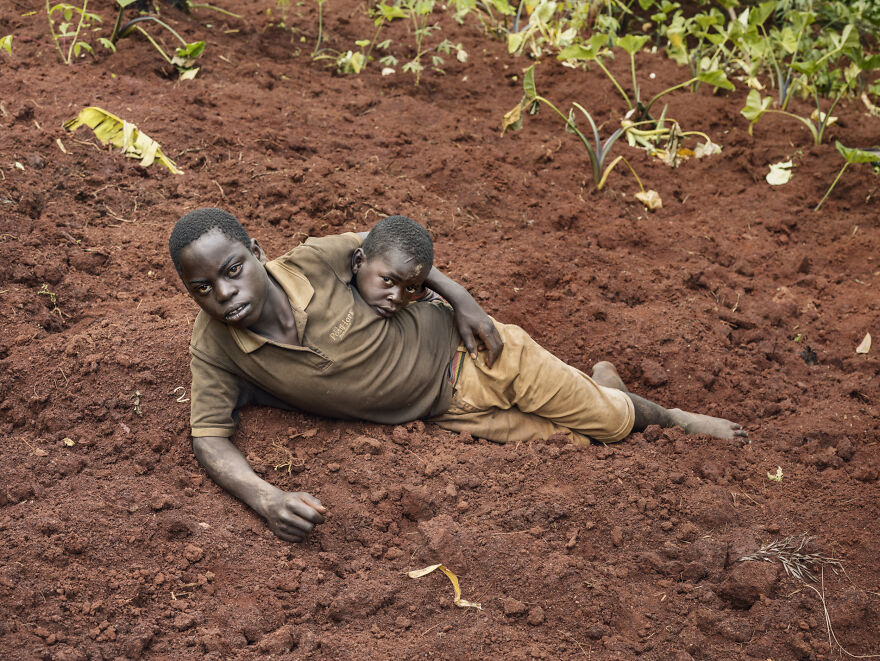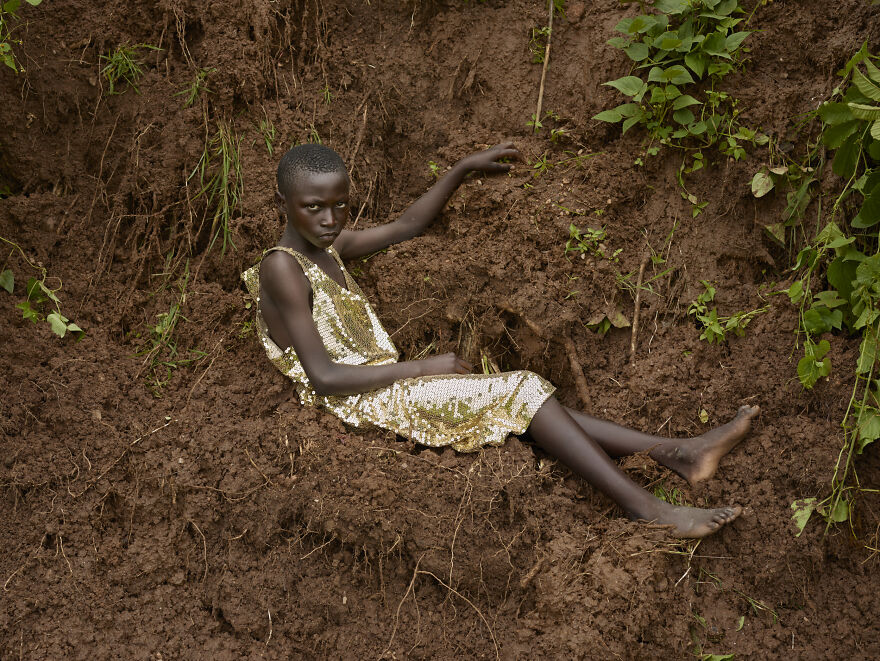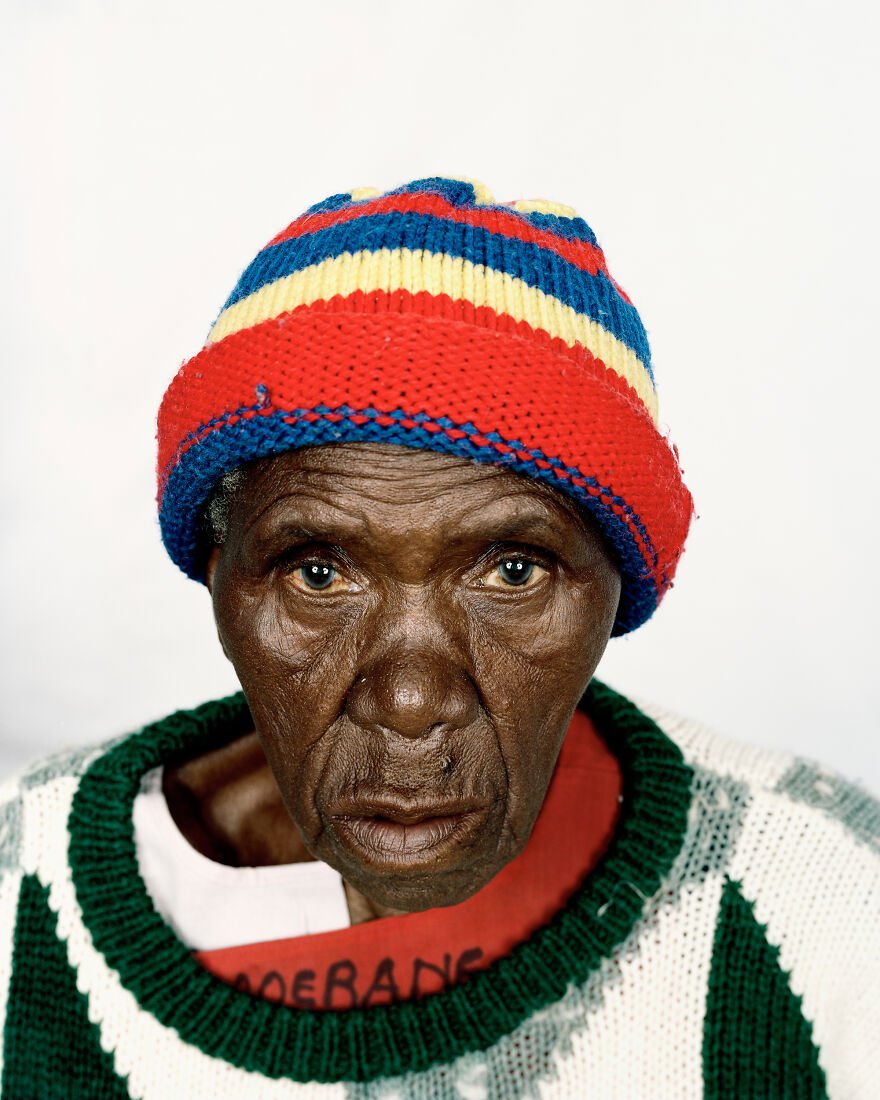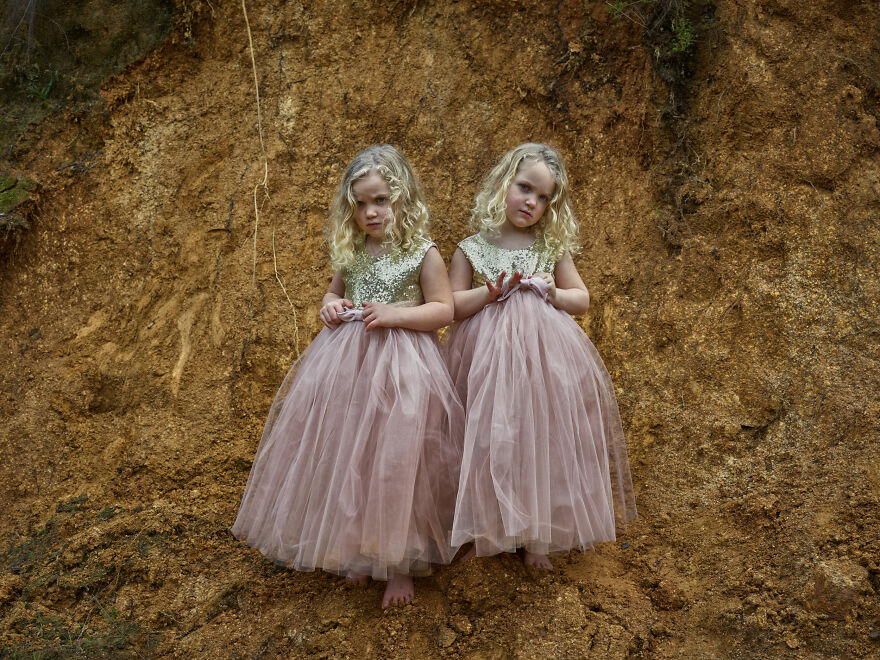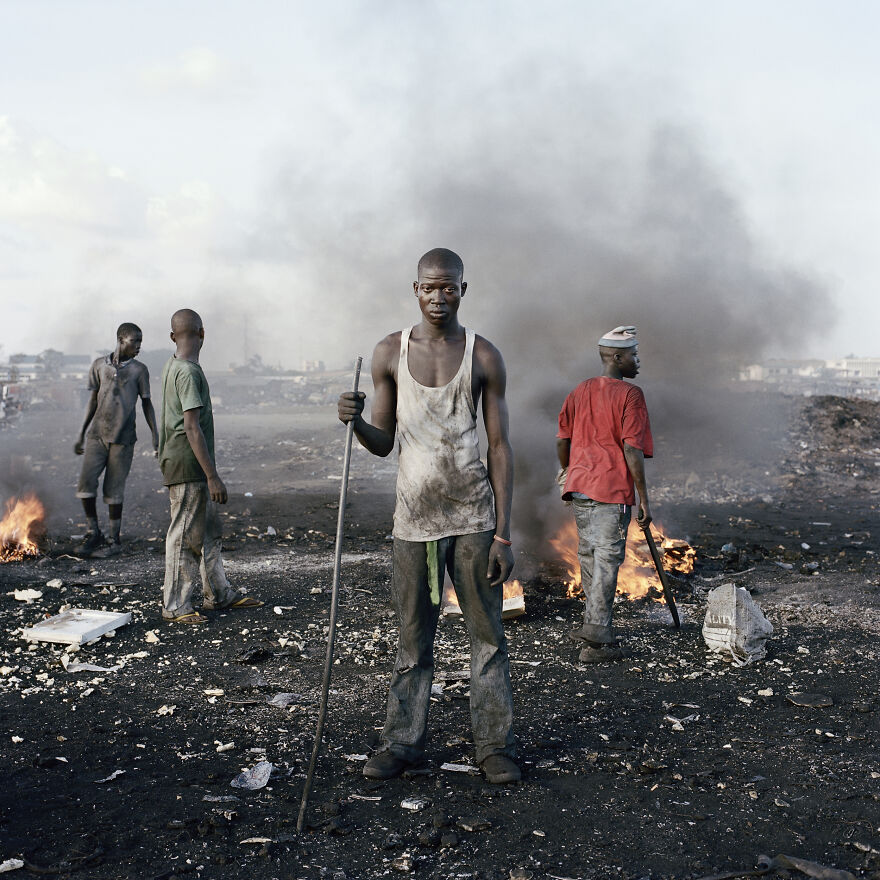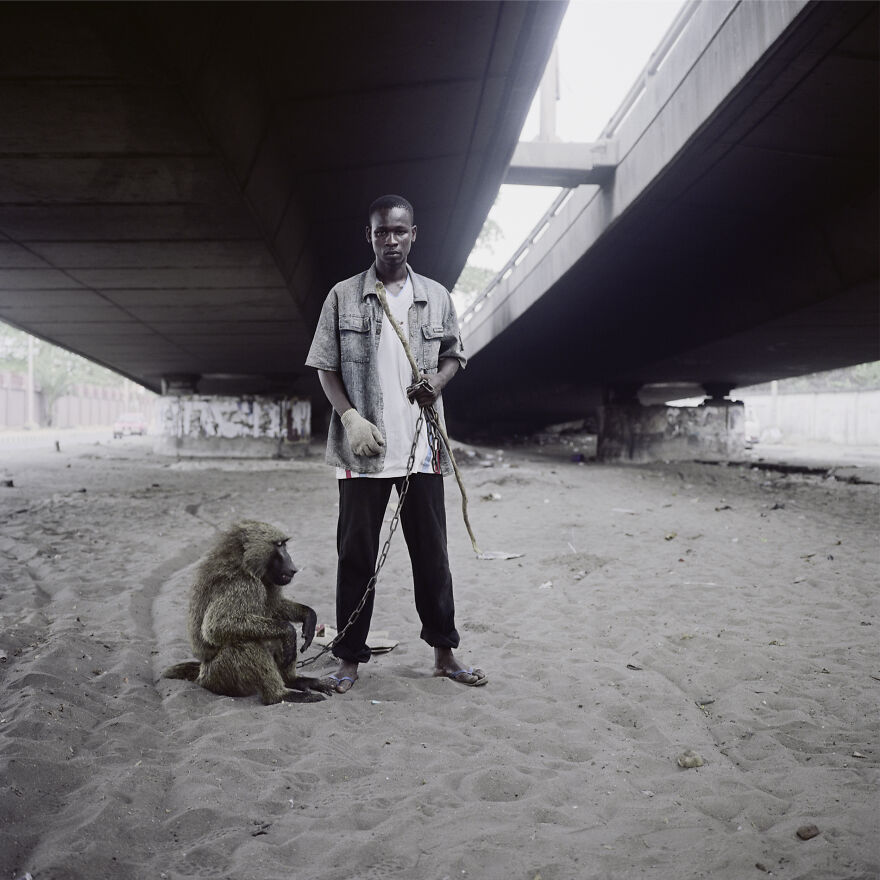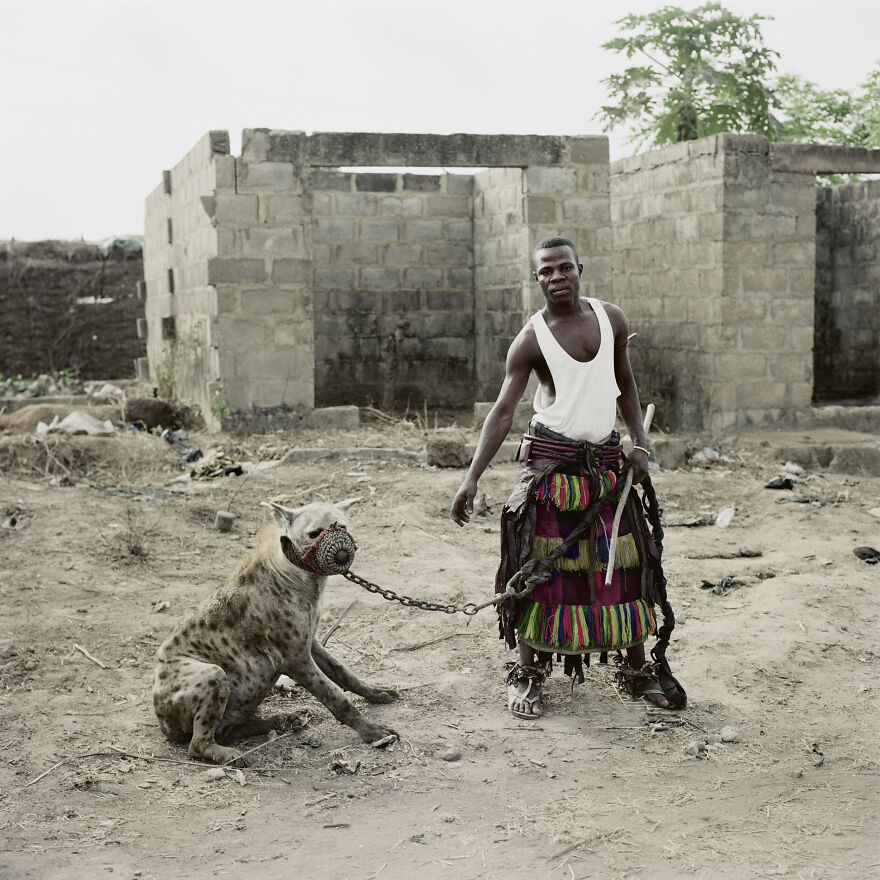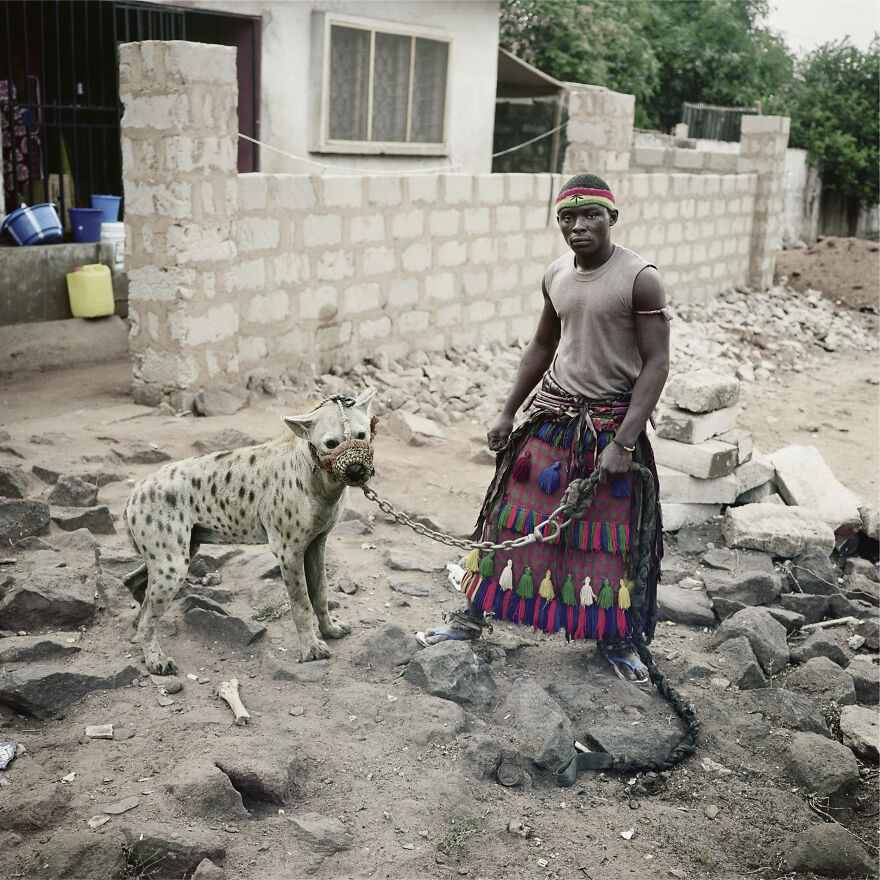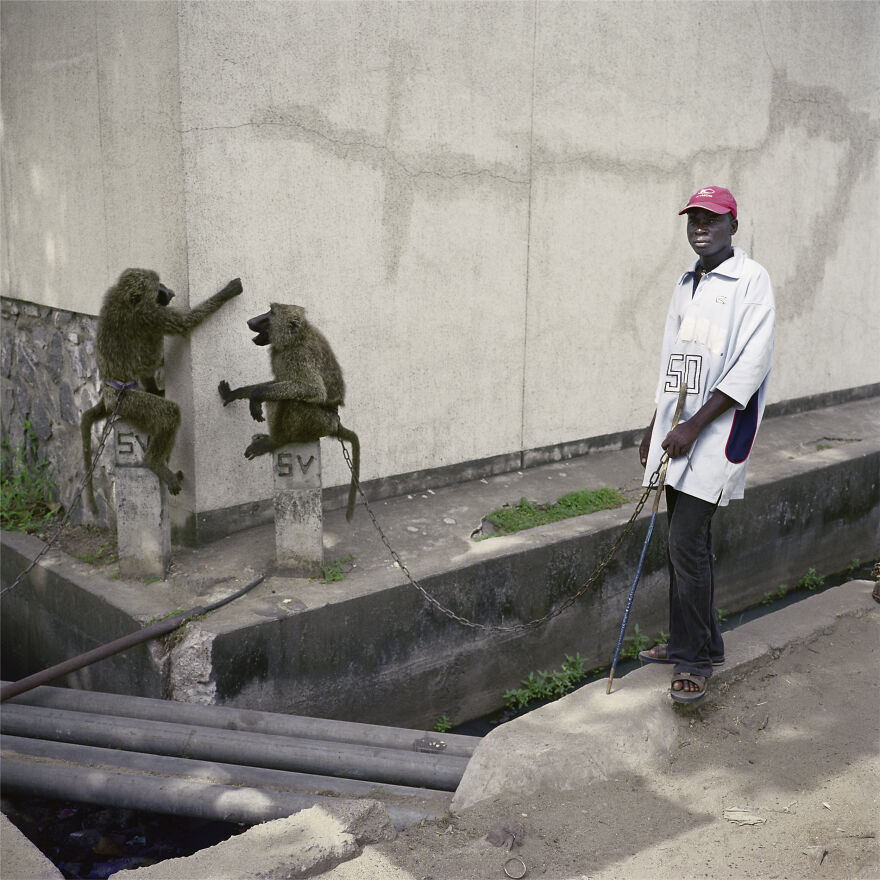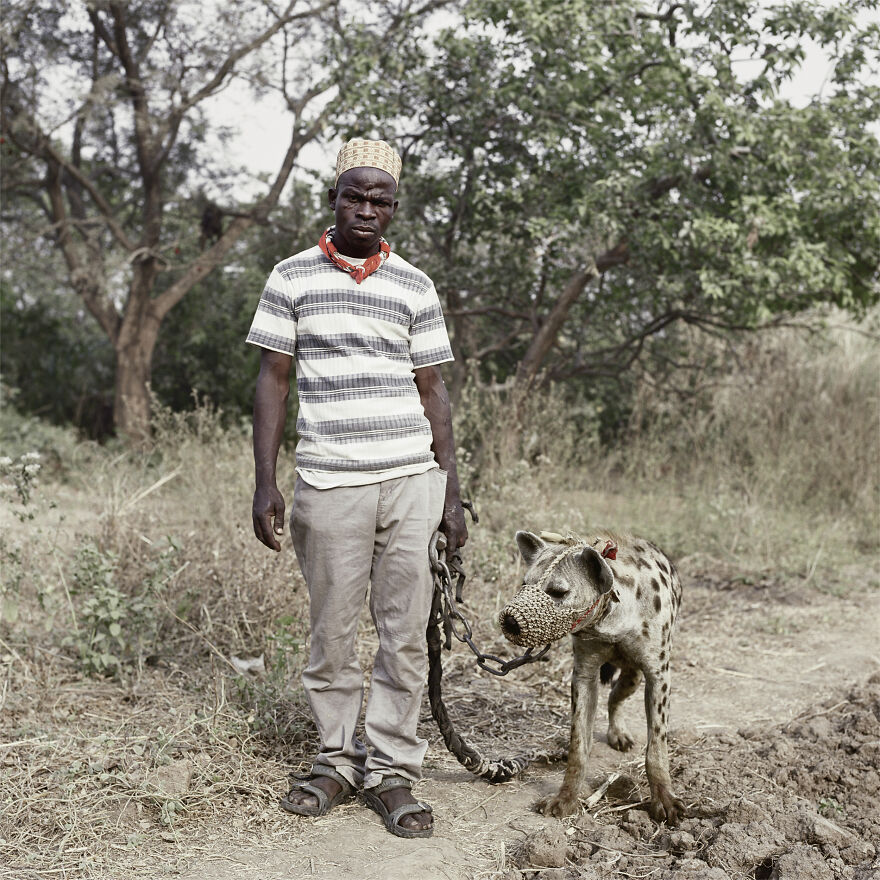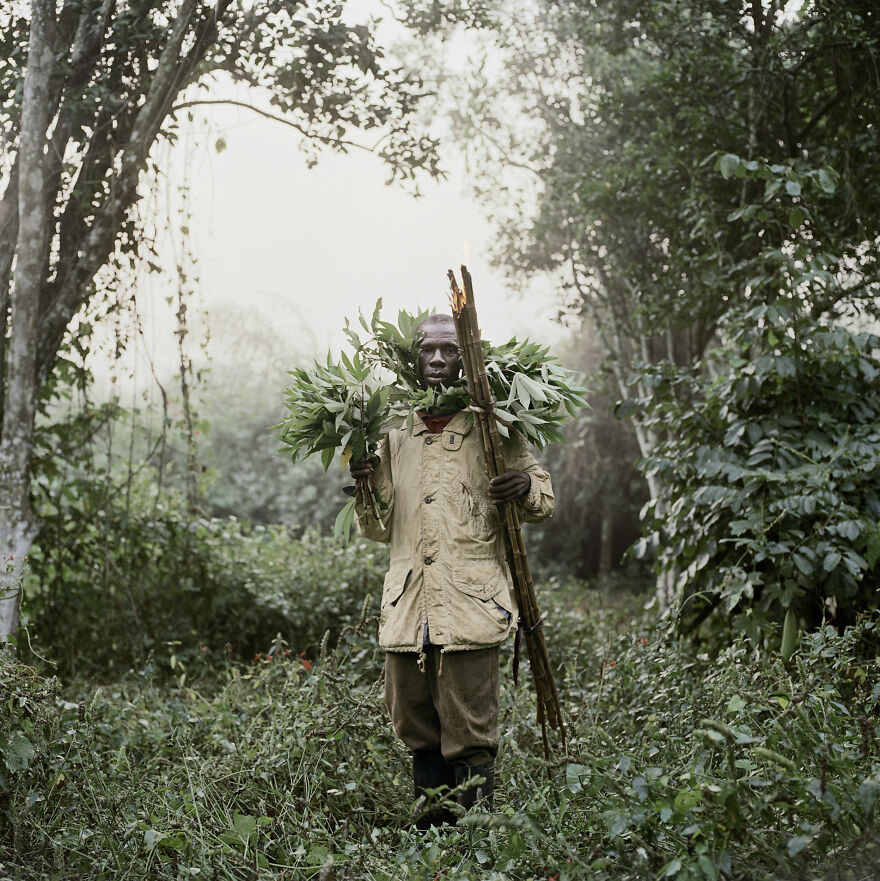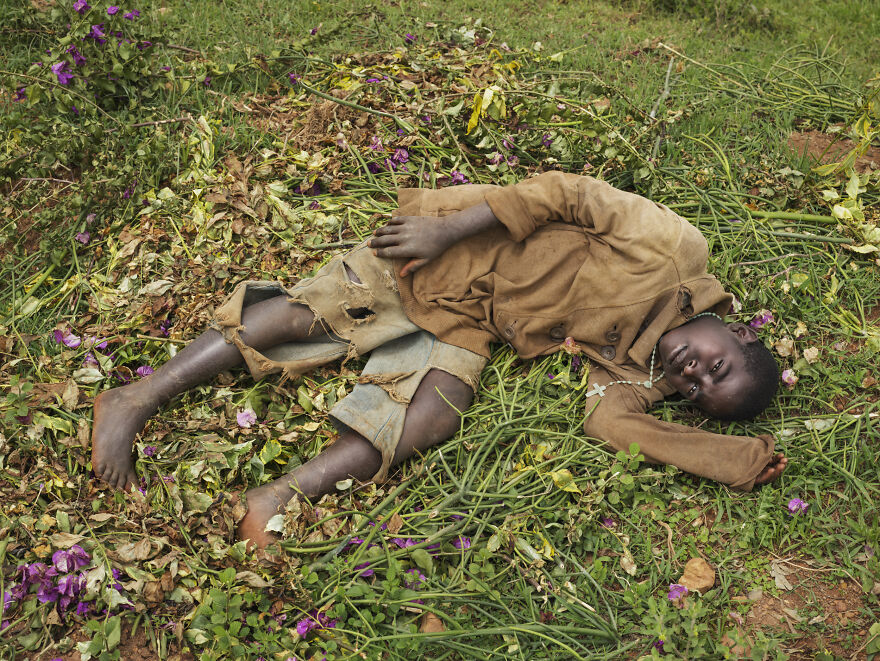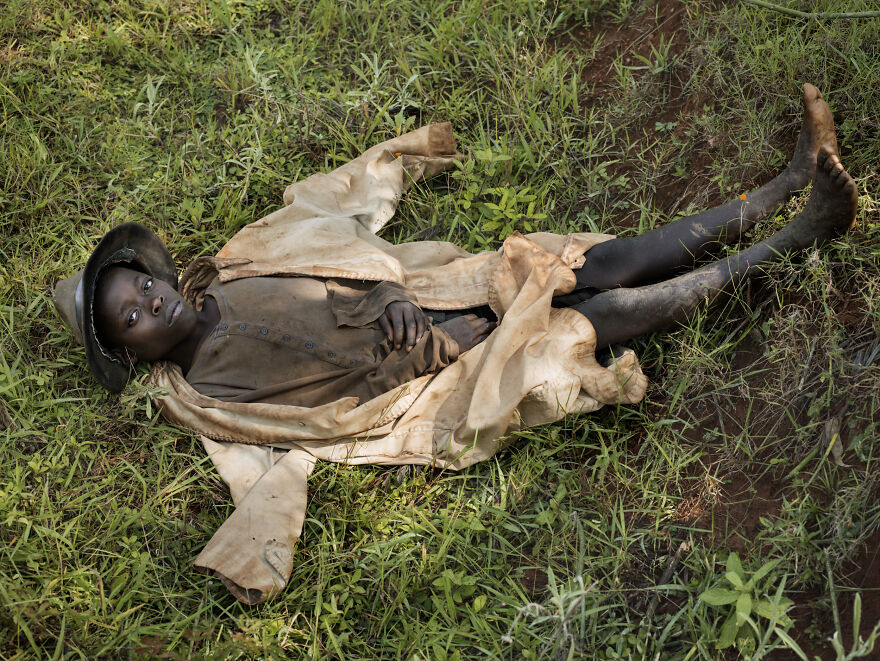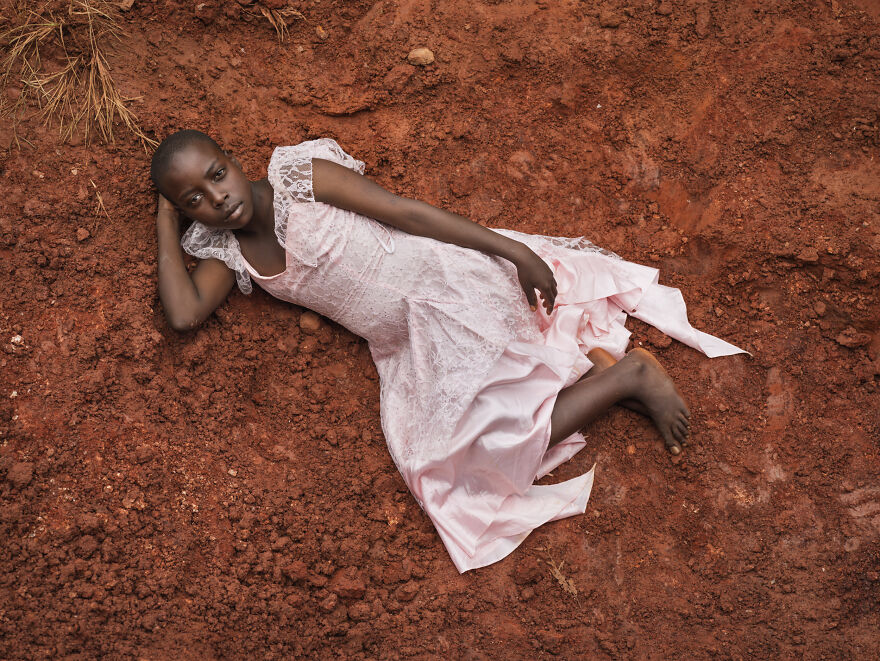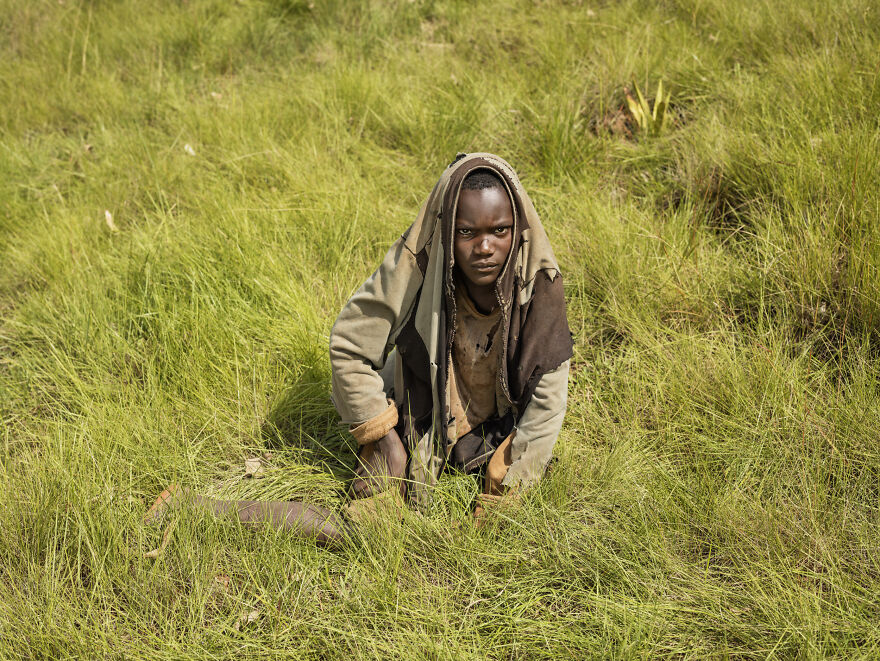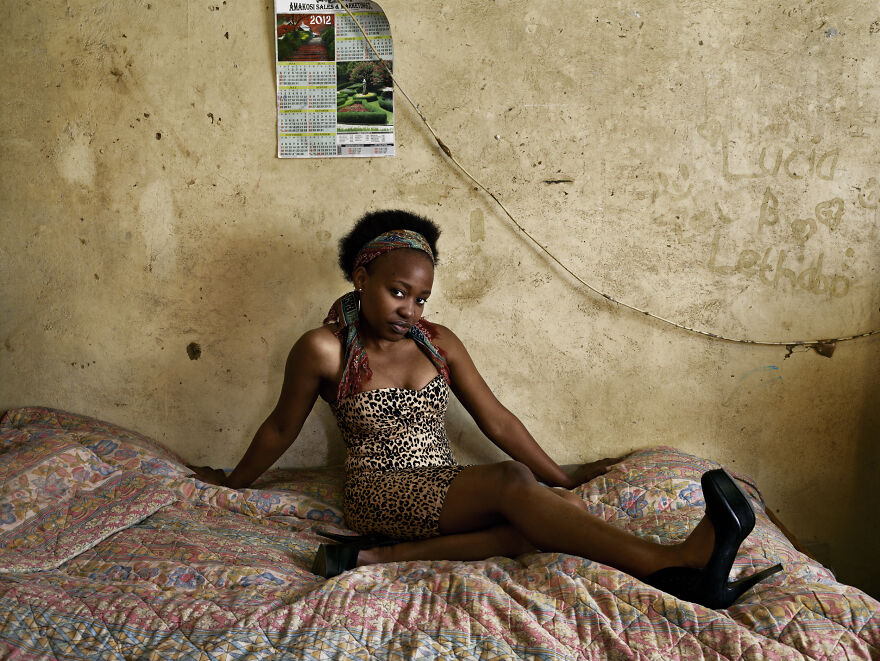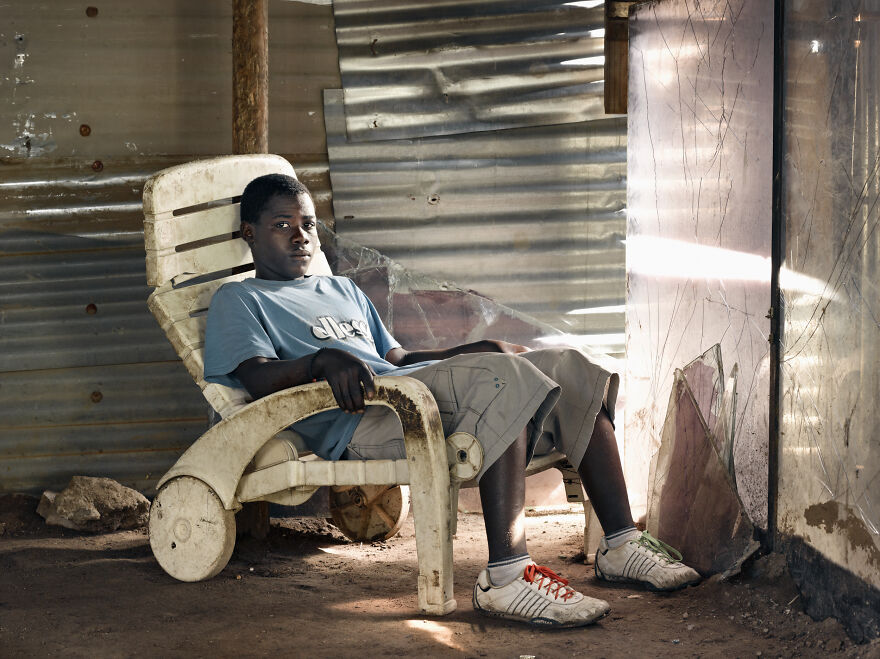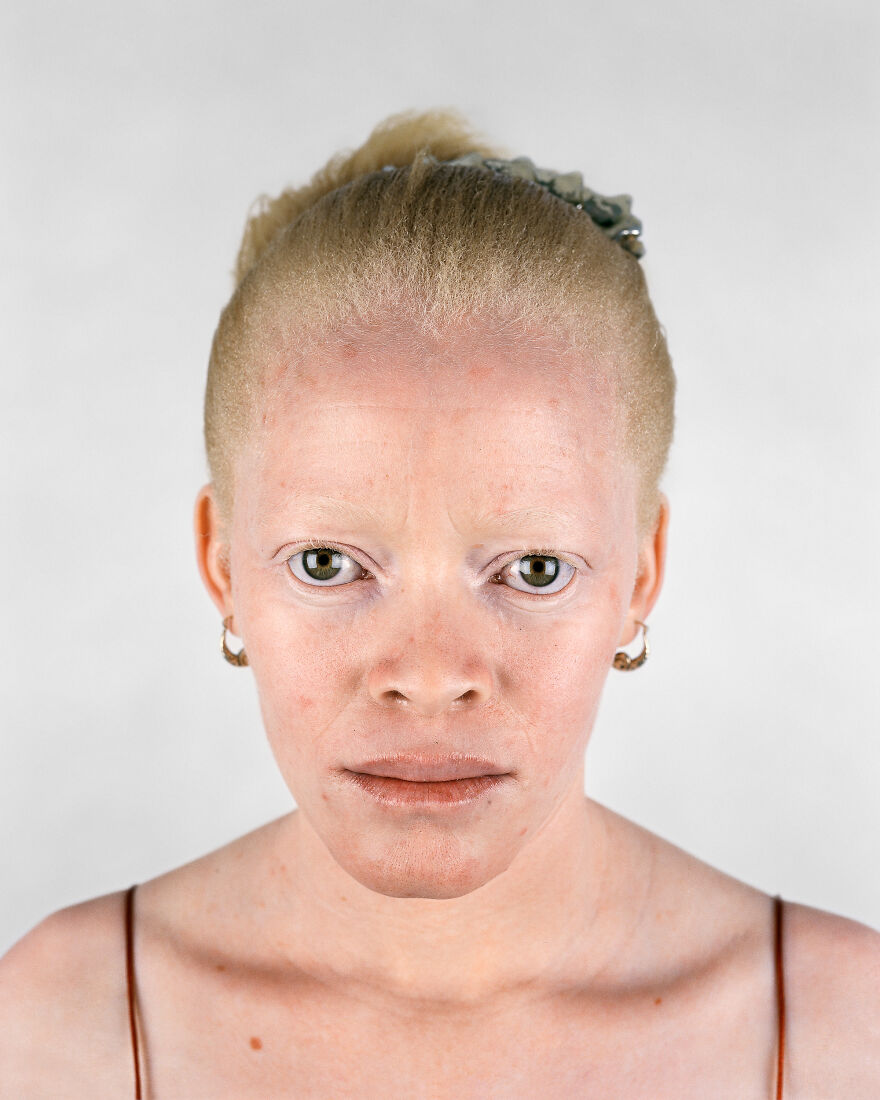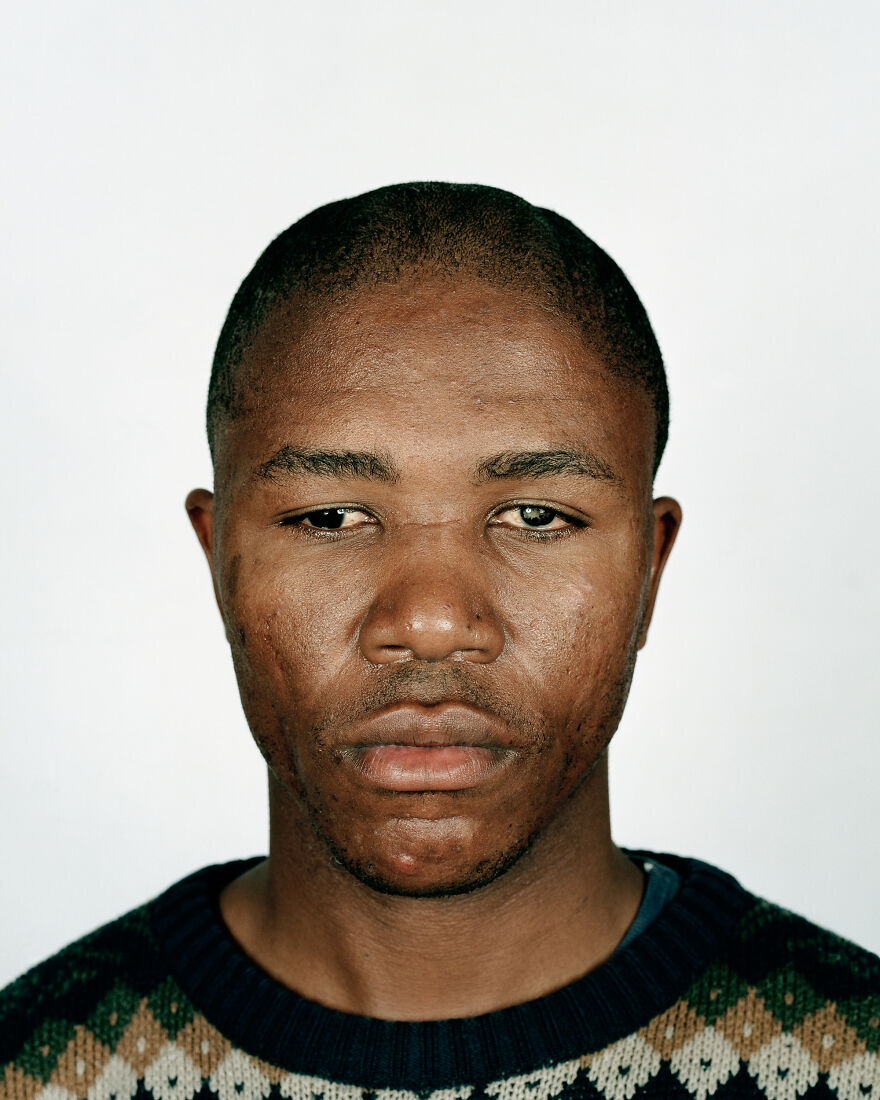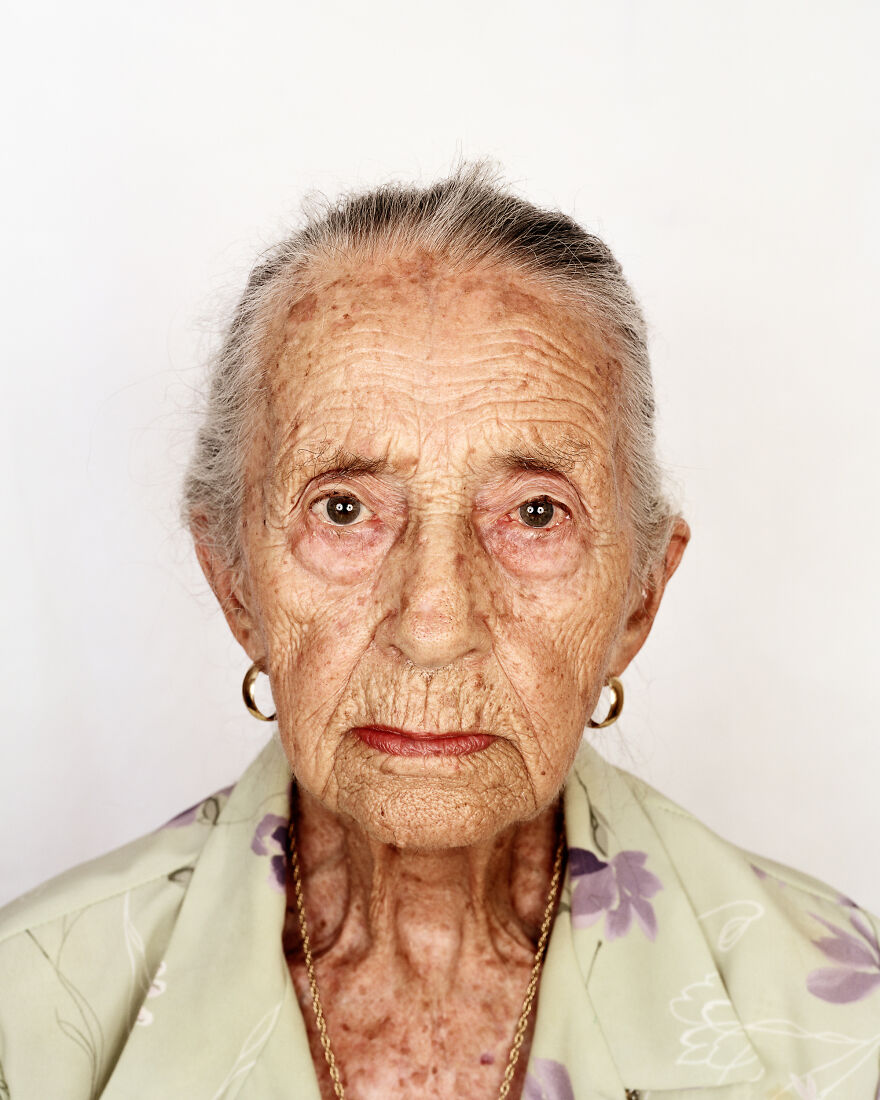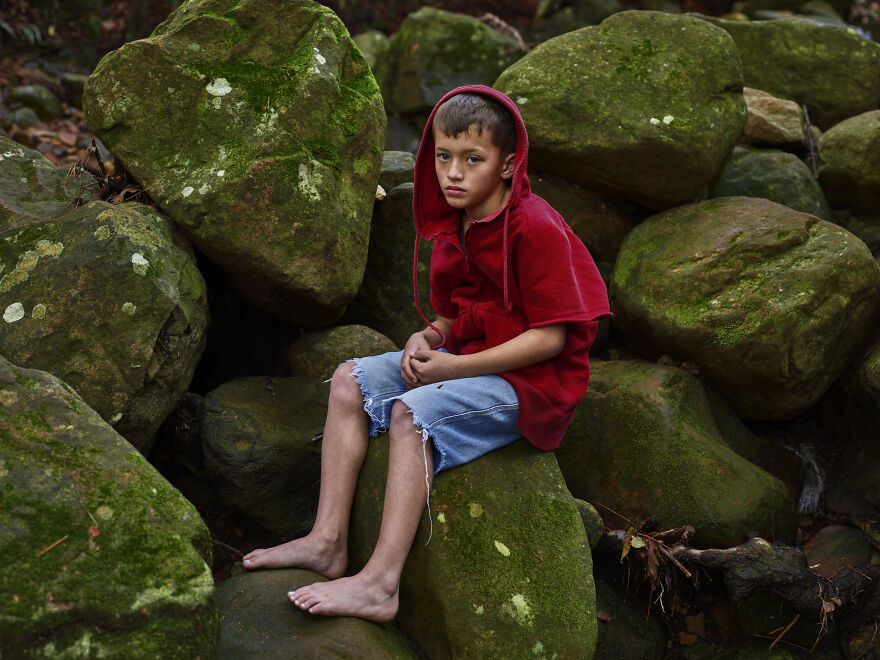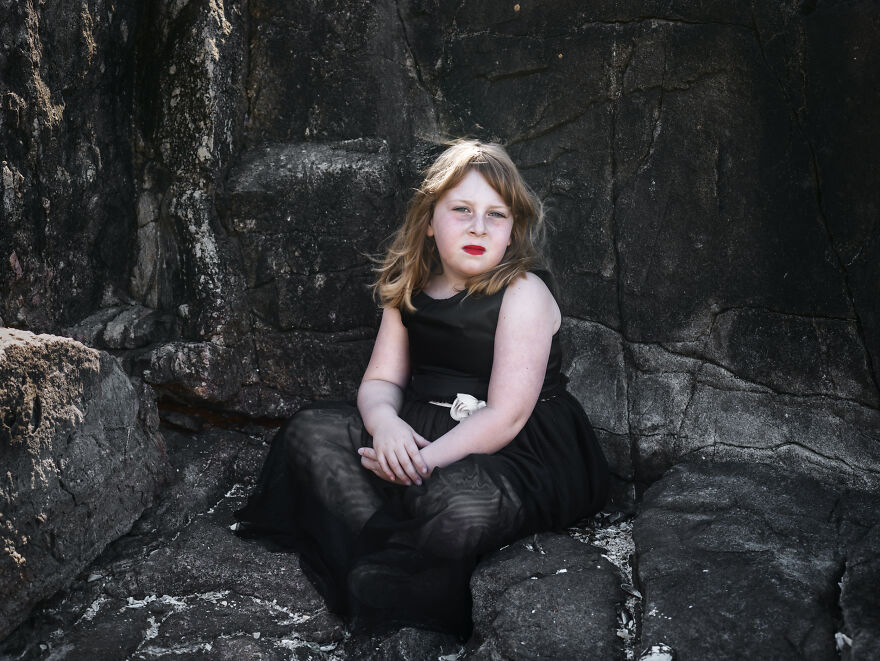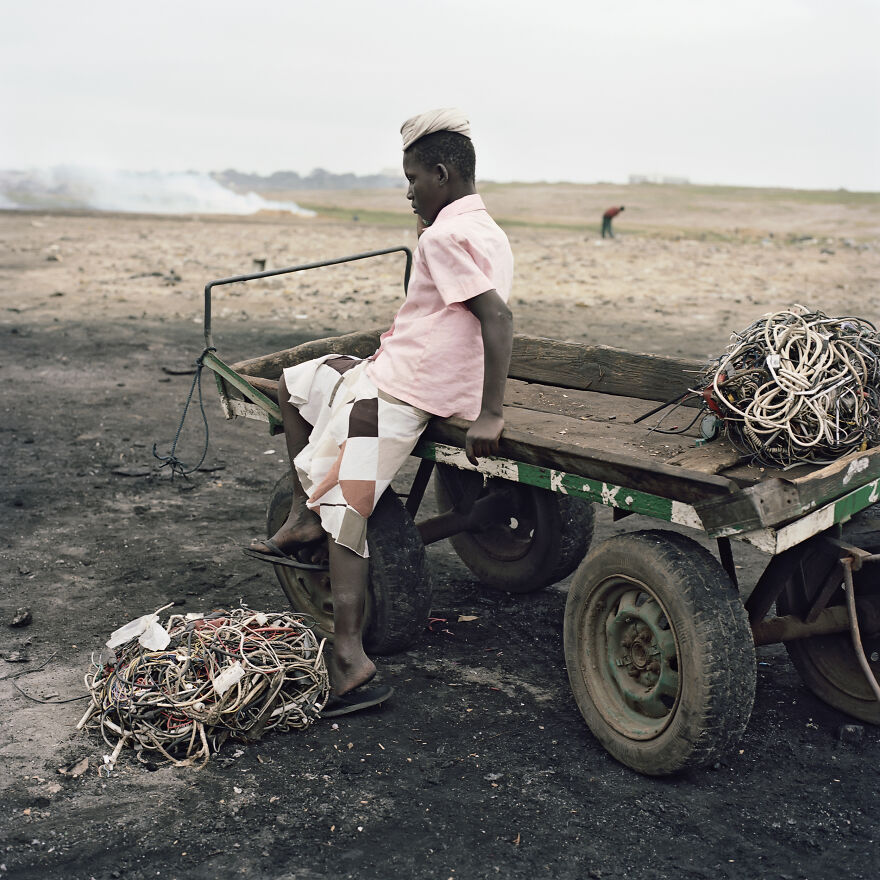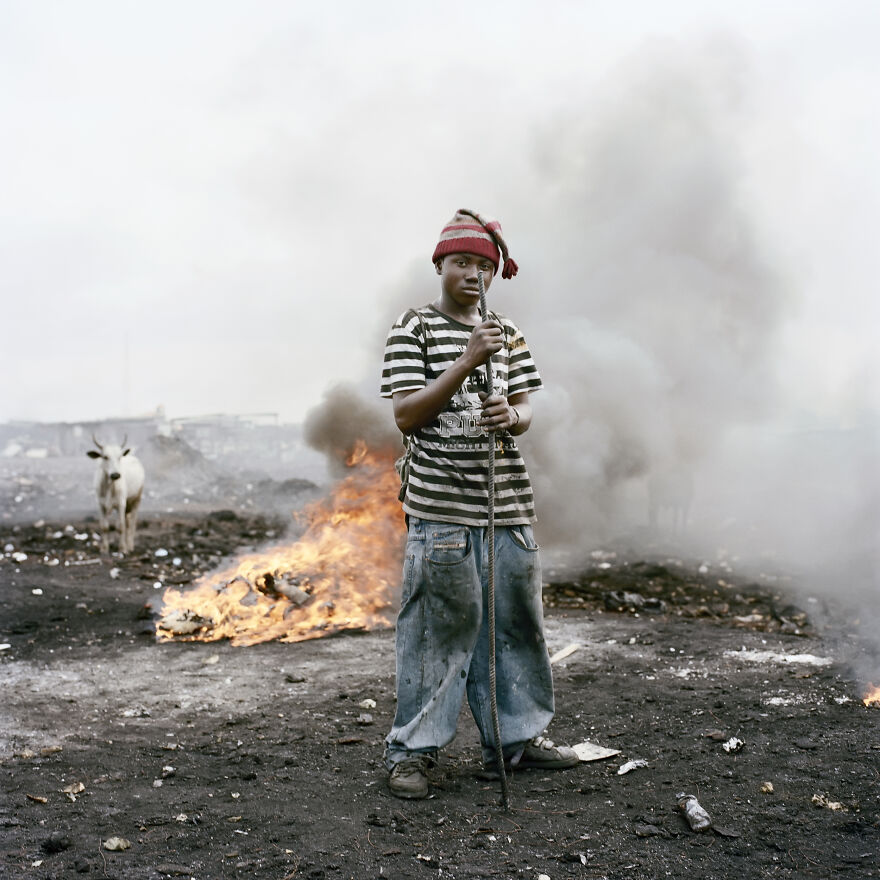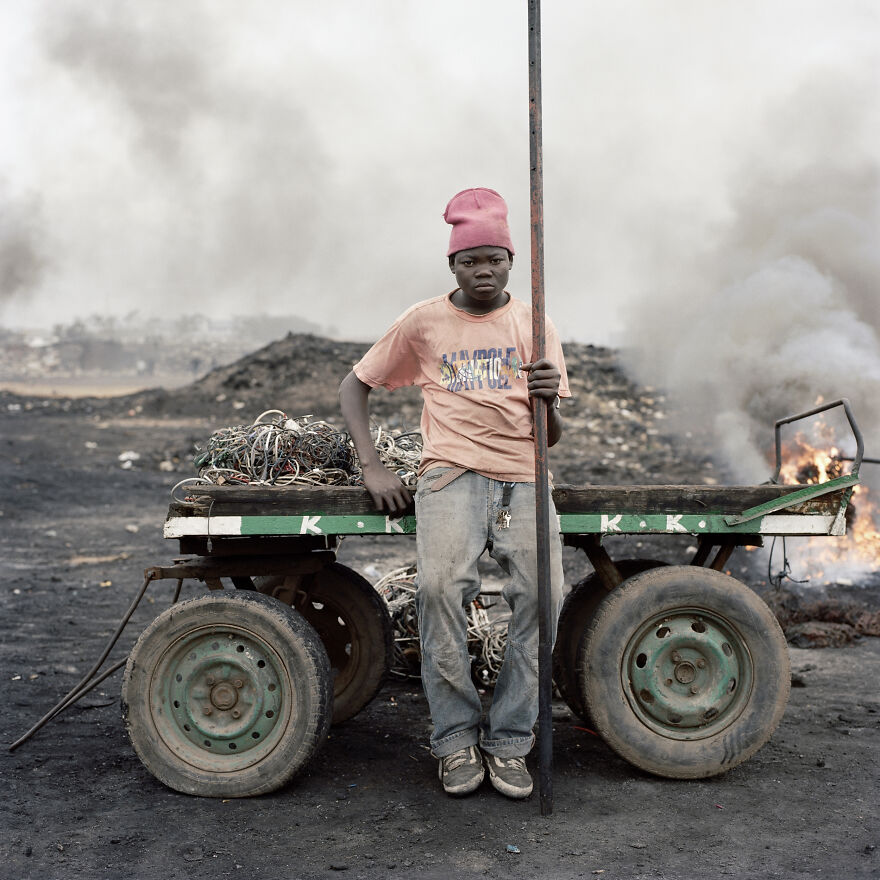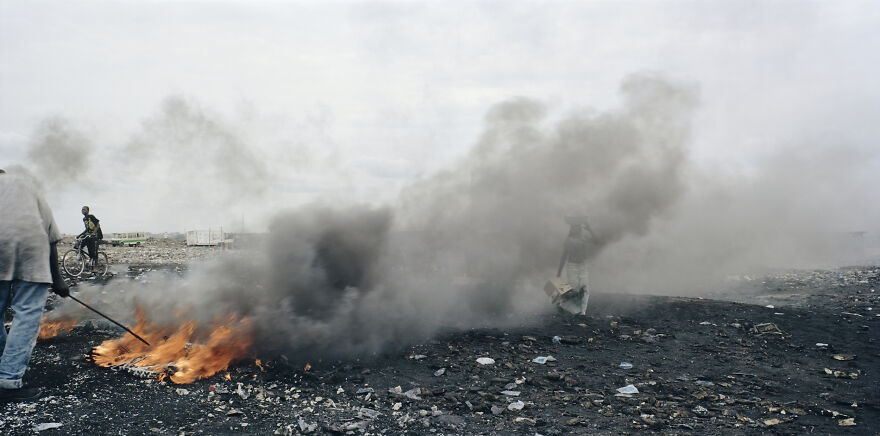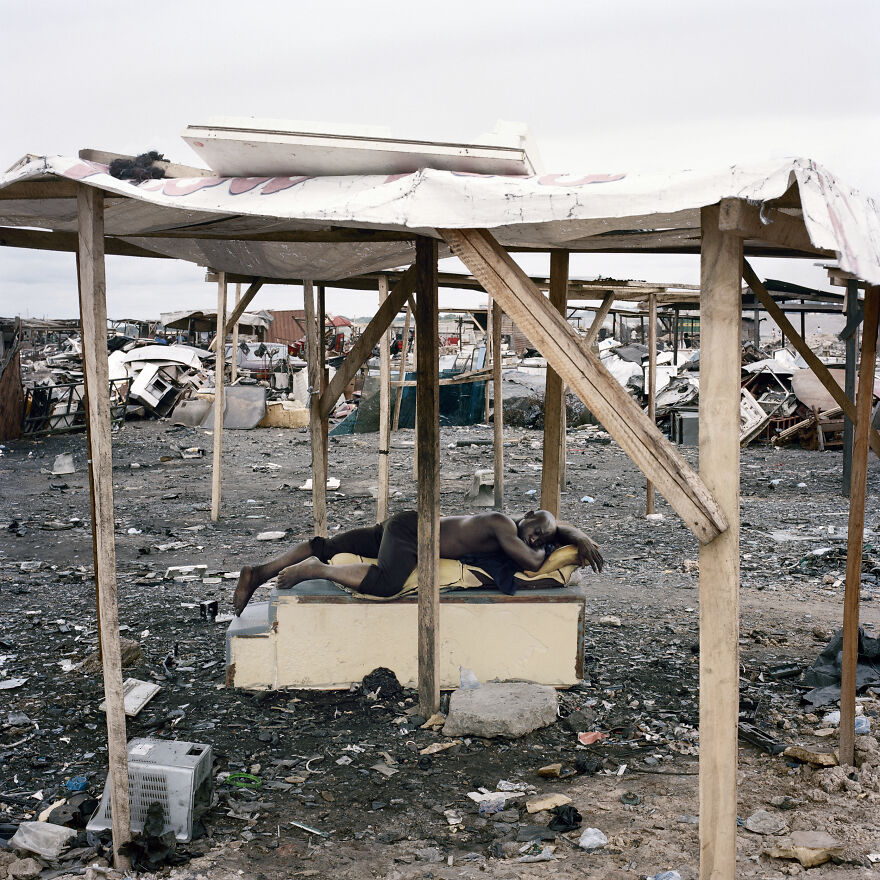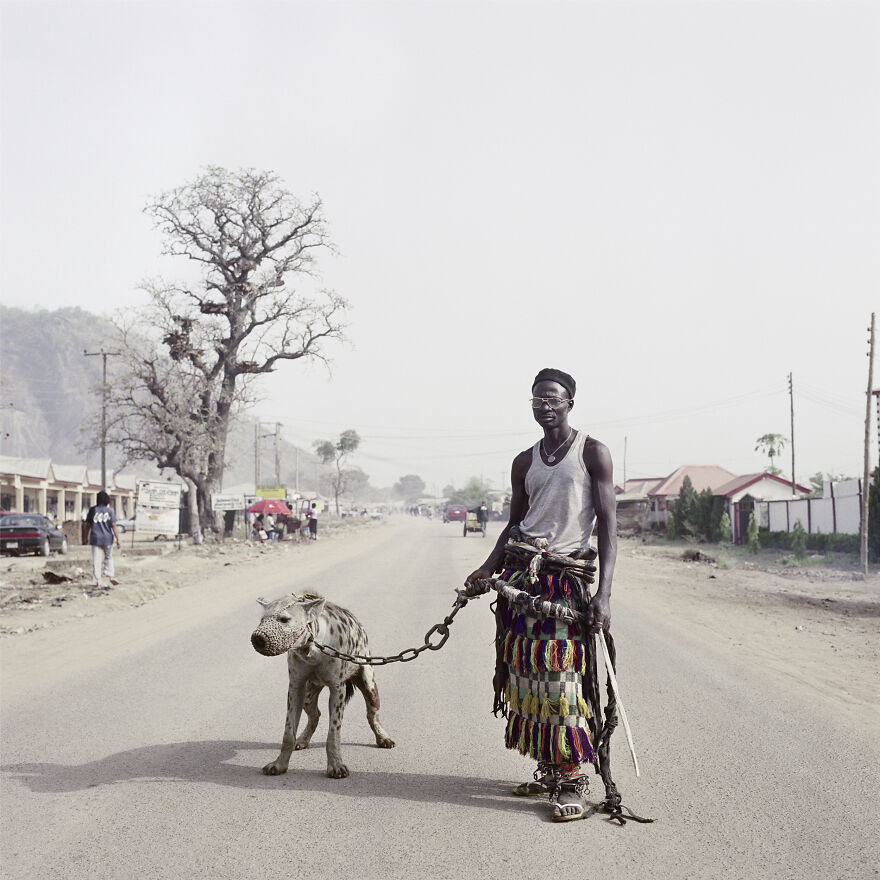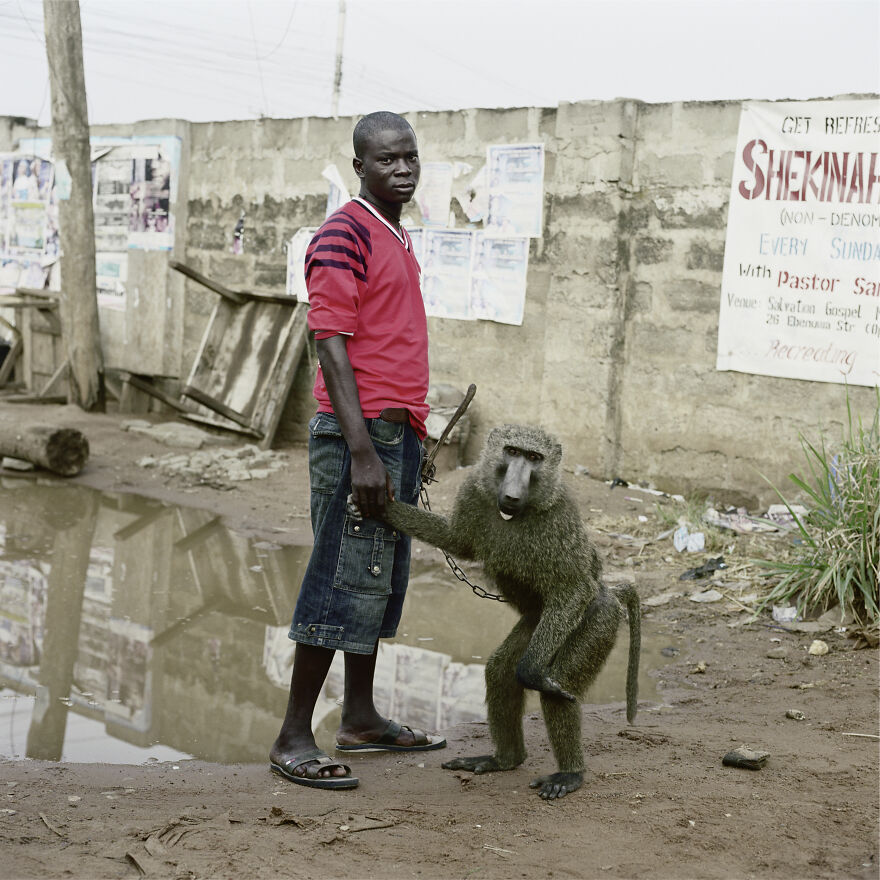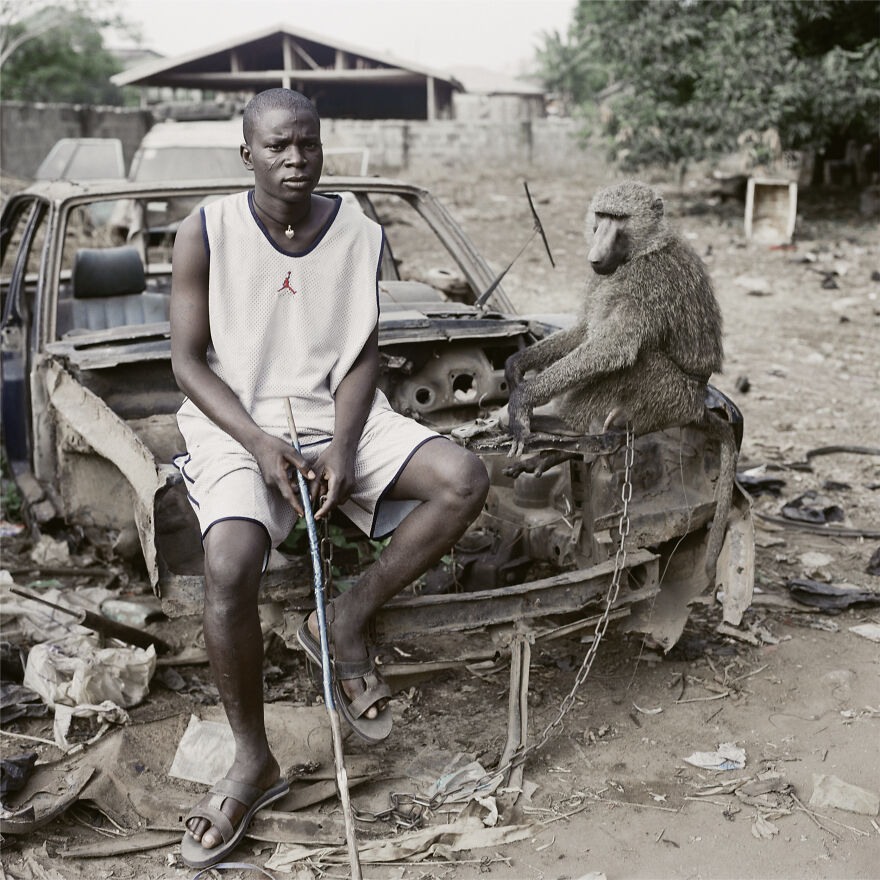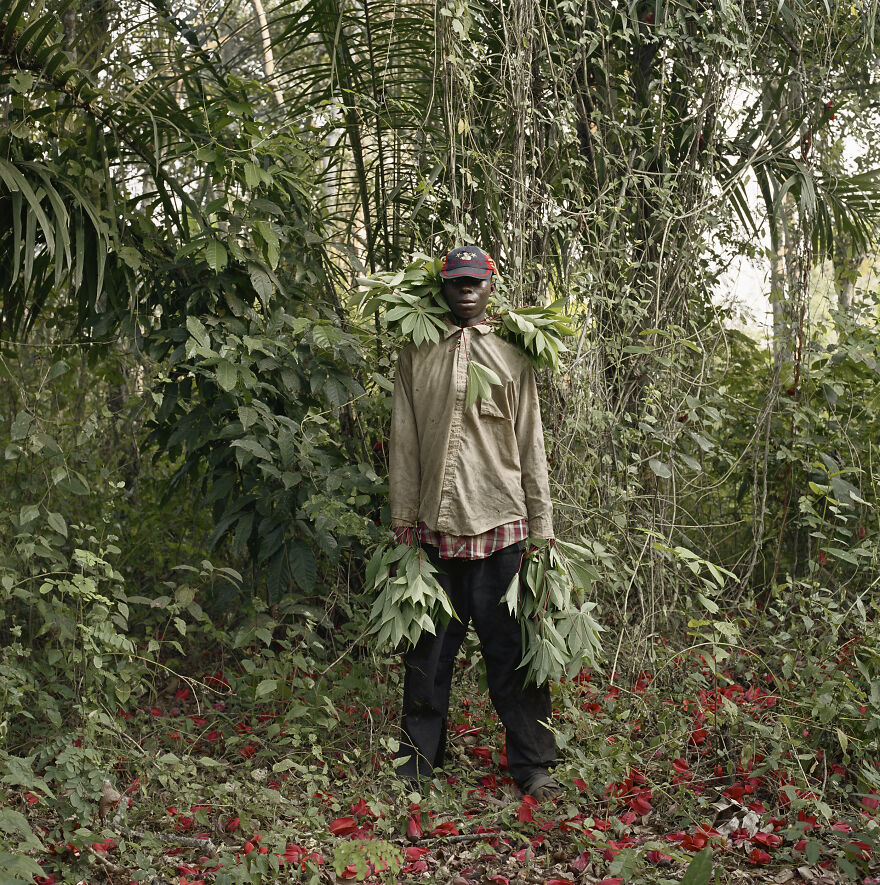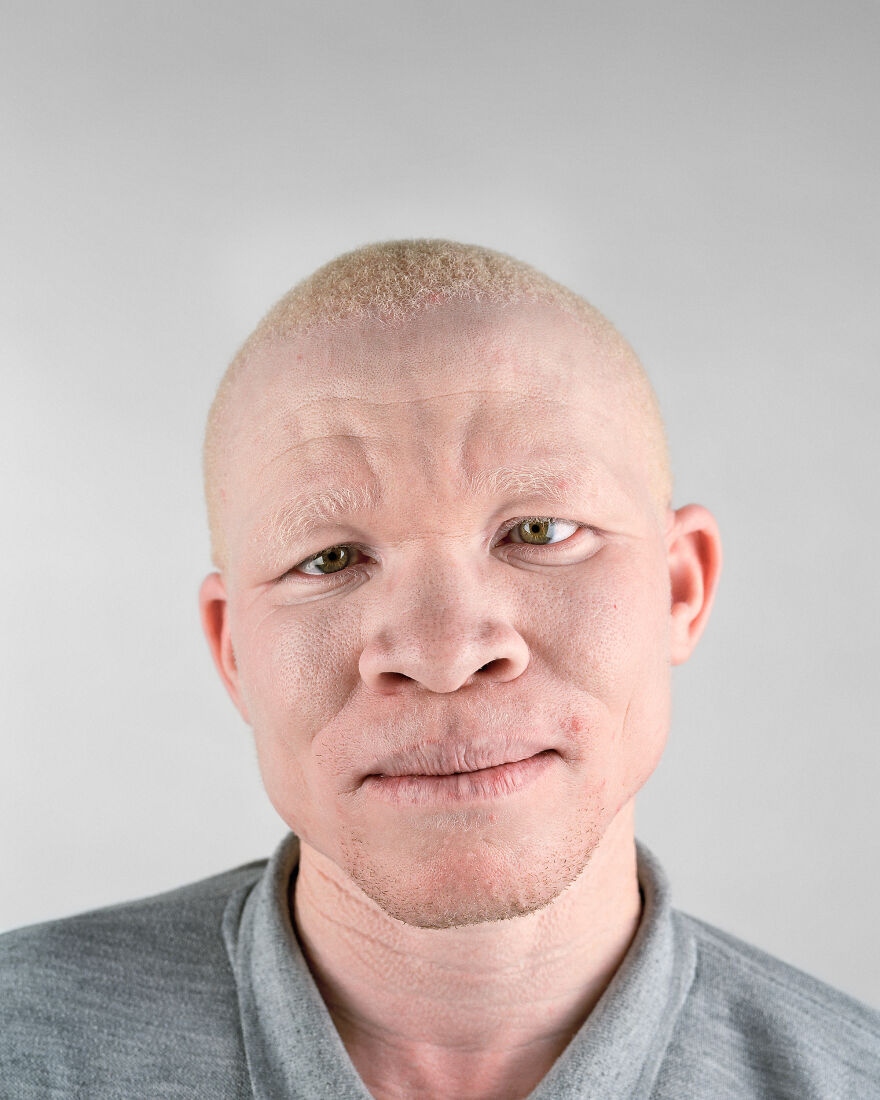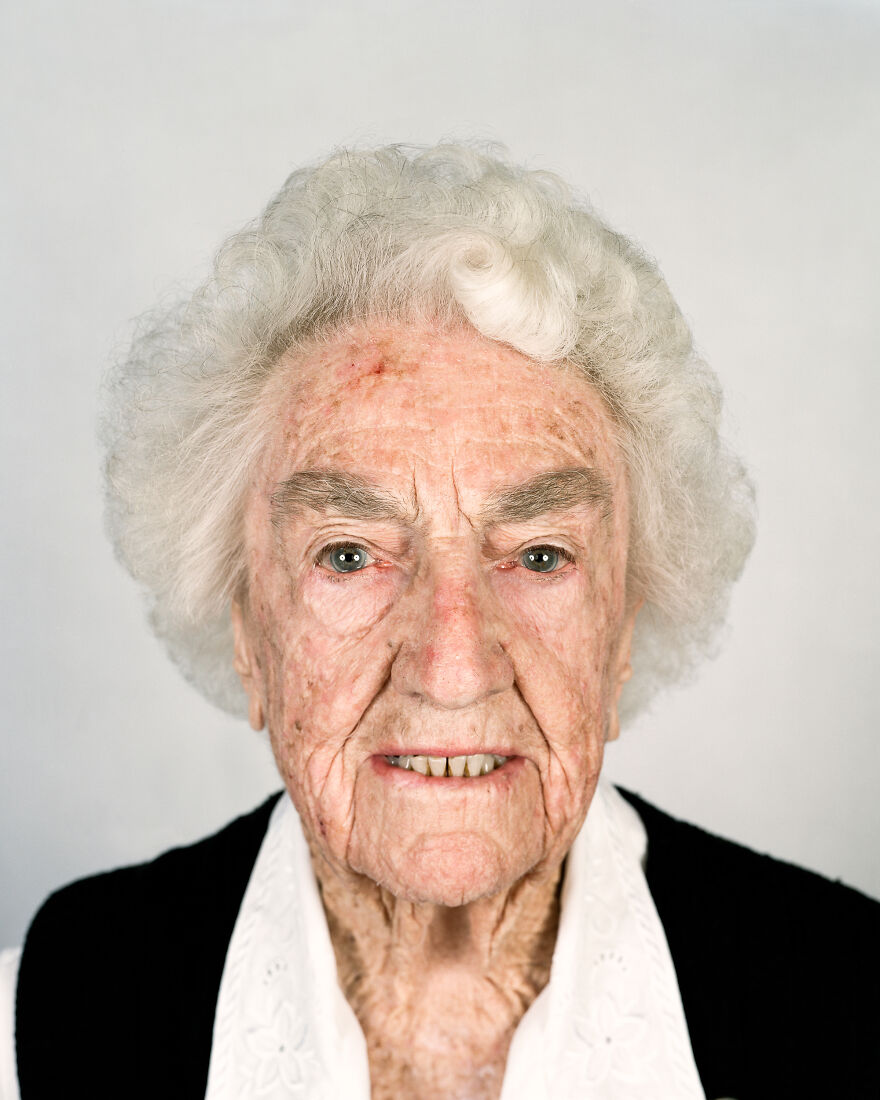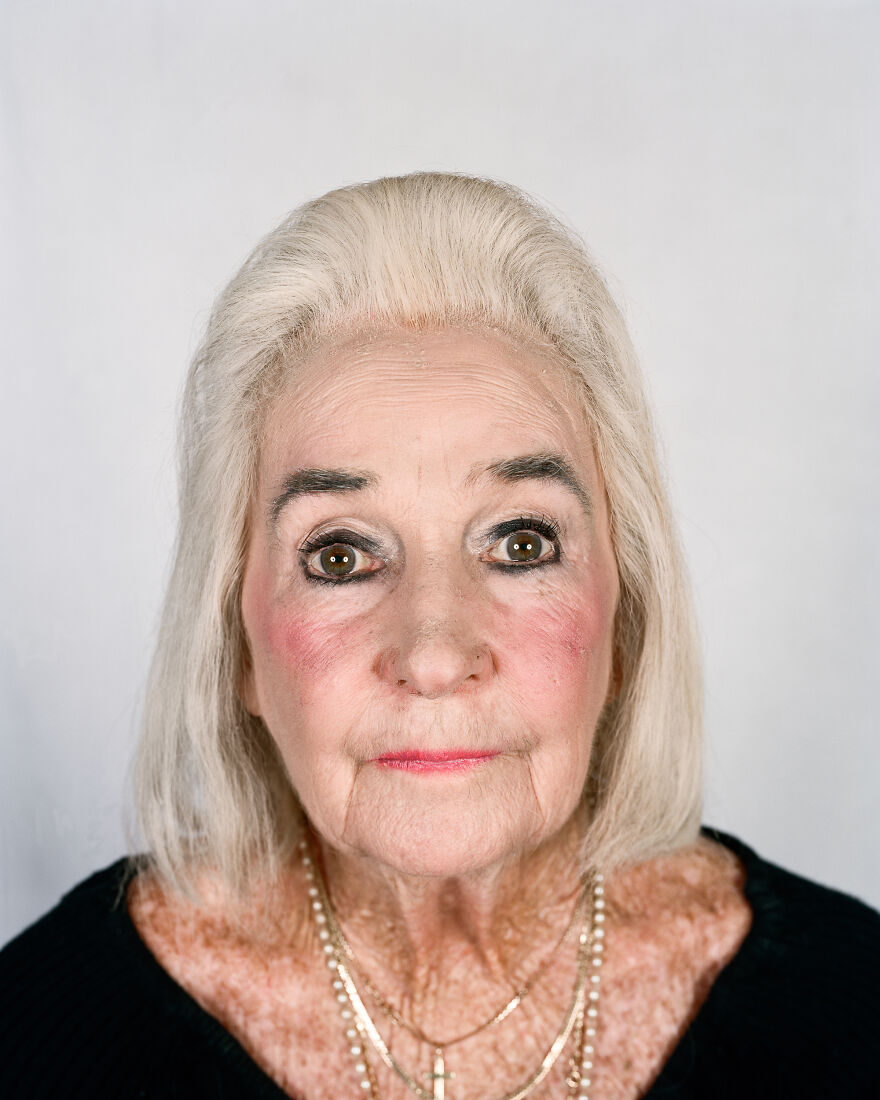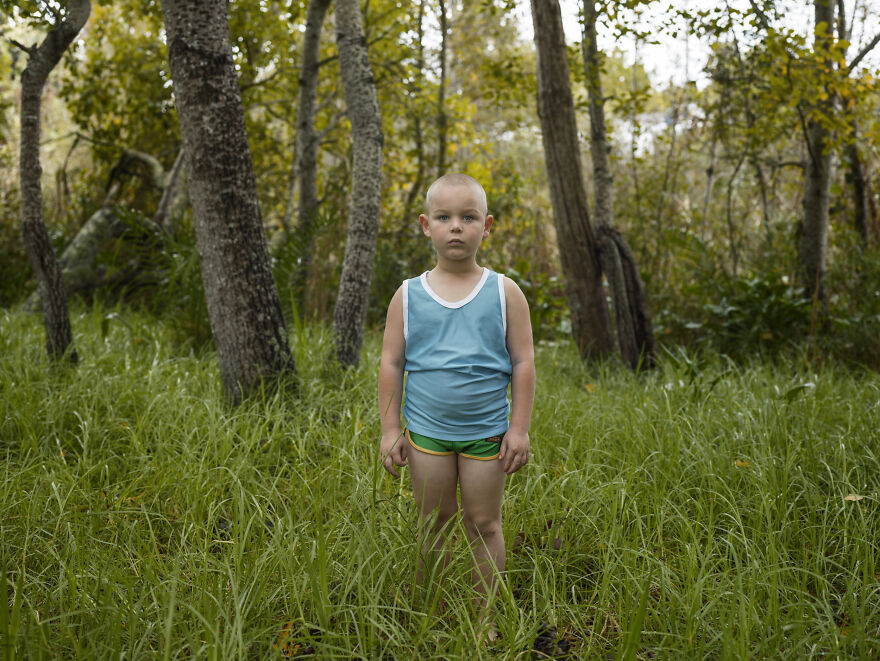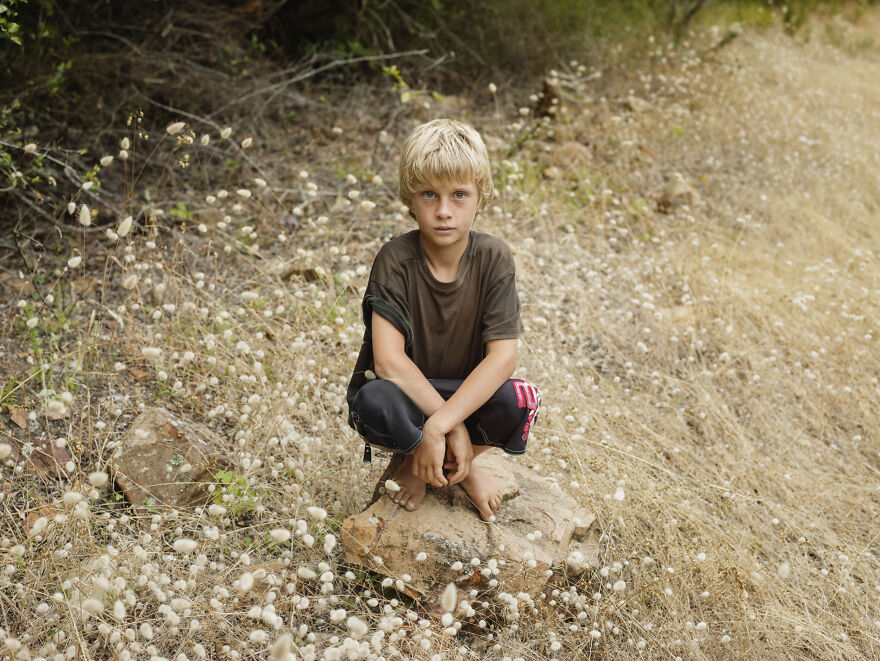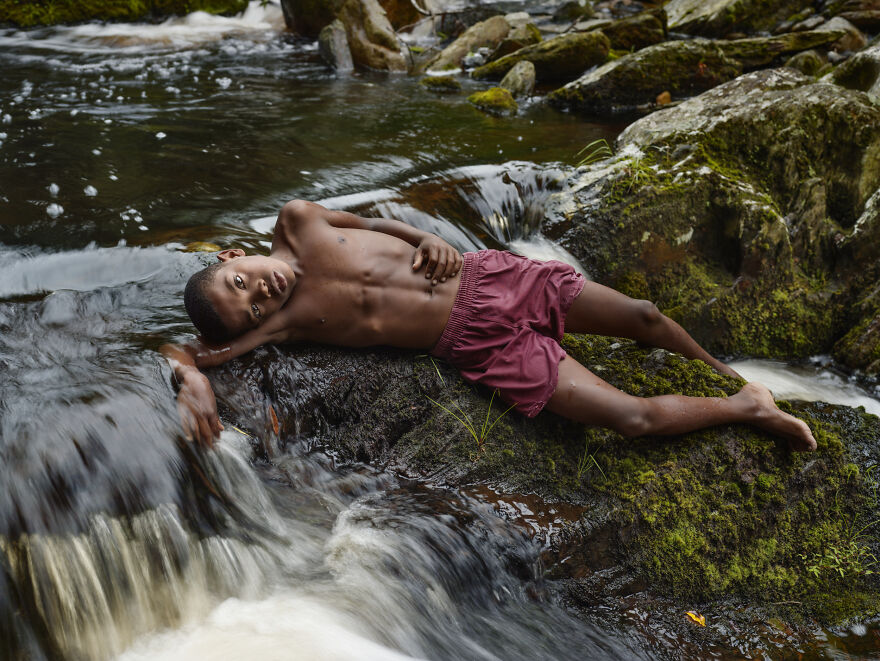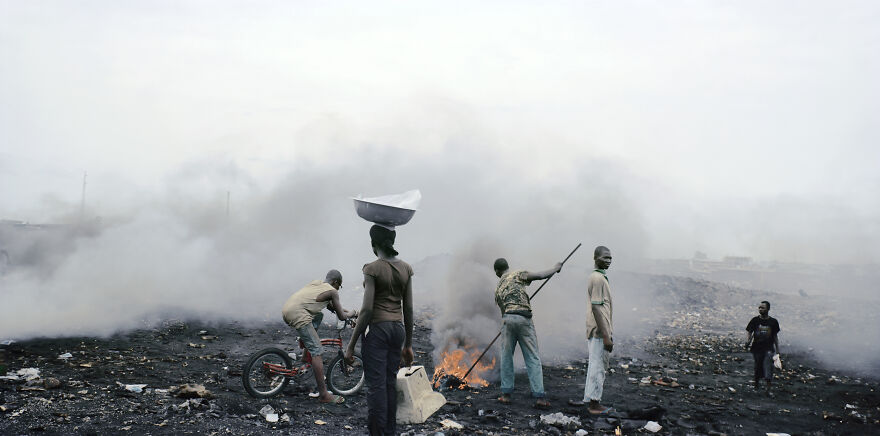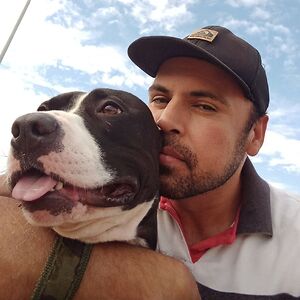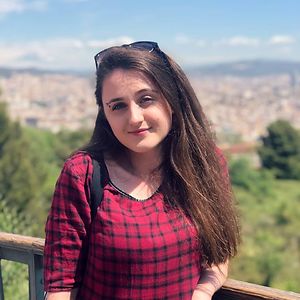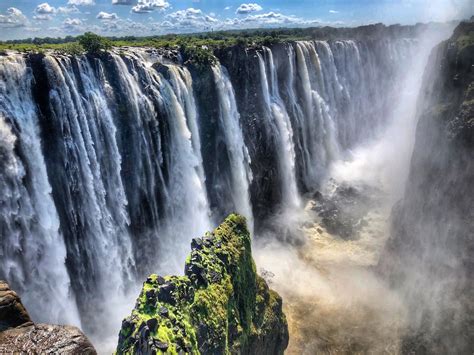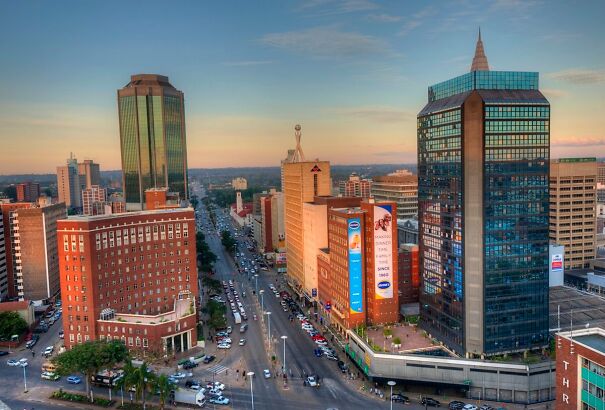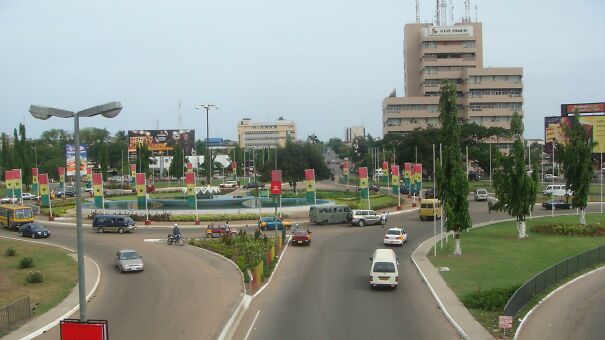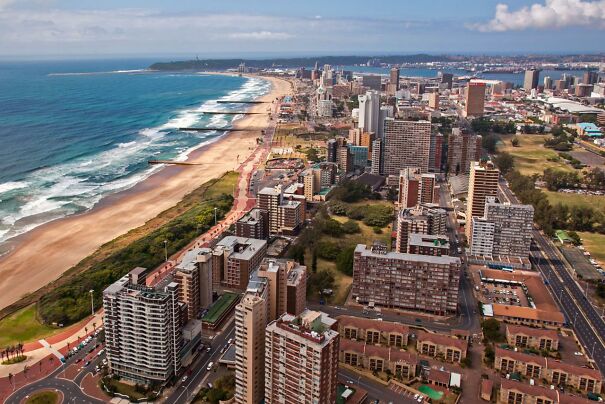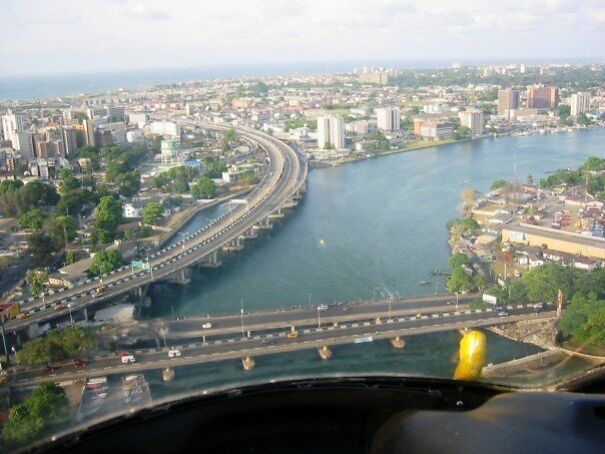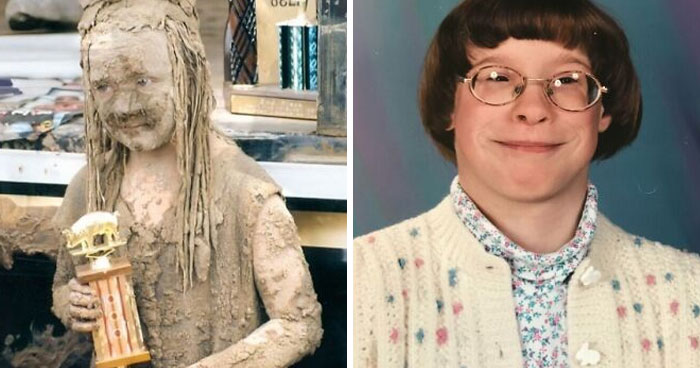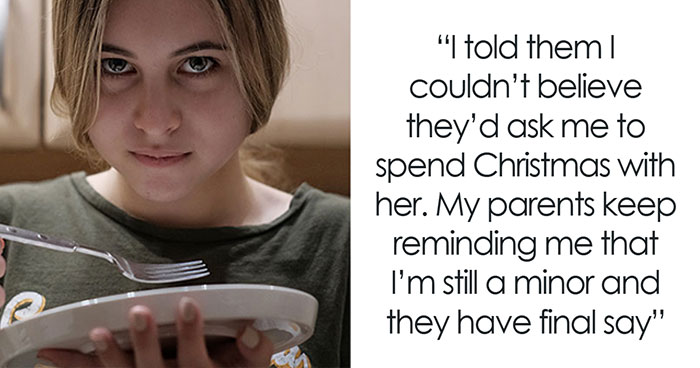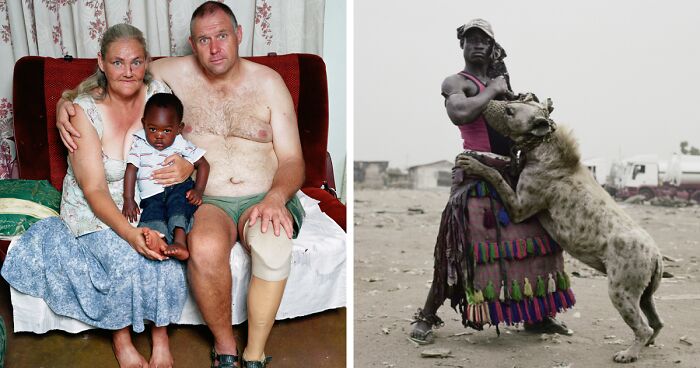
30 Unfiltered Photos By Pieter Hugo Show The Reality Of Marginalized People In Rwanda, Nigeria, Ghana, And South Africa
Pieter Hugo is a 44-year-old South African photographer born in Johannesburg, now based in Cape Town. Being a white African man and struggling to fit in, his subject of interest is Africa. He is well-known for exploring marginalized communities in Africa through his stark and provocative photography art.
The albinos, the blind, people with AIDS, the elderly, Ghanaian honey collectors, workers at the electronics dumpsite on the outskirts of Accra in Ghana, actors in the Nigerian movie industry known as Nollywood, Nigerian hyena handlers, and children who survived the 1994 Rwandan genocide are all among the subjects of Hugo's almost two decades of work.
His candid portraits show the world around him addressing culture, issues of class, identity, and privilege. The photographer described his work to Bored Panda as "direct, engaged, scrutinizing." We've collected the best of his powerful images. Don't forget to tell us what you think in the comments!
More info: pieterhugo.com | Instagram
This post may include affiliate links.
Abdulai Yahaya, Agbogbloshie Market, Accra, Ghana, 2010, "Permanent Error"
For real? Jesus, shallow and shameless pandering.
Load More Replies...MatthewSTrotman get a life and stop posting this where it doesn't belong
Pieter Hugo started off his career as a photojournalist, but being a "fly on the wall" didn't sit well with him. However, his work opened up possibilities to explore his interests and find his own style.
"I was not a particularly good photojournalist. I was useless at being a fly on the wall. I wanted to make work that was more considered. The problem of my presence I made into the crux of my practice—acknowledging my presence, acknowledging the energy and dynamics between myself and my subjects. I think of my portraiture as slow journalism," Hugo told Bored Panda.
Loyiso Mayga, Wandise Ngcama, Lunga White, Luyanda Mzantsi And Khungsile Mdolo After Their Initiation Ceremony, Mthatha, 2008, "Kin"
Most men are dressing like this now, it a fashion thing . It looks good
Initiation into what? I don't understand what we're witnessing here
These men look sick and tired. What can be done to bring hope to the hopeless?
That's what this is, isn't it? Having presentable clothing on and looking smart. Doesn't mean you will get a job and earn money for your family. It shows in their eyes.
Load More Replies...Mallam Galadima Ahmadu With Jamis, Nigeria, 2005, "The Hyena And Other Men"
What is going on in this photo and why would you take a picture of such dire cruelty?
They are called Hyena Men. I watched an interesting documentary on them awhile back. They basically take hyenas, and other "dangerous" animals, and perform with them. It's almost like a traveling carnival of sorts. There are some men that train baboons (I probably have the type wrong so don't quote me on that) to get money from the crowds. These men train the animals from the time they (the animals) are young and travel all over with their families... almost "gypsies" from back when. (I know "gypsies" and "gypsy" aren't correct words to use anymore but I'm using it as an example, sorry)
Load More Replies...i love animals and i wanna be a vet so i already know this animal has been abused or hurt cause its tail is down why do people hurt animals they can ruin the food chain even worse these animals will go excint and i would hate seeing that they are very beautiful creatures...
Just looks like a spotted hyena with a muzzle to me.Something you don't see every day
Such a big chain, so cruel. These animals should be free to roam, not made to entertain.
We asked Hugo what inspires his photography.
"I think inspiration comes in many forms. The challenge is to cultivate one’s perceptiveness to ideas. I do not have an overt goal. Mostly inspiration for work comes out of a desire to engage with the world. To look at it. To analyze it. To respond to it. Various projects have different ambitions. Some are concerned with the veracity of the portrait, others are born from a curious wanderlust."
Pieter And Maryna Vermeulen With Timana Phosiwa, "Messina/Musina"
From an article in The Guardian: "The white couple in the photograph rent a room from the black child's father. They are, as Hugo puts it in his catalogue interview, "lodgers in the servants' quarters of a black house, which is a complete reversal of how one pictures the situation of whites in South Africa". It is a portrait, then, of a world turned upside down."
Load More Replies...http://m.vam.ac.uk/collections/item/O1240317/pieter-and-maryna-vermeulen-with-photograph-hugo-pieter/
Load More Replies...Abdullahi Mohammed With Mainasara, Ogere-Remo, Nigeria, 2007, "The Hyena And Other Men"
Not trying to be mean, but of course Bellatrix would think that. Please don't downvote. It was a joke.
Load More Replies...Wow. He sure as hell doesn't look "marginalized"...he looks "badass".
Hugo said that his interest in highlighting the reality of marginalized communities across Africa developed organically: "At the beginning of my career, I often had commissions around Africa. While on commission (or while researching a commission), I would often stumble across ideas and subjects that I felt deserved a longer and more scrutinous approach."
Portraits of Africa mark an early stage of his career; Hugo said he now has a much more global worldview and has personal work in the USA, China, Mexico, UK, France, and Nepal, among other parts of the world.
At A Traffic Intersection, Johannesburg, 2011, "Kin"
Not A traffic stop, EVERY traffic stop in the whole country. Driving to the shops gets pretty depressing but there are only so many coins you can hand out in one day.
Is he asking for money what does he have in his hand some of the pictures are not explained as to what were seen I know they hyenas are muzzled That shows in the pictures but the others are not self explanatory not all of them
Looks like a tatty rag as if has cut himself.
Load More Replies...Naasra Yeti, Agbogbloshie Market, Accra, Ghana, 2009, "Permanent Error"
What does hell does permanent error mean that is written on various pictures
The whole world will look like this in the not too distant future unless we take action.
Revenge will be theirs. https://www.atlasobscura.com/places/agbogbloshie
Agbogblodhie is the largest waste bump in the world. It also means it is the most polluted area in the world and super poor and impoverished. Look it up it's devastating
This photo gallery illustrates Rwanda, Nigeria, Ghana, and South Africa through Hugo's lens and consists of portraits from various photography series the artist has collected over the years. Featured in this article are shots from some of Hugo's most popular series: Looking Aside, Kin, Permanent Error, The Hyena and Other Men, Wild Honey Collectors, 1994, and Messina/Musina.
In his project "Looking Aside," Hugo intimately captures people whose appearance makes us look aside: albinos, the blind, the elderly, and even his own family. He makes us confront our prejudice toward people who are unusual and different in some ways.
"Photography was being used by the state as a tool of classification and separation. All South Africans were required to carry a photo ID. My series turns this loaded compositional style on its head to document people marginalised by the glib visual propaganda of the ‘new,’ liberated South Africa," Hugo explains on his website the frame he deliberately chose for the series.
Garuba Yawu With Mora, Ogere-Remo, Nigeria, 2007, "The Hyena And Other Men"
Monkeys are treated with terrible cruelty in Africa. They are fed alcohol and made to perform tricks, kept in horrifying conditions and treated very badly.
The cruelty is relative. We don’t live like the people in these cases do, we would be traumatised by what they consider normal or actually not so bad. As far as the majority of these men are concerned they care about and for their animals, they do not have the same reference frame as us. The only real way to instigate a better understanding of animal welfare is to first improve human welfare.
Load More Replies...Careful! You might get downvoted for saying that!
Load More Replies...I would NEVER get that close to an animal that could rip my face off.
True but I’m pretty sure the person knows that too, and clearly he’s not concerned so neither so should you
Load More Replies...Yakubu Al Hasan, Agbogbloshie Market, Accra, Ghana, 2009, "Permanent Error"
It’s an interesting shot, it makes me want to find a photo series of the very wealthy areas of Ghana and understand the divide between rich and poor, see the contrast for myself.
I spent a month in Ghana and can confirm the contrast.
Load More Replies...This is where much of the electronic trash ends up. Remember that when you 𝘀𝗶𝗺𝗽𝗹𝘆 𝗺𝘂𝘀𝘁 get the newest gadget when the older one works perfectly fine.
"Permanent Error" depicts a massive dumpsite for technological waste from around the world on the outskirts of Ghana’s capital city, Accra, and the locals who collect and burn down the components to extract bits of valuable metals for resale, creating toxic waste and putting the area in danger.
"I think it is fair to say that Agbogbloshie is a dark and dirty monument to the digital age, to our faith in technology, and its built-in obsolescence. This idea of surplus and waste, which is key to our digital experience, is not one that many people seem comfortable addressing. Being in an environment like this, where geopolitical imbalances are being exploited to effectively dump waste on poor countries, it is hard not to take a political position," Hugo says.
Agbogbloshie Market, Zakaria Salifu, Accra, Ghana, 2010, "Permanent Error"
What's the issue...? Cultural segregation, issues of class, identity, privilege... Not to mention the environmental and food crisis in this area
Load More Replies...Agbogbloshie Market, Accra, Ghana 2009, "Permanent Error"
Just look at american homeless and we have more wealth than Africa.
Load More Replies...Where are the people that were angry about the animals? No compassion here?
"The Hyena and Other Men," shot in Nigeria, is the most popular series, which portrays a group of itinerants who perform with hyenas, baboons, and pythons to entertain crowds and sell traditional medicines. The striking photos explore the relationship between people and animals they have taken out of the wild as pups.
"The hyena men are a family and what they do with the animals has a long history and traditions. I don’t agree with it. But I can see the beauty in their relationships with the animals. And cruelty. I guess like all relationships, there are multiple dynamics at play. It's opaque to me. It’s difficult to take a judgmental position towards them. They are also dealing with economic realities different from most people in the world," Hugo told us.
Agbogbloshie Market, Accra, Ghana, 2010, "Permanent Error"
They burn down the components to extract bits of copper, brass, aluminum and zinc for resale.
Load More Replies...Seeing that im now curious how much carbon emissions comes out of burning out the plastics in all this stuff. Not to mention other byproducts of stuff being burned.
It’s interesting because whatever they are burning and for whatever reason, it would never happen in the developed world. Never would we stand around black toxic billowing smoke clouds like it’s no big deal. The contrast is stark.
I'm afraid it does happen in developed countries. People would for example burn cables to get copper out of them and sell it.
Load More Replies...Sachet water also referred to as pure water (in Nigeria).
Load More Replies...Paul Ankomah, Wild Honey Collector, Techiman District, Ghana, 2005, "Wild Honey Collectors"
I want to know why he has the leaves wrapped around his face. Is it so the bees don’t sting him and if so what kind of leaves are they.
"Wild Honey Collectors" captures men in central Ghana covered in leaves and plastic bags. They perform a very dangerous job of harvesting honey from wild bee colonies.
"Honey is harvested by burning the tree nests. As a result, the honey often has soot in it and can only be sold at local markets for low prices. It is a very destructive form of labour, but it is their only means of earning a living," Hugo writes on his website.
Aron Twala, Vrede, 2006, "Looking Aside"
This is self respect, a difficult concept in such a poverty stricken environment.
Regina Kambule, Johannesburg, 2003, "Looking Aside"
Being an albino in Africa can be very hard. They are outcasts in many places because of their "weird" looks, meaning they have to beg for food and do not have money to buy any protection against the relentless sun. Skin cancer is very common. Even worse, in some countries they are at risk of being killed for body parts to be used in witchcraft.
The worst part for albinos and often also twins, is being considered witches themselves. Some parents even blame them for being the cause of their own poverty and being jobless. In Nigeria, as of 2021, this is surely still a thing.
Load More Replies..."1994" is a series that captures children from South Africa and Rwanda born after 1994. Both countries were marked by major historical events in 1994 and the series depicts a generation of children growing up in the post-revolutionary era.
"Most of the images were taken in villages around Rwanda and South Africa. There’s a thin line between nature being seen as idyllic and as a place where terrible things happen—permeated by genocide, a constantly contested space. Seen as a metaphor, it’s as if the further you leave the city and its systems of control, the more primal things become. At times the children appear conservative, existing in an orderly world; at other times there’s something feral about them, as in Lord of the Flies, a place devoid of rules. This is most noticeable in the Rwanda images where clothes donated from Europe, with particular cultural significations, are transposed into a completely different context."
South Africa, 2016, "1994"
Rwanda, 2014, "1994"
The series "Kin" captures the intimate and public South Africa through portraits, landscapes, and still lifes and explores its deeply rooted social issues.
"South Africa is such a fractured, schizophrenic, wounded and problematic place. It is a very violent society; the scars of colonialism and apartheid still run deep. Issues of race and cultural custodianship permeate every aspect of society, and the legacy of forced racial segregation casts a long shadow. How does one live in this society? How does one take responsibility for history, and to what extent should one try? How do you raise a family in such a conflicted society?" Hugo writes.
The artist took a similar approach in his project about South Africa's northernmost town on the border with Zimbabwe, Musina. He reflects the wounds and scars of race, class, and nationality that persist there.
Rwanda, 2014, "1994"
Rwanda, 2015, "1994"
David, you need to chill. No one here is being racist, no one here is ignoring the pain. All that Arctic was trying to say is she looks lovely. It's not an insult. Take a minute to breathe and stop attacking well-meaning people.
Load More Replies...David Retsler - You cannot assume that she is downtrodden, or even poor, from the photo and her expression. THAT is what makes YOU racist. She may have been contemplating something; she may have been instructed for the photo to look sad or concerned about something that happened in her life - no one seeing this photo has any idea of where she's coming from in the slightest way. The photographer probably took many pictures of her, including smiling and happy ones. That's what professional photographers do. This is the one he chose out of many, for emotional impact no doubt. To assume negative aspects of someone you know nothing about is very limited thinking. And you seem to be continually defending yourself about this matter, of which you are 100% naive.
"The most challenging part of my work is editing. Photographers are gnarly, terrible editors," Hugo said. "The most rewarding part of my work is that it very rarely bores me. It keeps me stimulated and curious."
Agbogbloshie Market, Accra, Ghana, 2010, "Permanent Error"
Dayaba Usman With The Monkey Clear, Nigeria, 2005, "The Hyena And Other Men"
The monkey resting it's arm on the man's leg, the chain, the golden watch and the dead look in his eyes... This picture is heartbreaking on so many levels.
Not to mention the stick by his feet, which I am guessing is there to control the baboon with.
Load More Replies...Hugo's controversial work has sparked contrasting reactions around the world, but he remains one of the best South African photographers for his honest and direct approach.
""I’m always surprised by the issues my detractors take with my work. Dialogue is good, right? Having conversations about difficult topics is necessary. If my work provokes debate, I'm happy. It means it is relevant," he said.
His artwork has been shown in major solo exhibitions across the world's best museums such as Museu Coleção Berardo in Lisbon, Museum für Kuns und Kulturgeschichte in Dortmund, The National Portrait Gallery in London, the Institute of Modern Art in Brisbane, Multimedia Art Museum in Moscow, Ludwig Museum in Budapest, Fotografiska in Stockholm, MAXXI in Rome, and more as well as many group exhibitions at institutions including Tate Modern, the Folkwang Museum, Fundação Calouste Gulbenkian, and the São Paulo Bienal.
His photographs have landed in prominent public and private collections, among them MOMA NY, V&A, Centre Pompidou, J Paul Getty Museum, and The Rijks Museum. In 2018, Hugo received the Discovery Award at the Rencontres d'Arles Festival and the KLM Paul Huf Award and in 2011, the Seydou Keita Award at the Rencontres de Bamako African Photography Biennial.
The Hyena Men Of Abuja, Nigeria, 2005, "The Hyena And Other Men"
Entertainment, just like animals used in circus.
Load More Replies...This is horrendous. Let wild animals be wild. Don't muzzle them and clothe them and sit yoit kid on them.
@David Retsler - I'm unsure if you didn't get what they were saying, genuinely or you're just being a racist troll, while calling someone else racist. I'll just assume that you misunderstood. Artic Fox Lover is referring to dogs, cats, etc and how people in more "civilized" countries keep their pets. They spay and neuter them (cut off their genitals), feed them dry kibble full of grains that dogs, at least, can't even process (eat dried up processed foods) and most pet have their animals wear a collar of some kind that usually has a tag showing who owns them (wearing a strip of cloth and/or leather...). I may not completely agree with what the hyena men do but I do see the irony in the the person's post about letting wild animals be wild. I understand completely that there's a huge difference in a domestic dog or cat and a group of men who, sometimes, take a baby or young animal from its mother to train for entertainment.
Load More Replies...Those poor hyenas! They are my fav animals. They do not deserve to be treated like this!
South Africa, 2015, "1994"
Abdulai Yahaya, Agbogbloshie Market, Accra, Ghana, 2010, "Permanent Error"
Coming to a town like yours if we don't do something about the climate.
Mummy Ahmadu And A Snake Charmer With A Rock Python, Abuja, Nigeria, 2005, "The Hyena And Other Men"
Snake never friend!! Looks like the kid is petting it’s eyeball, and if I wasn’t afraid that would upset it, that would seriously amuse me!!
Load More Replies...Nura Garuba And Friend With Their Monkey, Abuja, Nigeria, 2005, "The Hyena And Other Men"
For ducks sake... they're pets just that the owners won't let them wander about so as not to get harmed by parents... peradventure it scares kids
Load More Replies...Martin Kofi, Wild Honey Collector, Techiman District, Ghana, 2005, "Wild Honey Collectors"
The work of a Bee Keeper is difficult indeed even with the luxury of modern Bee Keepers Garb. But those Bees are often Aggressive and they have no protection other than the flimsy garments they are wearing.
Burning the bees nests is also destroying our planet... Can't someone teach them the easier way to harvest honey?
Issaku Moses, Agbogbloshie Market, Ghana, 2009, "Permanent Error"
They are surrounded by filth and wonder why they die. Education would solve many of their problems, much more useful than grudging compliments.
Al Hasan Abukari, Agbogbloshie Market, Accra, Ghana, 2009, "Permanent Error"
it's interesting to see this. I have visited Ghana a few times (I have family there) I only see the great rich parts because if my families social status. It's very eye opening about the poverty there. I will certainly talk to my family about it.
This whole post has been incredibly depressing Not one single smiling face. Everyone just so poor. You wonder how these people live from day to day.
Welcome to the rest of the world Ginny Swart. Yes, there are people, lots of them, out there that live just to survive to the next day. It may be depressing for you, but for them, it's life.
Load More Replies...Agbogbloshie Market, Accra, Ghana, 2010, "Permanent Error"
Rwanda, 2014, "1994"
Abu Kikan With Frayo, Asaba, Nigeria, 2007, "The Hyena And Other Men"
Agbogbloshie Market, Accra, Ghana, 2010, "Permanent Error"
Rwanda, 2015, "1994"
Rwanda, 2014, "1994"
Nokhanyo And Ayabukwa Mabuse, Langa, 2013, "Kin"
Al Hasan, Agbogbloshie Market, Accra, Ghana, 2009, "Permanent Error"
Yaw Francis, Agbogbloshie Market, Accra, Ghana, 2009, "Permanent Error"
Rwanda, 2015, "1994"
South Africa, 2016, "1994"
so pretty. but i have a question why is there hair yellow-ish are they albinos??
No they're not albinos. It's just a rare genetic trait. I also have some African relatives whose both parents are black with dark hair, but they're light skinned and fair haired like the children in the picture.
Load More Replies...Steven Mohapi, Johannesburg, 2003, "Looking Aside"
Agbogbloshie Market, Accra, Ghana, 2010, "Permanent Error"
Jatto With Mainasara, Ogere-Remo, Nigeria, 2007, "The Hyena And Other Men"
awful, cruel...I cannot comprehed why should poverty be equal with cruelty
Abu Kikan With Ajasco, Asaba, Nigeria, 2007, "The Hyena And Other Men"
South Africa, 2016, "1994"
I don't think "lovely" with your little heart emoji would be how most people would describe a child draped in dirty rags sleeping on a rock struggling to survive but ok.
Load More Replies...Aissah Salifu, Agbogbloshie Market, Accra, Ghana, 2010, "Permanent Error"
Alhaji Hassan With Ajasco, Ogere-Remo, Nigeria, 2007, "The Hyena And Other Men"
It has teeth, they're just hard to see against the light background.
Load More Replies...Mummy Ahmadu And Mallam Mantari Lamal With Mainasara, Abuja, Nigeria, 2005, "The Hyena And Other Men"
As I commented before, I may not agree with what the hyena men do but I don't feel like I can judge anyone on what they do to feed their family. A lot of men that do this literally live off the money the people give them for the performance. I just can't sit in my comfortable home with a full stomach and judge.
Know what else is so wrong? The fact that people in Africa are starving and dying of thirst while the average American throws away about 250 pounds of food every year--not to mention around $62,000,000.000 every year in coins.
Load More Replies...Abdullahi Mohammed With Gumu, Ogere-Remo, Nigeria, 2007, "The Hyena And Other Men"
Abdullahi Mohammed With Mainasara, Lagos, Nigeria, 2007, "The Hyena And Other Men"
Abdullahi Mohammed With Mainasara, Lagos, Nigeria, 2007, "The Hyena And Other Men"
Mallam Umaru Ahmadu With Amita, Nigeria, 2005, "The Hyena And Other Men"
Garuba Yaku With Rando, Nigeria, 2005, "The Hyena And Other Men"
Mallam Mantari Lamal With Mainasara, Nigeria, 2005, "The Hyena And Other Men"
Abdullahi Ahmadu With Emeka, Ibusa, Nigeria, 2007, "The Hyena And Other Men"
Steven Amoako, Wild Honey Collector, Techiman Distric, Ghana, 2005, "Wild Honey Collectors"
'bobo' On The Muizenberg Beachfront Where He Sleeps, 2008, "Kin"
Mkhonzemi Welcome Makma, Pietermaritzburg, 2005, "Looking Aside"
Vuyiswa Kama, Cape Town, 2003, "Looking Aside"
South Africa, 2016, "1994"
South Africa, 2016, "1994"
Abdullahi Mohammed With Wild Dog And Antelope Carcass, Ogere-Remo, Nigeria, 2007, "The Hyena And Other Men"
Mallam Mantari Lamal With Mainasara, Nigeria, 2005, "The Hyena And Other Men"
I am truly amazed by all of the commenters more concerned with the wellbeing of a hyena or baboon than are concerned for the people. Makes me sick.
Motorbike Rider With Amiloo, Nigeria, 2005, "The Hyena And Other Men"
War Memorial, Springs, 2012, "Kin"
Green Point Common, Cape Town, 2013, "Kin"
Thulani Magwaza, Kwamashu 2005, "Looking Aside"
Justus Wilhelm Reitz, Carnarvon, 2005, "Looking Aside"
Vernon Barnard, Somerset West, 2005, "Looking Aside"
South Africa, 2016, "1994"
South Africa, 2016, "1994"
Agbogbloshie Market, Accra, Ghana, 2010, "Permanent Error"
Mallam Galadima Ahmadu With Jamis, Abuja, Nigeria, 2007, "The Hyena And Other Men"
Kwadwo Konado, Wild Honey Collector, Techiman District, Ghana, 2005, "Wild Honey Collectors"
Takyi Isaac, Wild Honey Collector, Techiman District, Ghana, 2005, "Wild Honey Collectors"
Rwanda, 2015, "1994"
Rwanda, 2014, "1994"
Katie Moerane, Tembisa, 2006, "Looking Aside"
South Africa, 2016, "1994"
David Akore, Agbogbloshie Market, Accra, Ghana, 2010, "Permanent Error"
Animal Handler With Ajasco, Lagos, Nigeria, 2007, "The Hyena And Other Men"
Jatto With Mainasara, Ogere-Remo, Nigeria, 2007, "The Hyena And Other Men"
Mohammed Rabiu With Jamis, Asaba, Nigeria, 2007, "The Hyena And Other Men"
Mora, Ajasco And Handler, Lagos, Nigeria, 2007, "The Hyena And Other Men"
Abdullahi Ahmadu With Mainasara, Nigeria, 2005, "The Hyena And Other Men"
John Addai, Wild Honey Collector, Techiman District, Ghana, 2005, "Wild Honey Collectors"
Rwanda, 2015, "1994"
Rwanda, 2015, "1994"
Rwanda, 2015, "1994"
Rwanda, 2015, "1994"
Name Withheld, Langaville, Ekurhuleni, 2012, "Kin"
Siphiwe Mafilika, Diepsloot, 2011, "Kin"
Thembile Mabaso, Johannesburg, 2003, "Looking Aside"
Vunjani Sonjica, Worcester, 2005, "Looking Aside"
Anna Hugo, Cape Town, 2006, "Looking Aside"
South Africa, 2016, "1994"
South Africa, 2016, "1994"
Amama Suleiman, Agbogbloshie Market, Ghana, 2009,"Permanent Error"
Ibrahim Sulley, Agbogbloshie Market, Accra, Ghana, 2009, "Permanent Error"
Saani, Agbogbloshie Market, Accra, Ghana, 2009, "Permanent Error"
Agbogbloshie Market, Accra, Ghana, 2010, "Permanent Error"
Agbogbloshie Market, Accra, Ghana, 2009, "Permanent Error"
Mallam Galadima Ahmadu With Jamis, Nigeria, 2005, "The Hyena And Other Men"
Umoru Murtala With School Boy, Asaba, Nigeria, 2007, "The Hyena And Other Men"
Umoru Murtala With School Boy, Asaba, Nigeria, 2007, "The Hyena And Other Men"
John Kwesi, Wild Honey Collector, Techiman District, Ghana, 2005, "Wild Honey Collectors"
Vinkosi Sigwegwe, Cape Town, 2002, "Looking Aside"
Just a neutral expression. If he smiles, or makes a confused face, the lines will be more pronounced.
Load More Replies...Kay Whitfield, Cape Town, 2006, "Looking Aside"
Sheila Ward Smith, Sea Point, 2006, "Looking Aside"
South Africa, 2016, "1994"
South Africa, 2016, "1994"
South Africa, 2016, "1994"
Agbogbloshie Market, Accra, Ghana, 2010, "Permanent Error"
Probably gonna get very downvoted, but I'm a native African (nigerian specifically) and while these pics are acc really good, I don't particularly like them because they just add to that idea that Africa is this huge third world country. Maybe the photographer couldv'e gotten in a few shots that really showed what cities in Africa are like, with like cinemas and cars and stuff. Kudos to the photographer though.
I saw a documentary on this issue recently, I think it's called "stop filming us". Really made me think, since the dominant narrative always centres around those "those poor Africans" while there seems to be an enormous amount of undiscovered cultural diversity
Load More Replies...I'm not sure what is more shocking, these photos or how some of you are commenting. "Cuteeee <3" on photos of children starving. "Pretty dress!!!" on photos of women digging through garbage struggling to survive. You've missed the entire point of these photos. These people want their struggle documented, shown to the world. They are sorting and surviving off our garbage. Anyone reading bored panda just has no context on what they are going through, including myself. None of us can fathom what they need to do to survive and the massive inequality between the different classes in the same small area.
I think you can see the beauty of a dress whilst still seeing the poverty that they're experiencing. Furthermore, it's really hard to judge someone's perspective of a photo from one comment they post - because you can never know their thoughts unless you have a conversation with them.
Load More Replies...As I sit here ordering a lavish take-away; I will never complain about my life again. People like me need these reminders about how others live to be grateful for what we've got. I keep complaining that my wages are to low. Now I just feel ungrateful
In all honesty, the pictures with the trash everywhere and the people with chained animals just angers me. I don’t have any context for these photos so I don’t know why it’s like that.
Reading through this post, there are quite a few people who are commenting on the animal cruelty with the hyenas... among other things. All I'm asking, or trying to point out is.... yes, a lot of us don't agree with how these animals (hyenas etc) are being treated, yes, we would like them to run free in a reserve- safe from humans.... But, these people are just purely trying to survive, eat, raise a family etc... and they are doing whatever they can to do that. It's easy to comment when we are sitting behind our screens - no doubt, most are from 1st world countries.... not living in poverty/corruption. These people are trying to survive, and are doing their best to achieve that.... If I get down voted, that's fine. I just wish people would step back and try and have some understanding/compassion to these people and their circumstances.
Africa needs investments. Africa needs stable governments. Africa needs foreign exchange, esp dollars. They certainly don't need pity. These photographs unfortunately cement the stereotype that Africa is a hellhole. Show these images, along with those pictures too....
Interview with photographer that explains the hyena and baboon pictures. https://www.anothermanmag.com/life-culture/9906/the-story-behind-the-hyena-men
Load More Replies...I find it odd that the commentary is so first world most sit in judgement of hopeless people living in a pile of garbage. There isn't clean drinking water, or reliable food, sanitation or opportunity.
Probably gonna get very downvoted, but I'm a native African (nigerian specifically) and while these pics are acc really good, I don't particularly like them because they just add to that idea that Africa is this huge third world country. Maybe the photographer couldv'e gotten in a few shots that really showed what cities in Africa are like, with like cinemas and cars and stuff. Kudos to the photographer though.
I saw a documentary on this issue recently, I think it's called "stop filming us". Really made me think, since the dominant narrative always centres around those "those poor Africans" while there seems to be an enormous amount of undiscovered cultural diversity
Load More Replies...I'm not sure what is more shocking, these photos or how some of you are commenting. "Cuteeee <3" on photos of children starving. "Pretty dress!!!" on photos of women digging through garbage struggling to survive. You've missed the entire point of these photos. These people want their struggle documented, shown to the world. They are sorting and surviving off our garbage. Anyone reading bored panda just has no context on what they are going through, including myself. None of us can fathom what they need to do to survive and the massive inequality between the different classes in the same small area.
I think you can see the beauty of a dress whilst still seeing the poverty that they're experiencing. Furthermore, it's really hard to judge someone's perspective of a photo from one comment they post - because you can never know their thoughts unless you have a conversation with them.
Load More Replies...As I sit here ordering a lavish take-away; I will never complain about my life again. People like me need these reminders about how others live to be grateful for what we've got. I keep complaining that my wages are to low. Now I just feel ungrateful
In all honesty, the pictures with the trash everywhere and the people with chained animals just angers me. I don’t have any context for these photos so I don’t know why it’s like that.
Reading through this post, there are quite a few people who are commenting on the animal cruelty with the hyenas... among other things. All I'm asking, or trying to point out is.... yes, a lot of us don't agree with how these animals (hyenas etc) are being treated, yes, we would like them to run free in a reserve- safe from humans.... But, these people are just purely trying to survive, eat, raise a family etc... and they are doing whatever they can to do that. It's easy to comment when we are sitting behind our screens - no doubt, most are from 1st world countries.... not living in poverty/corruption. These people are trying to survive, and are doing their best to achieve that.... If I get down voted, that's fine. I just wish people would step back and try and have some understanding/compassion to these people and their circumstances.
Africa needs investments. Africa needs stable governments. Africa needs foreign exchange, esp dollars. They certainly don't need pity. These photographs unfortunately cement the stereotype that Africa is a hellhole. Show these images, along with those pictures too....
Interview with photographer that explains the hyena and baboon pictures. https://www.anothermanmag.com/life-culture/9906/the-story-behind-the-hyena-men
Load More Replies...I find it odd that the commentary is so first world most sit in judgement of hopeless people living in a pile of garbage. There isn't clean drinking water, or reliable food, sanitation or opportunity.

 Dark Mode
Dark Mode 

 No fees, cancel anytime
No fees, cancel anytime 






